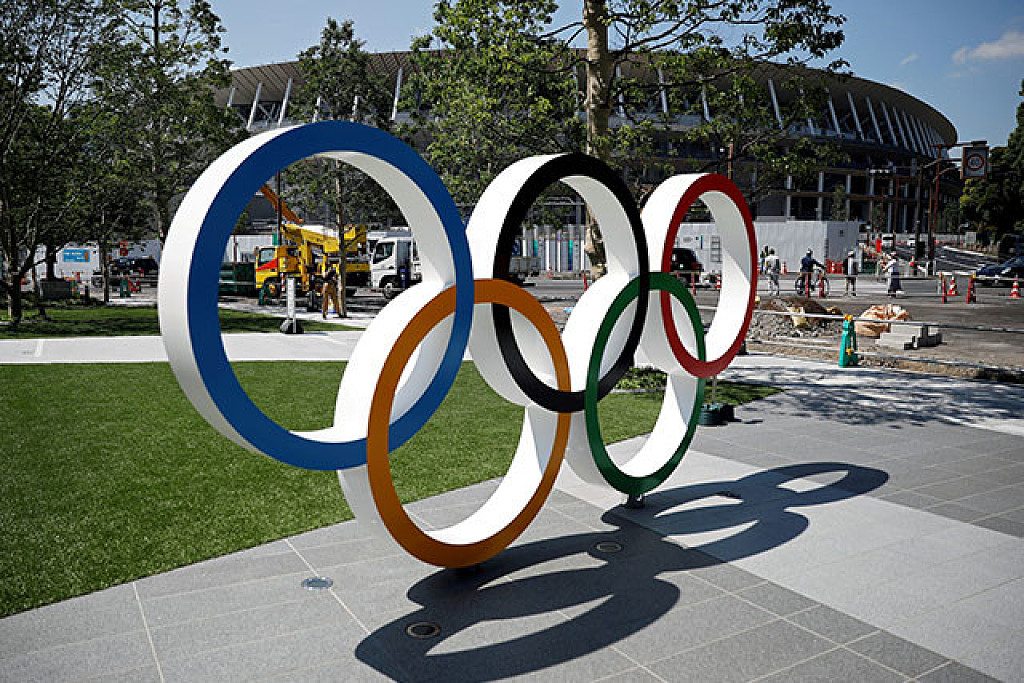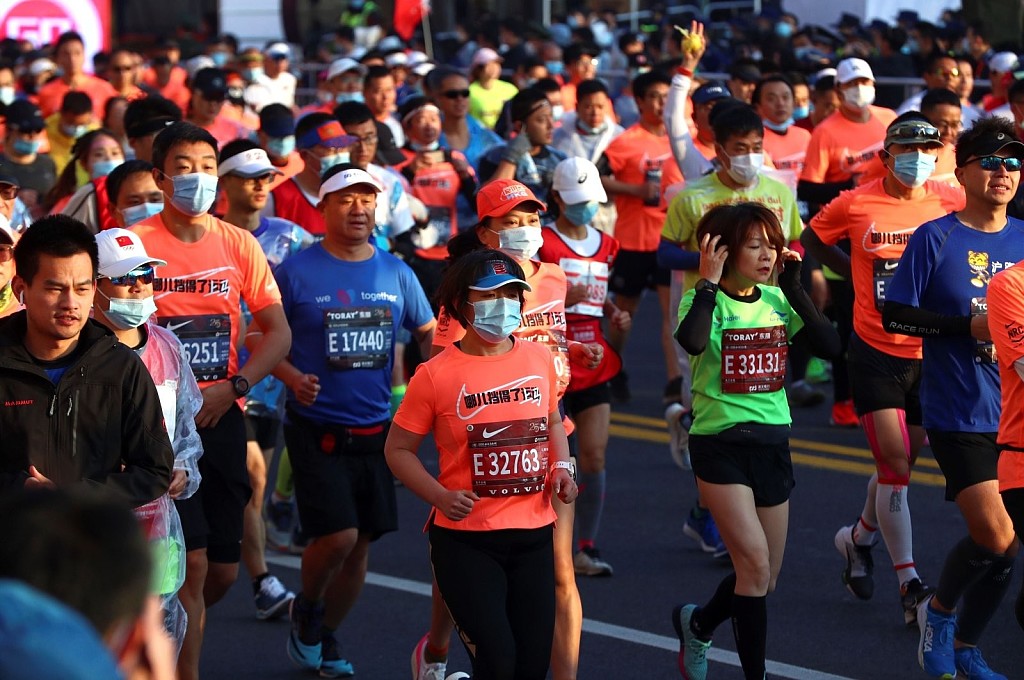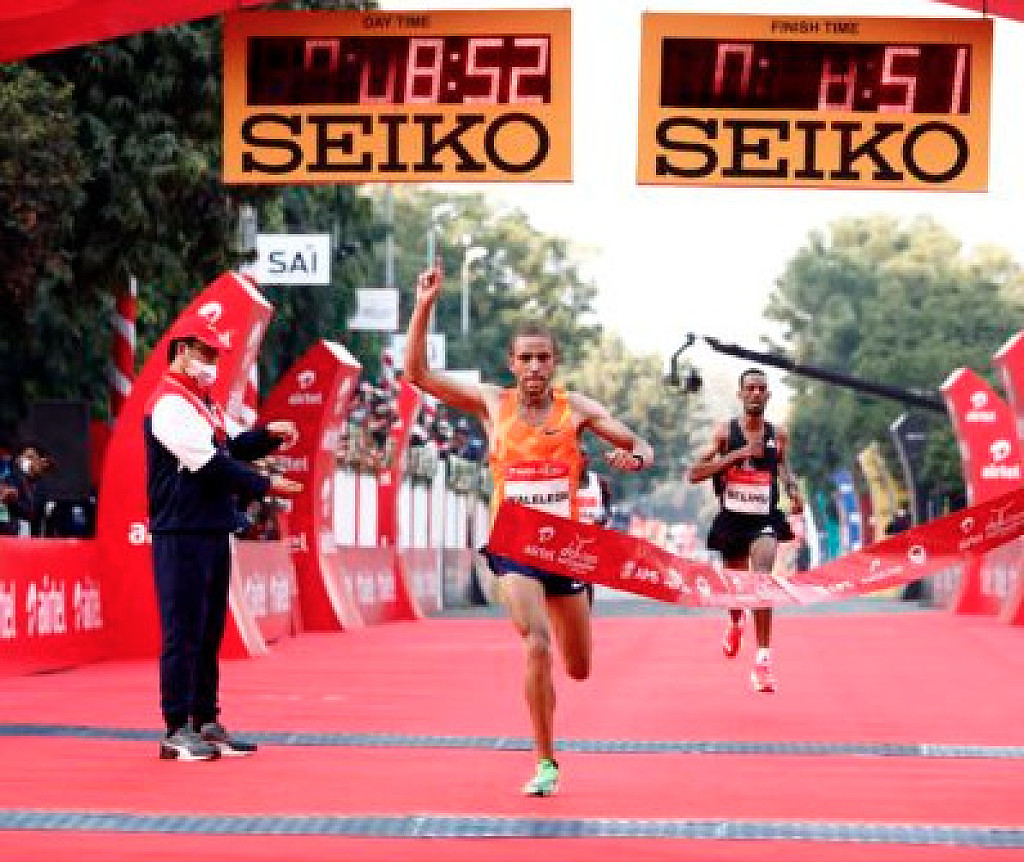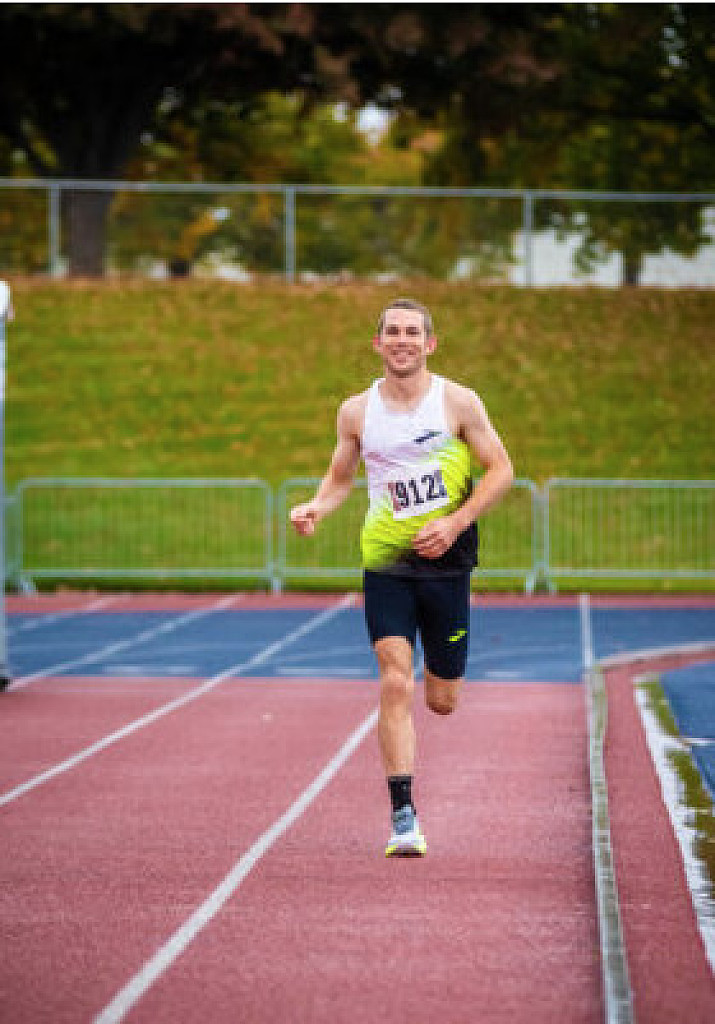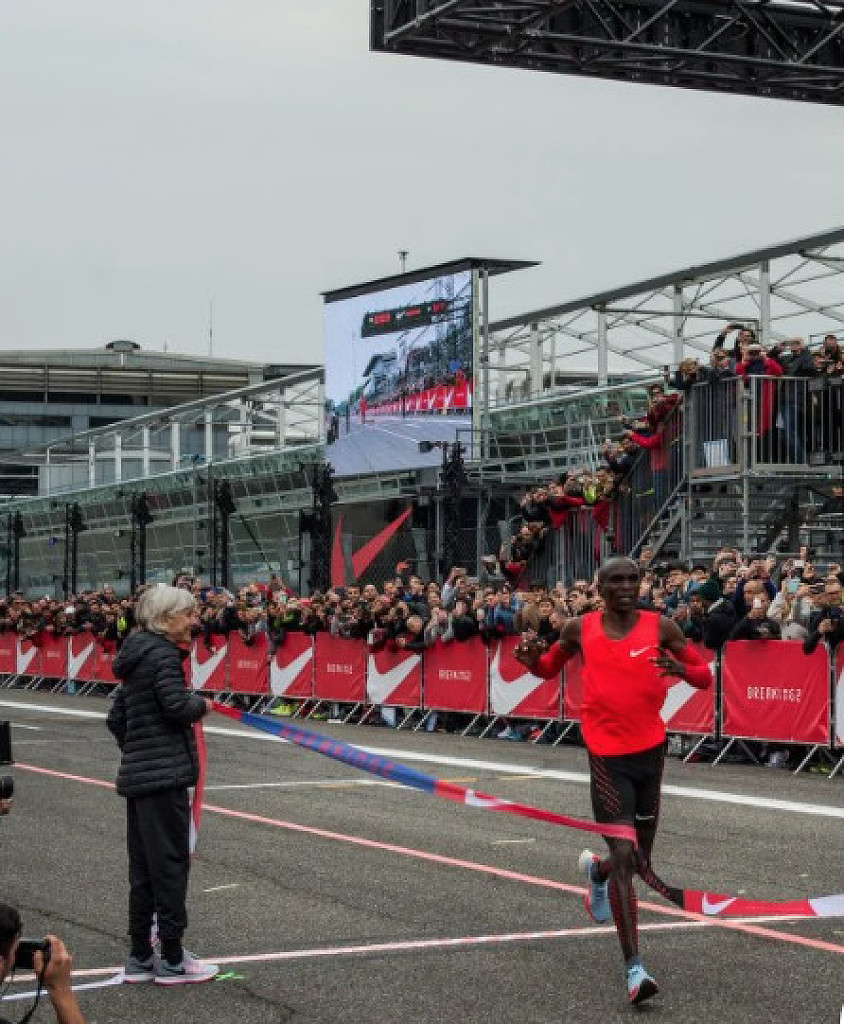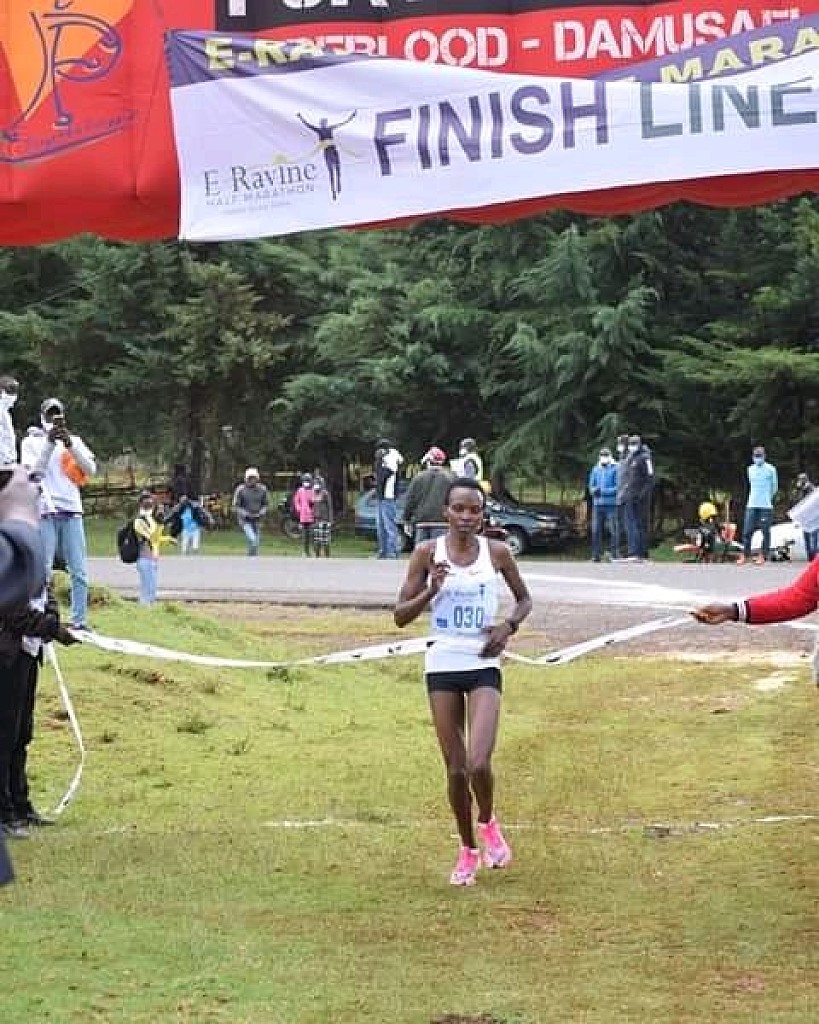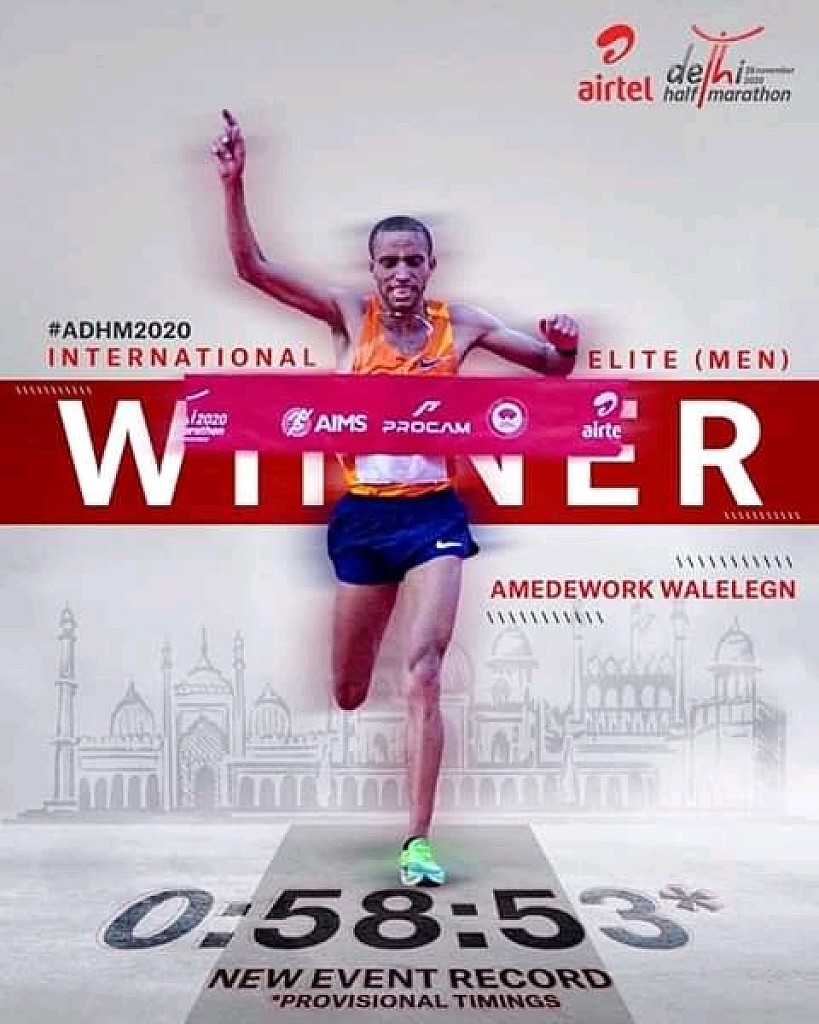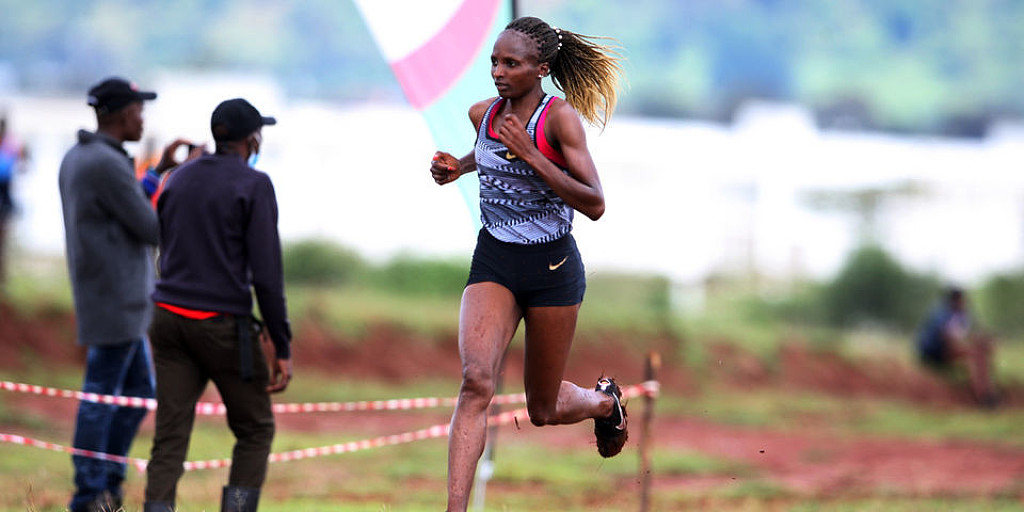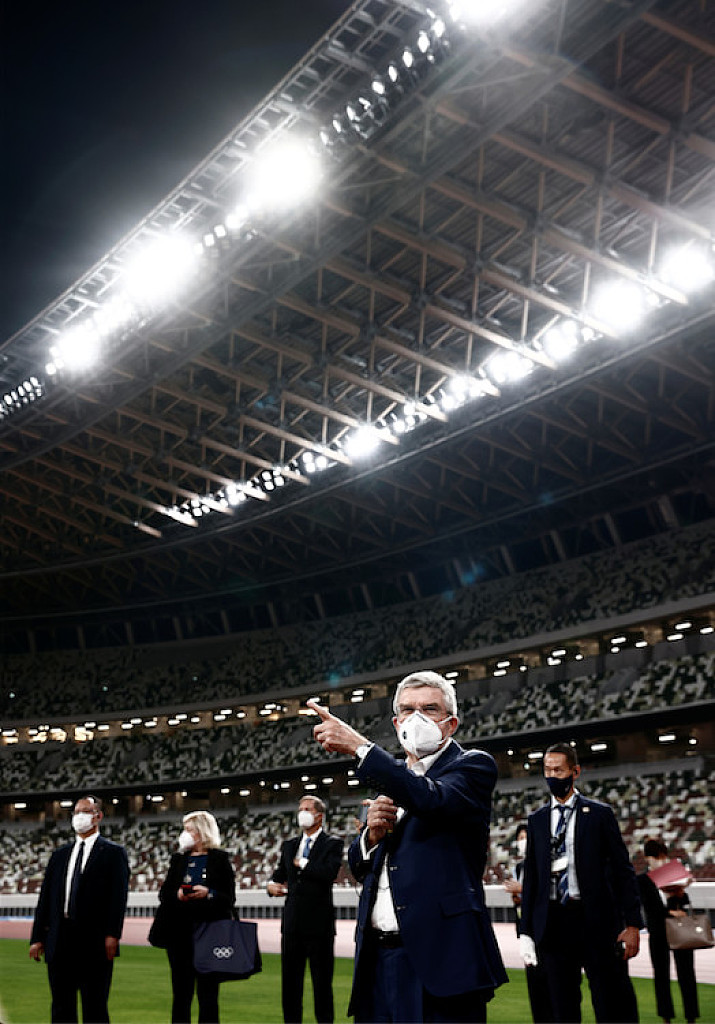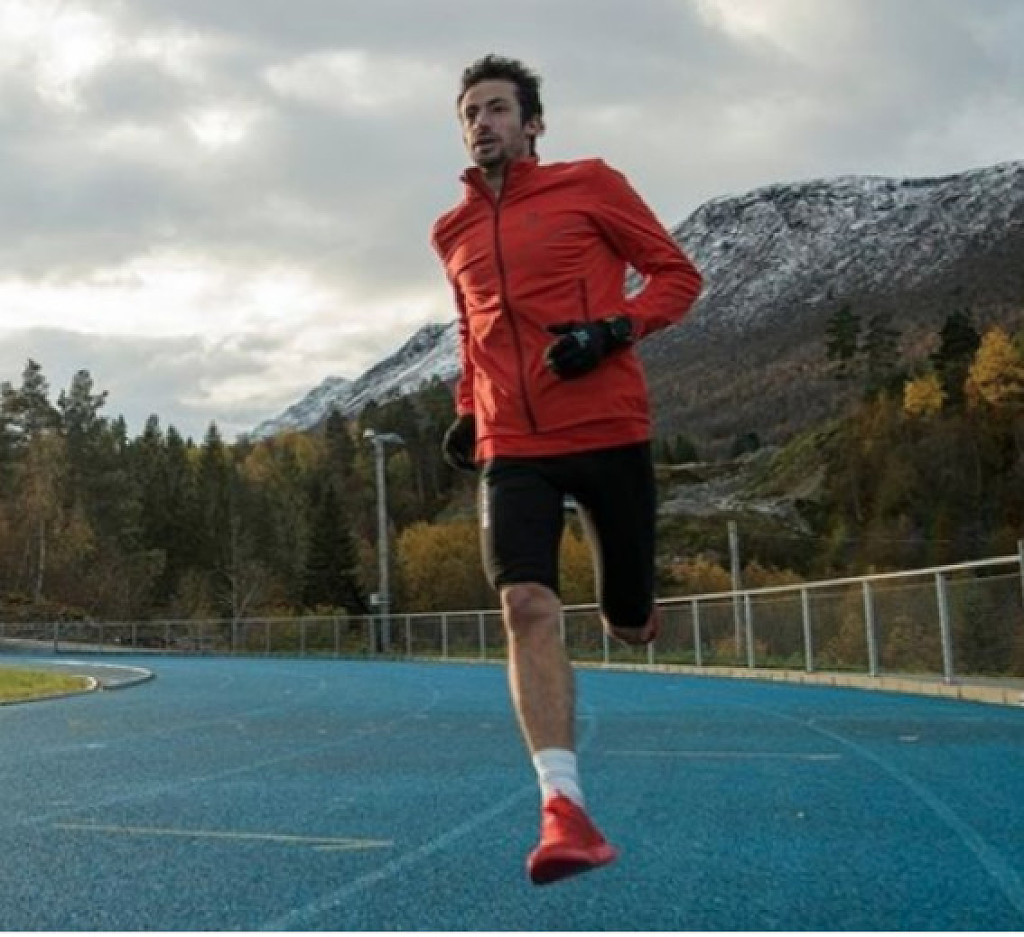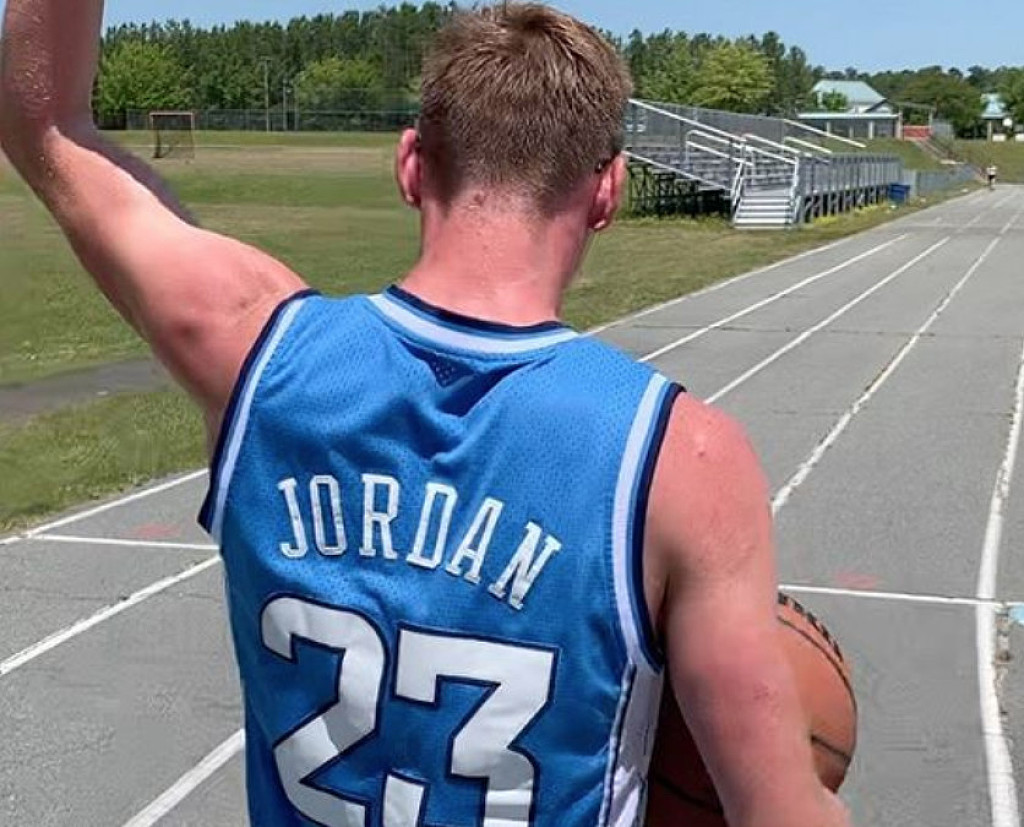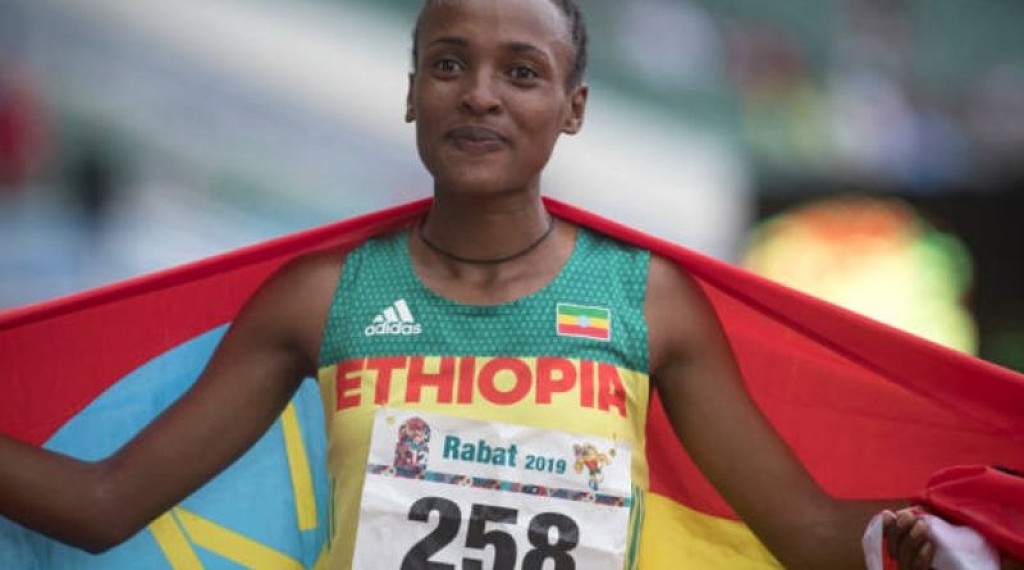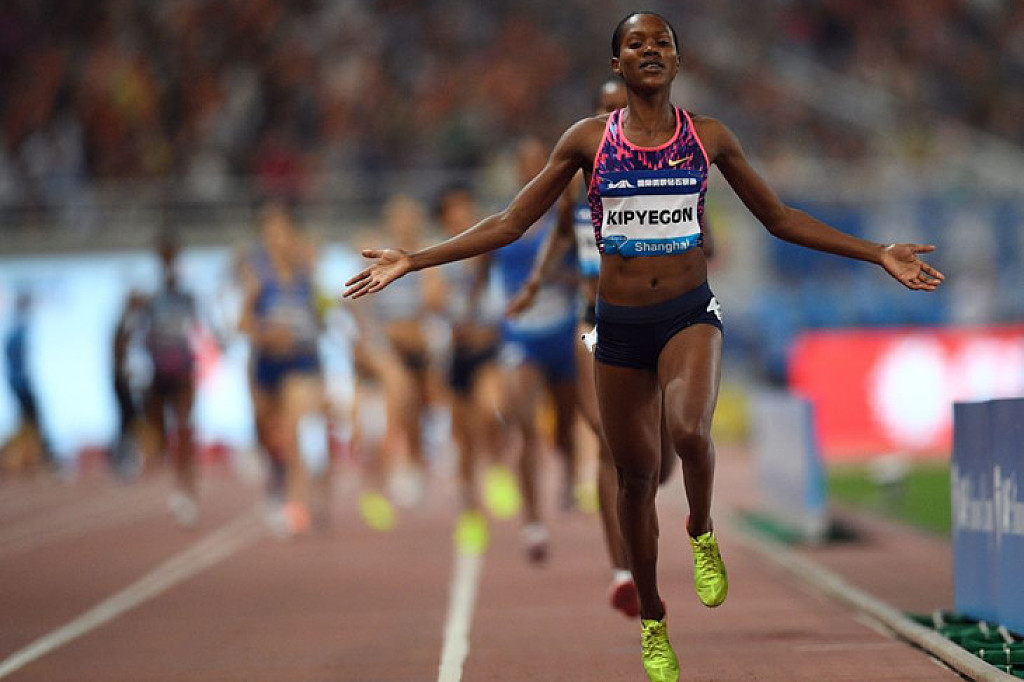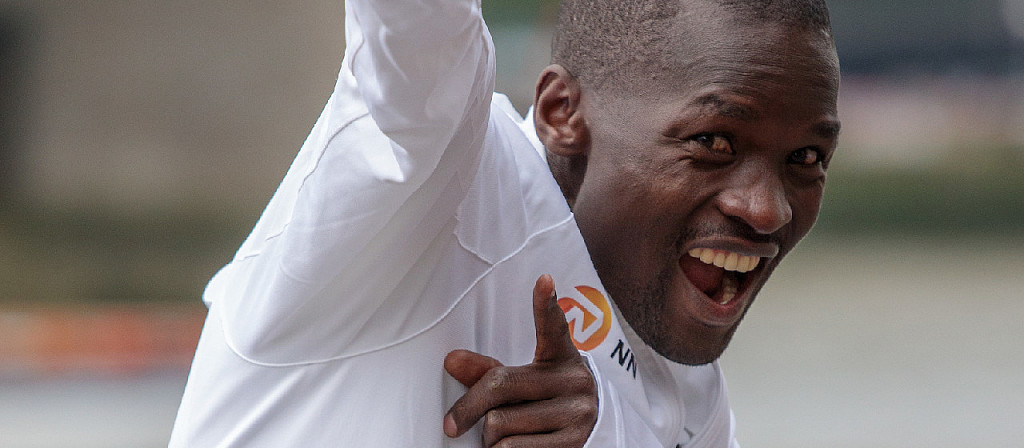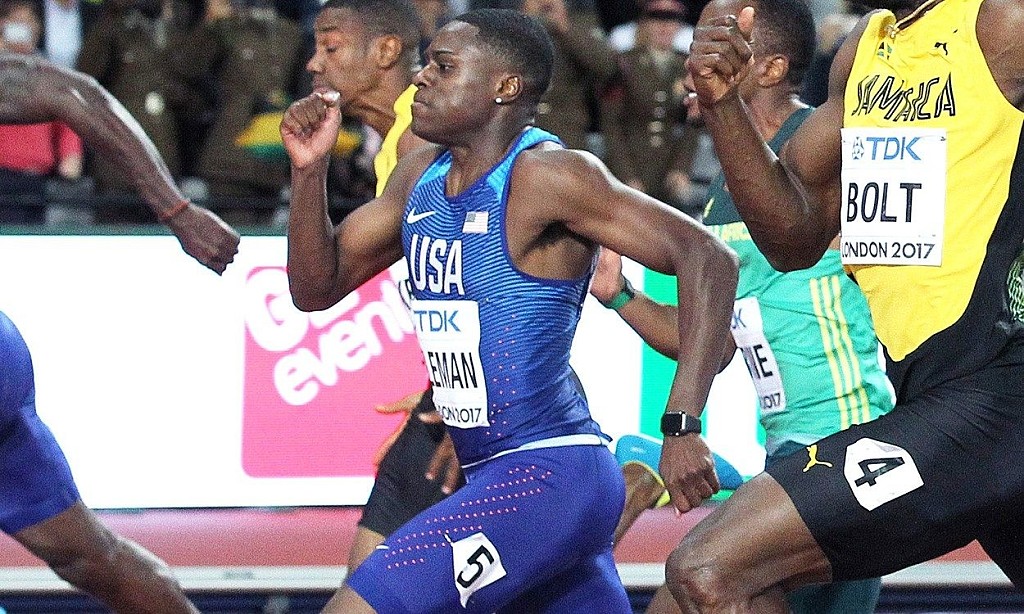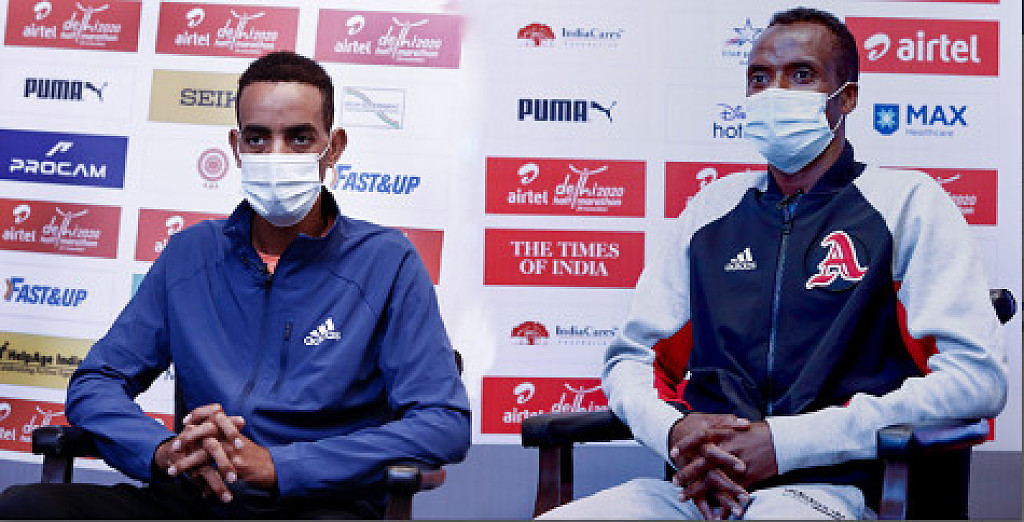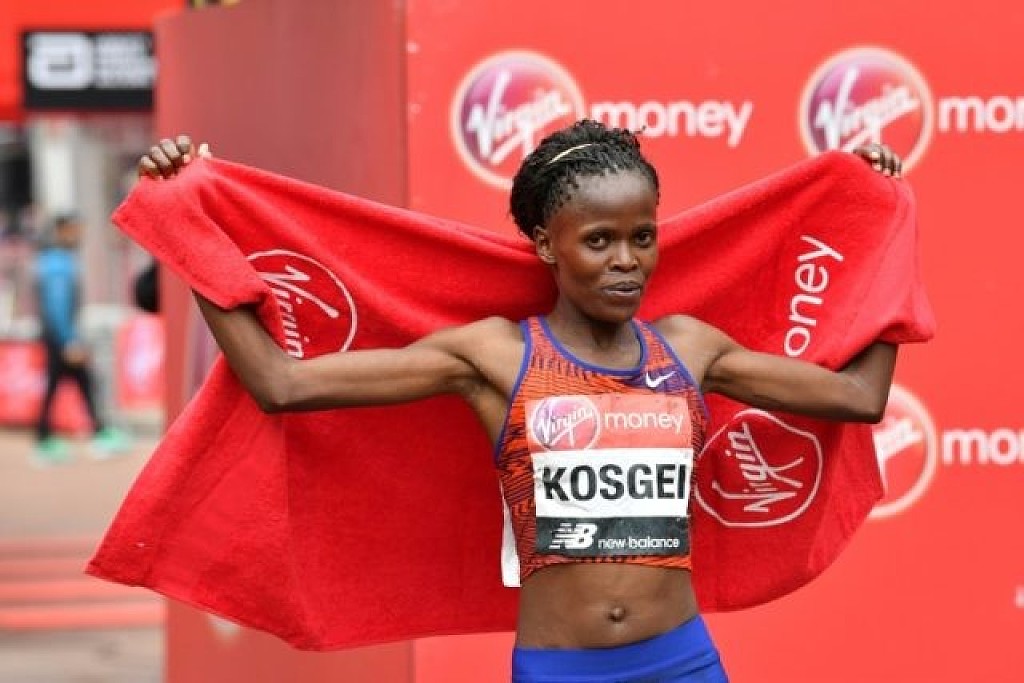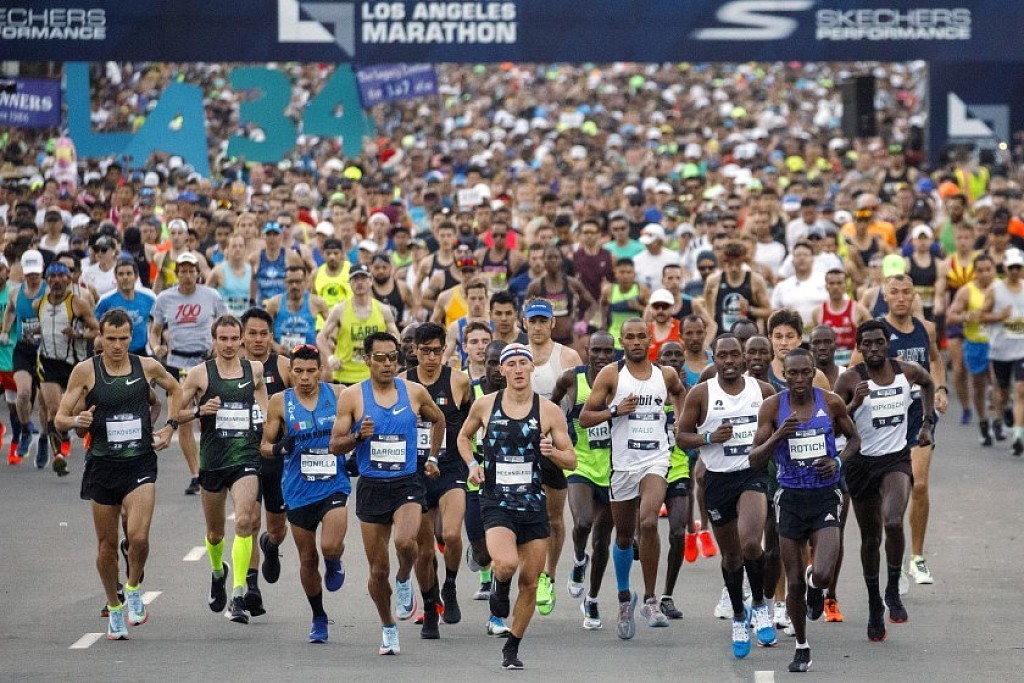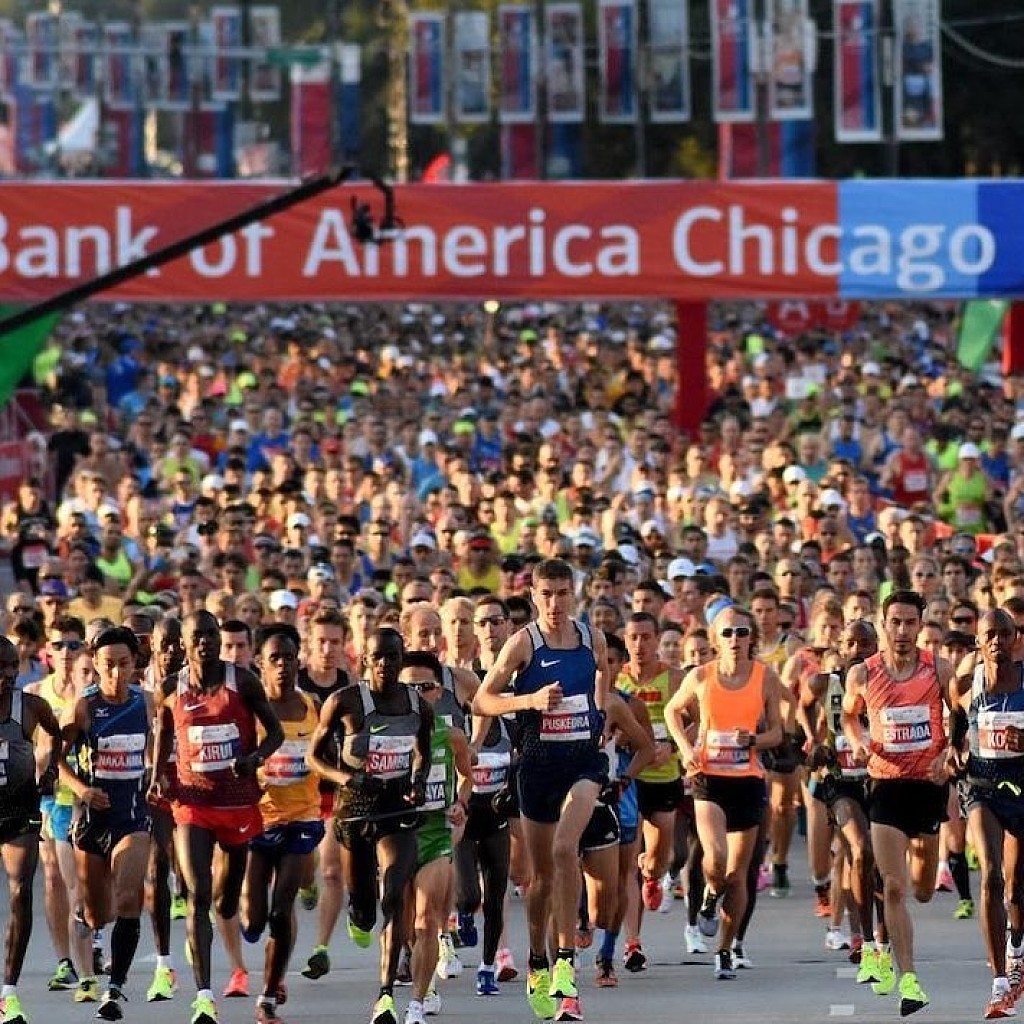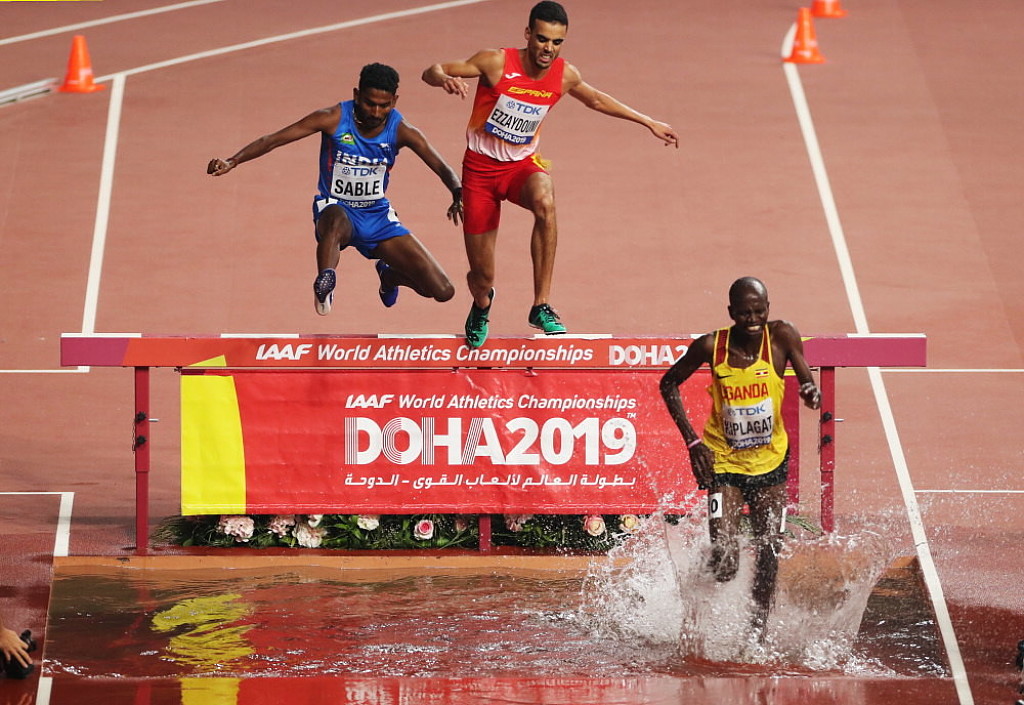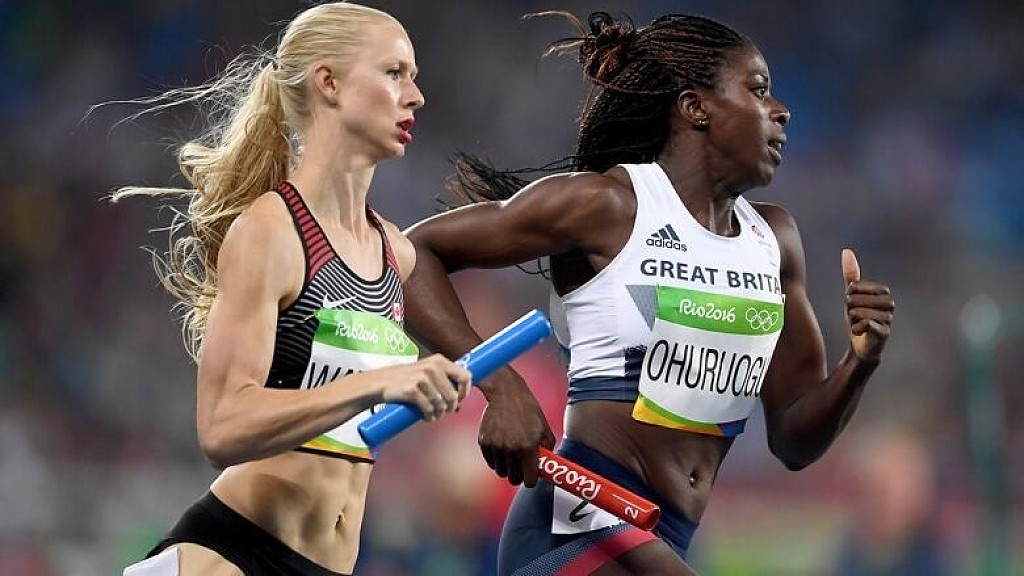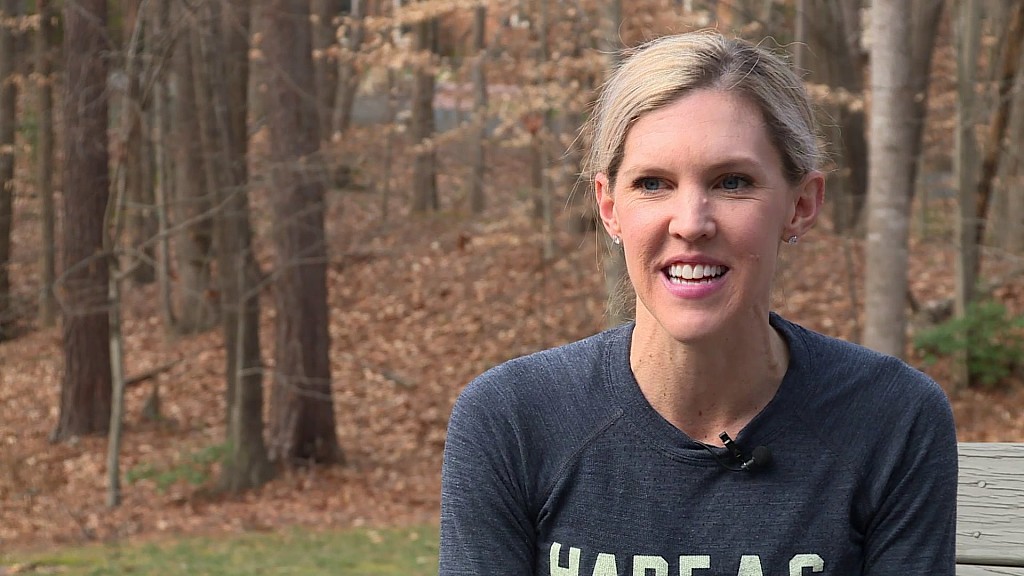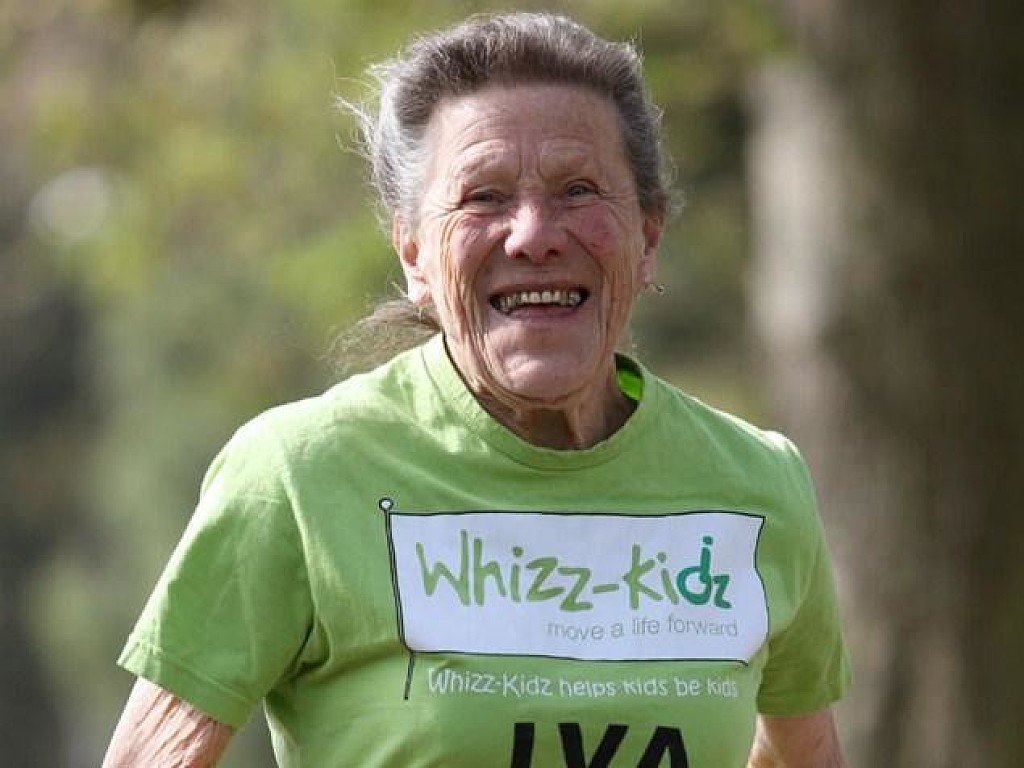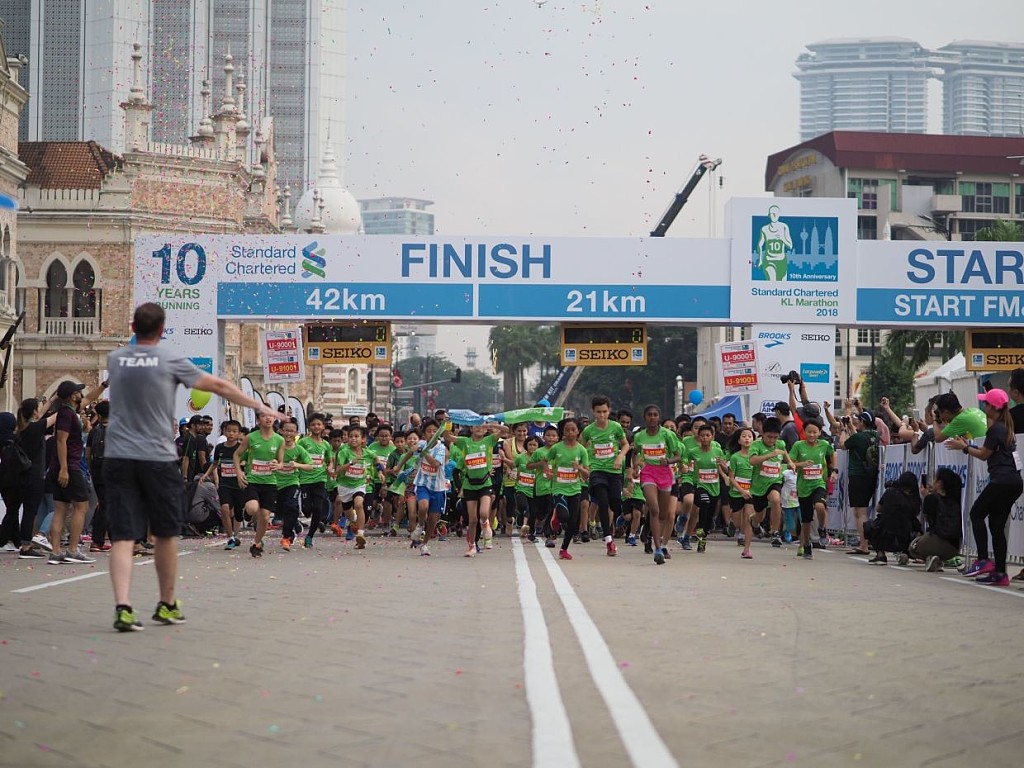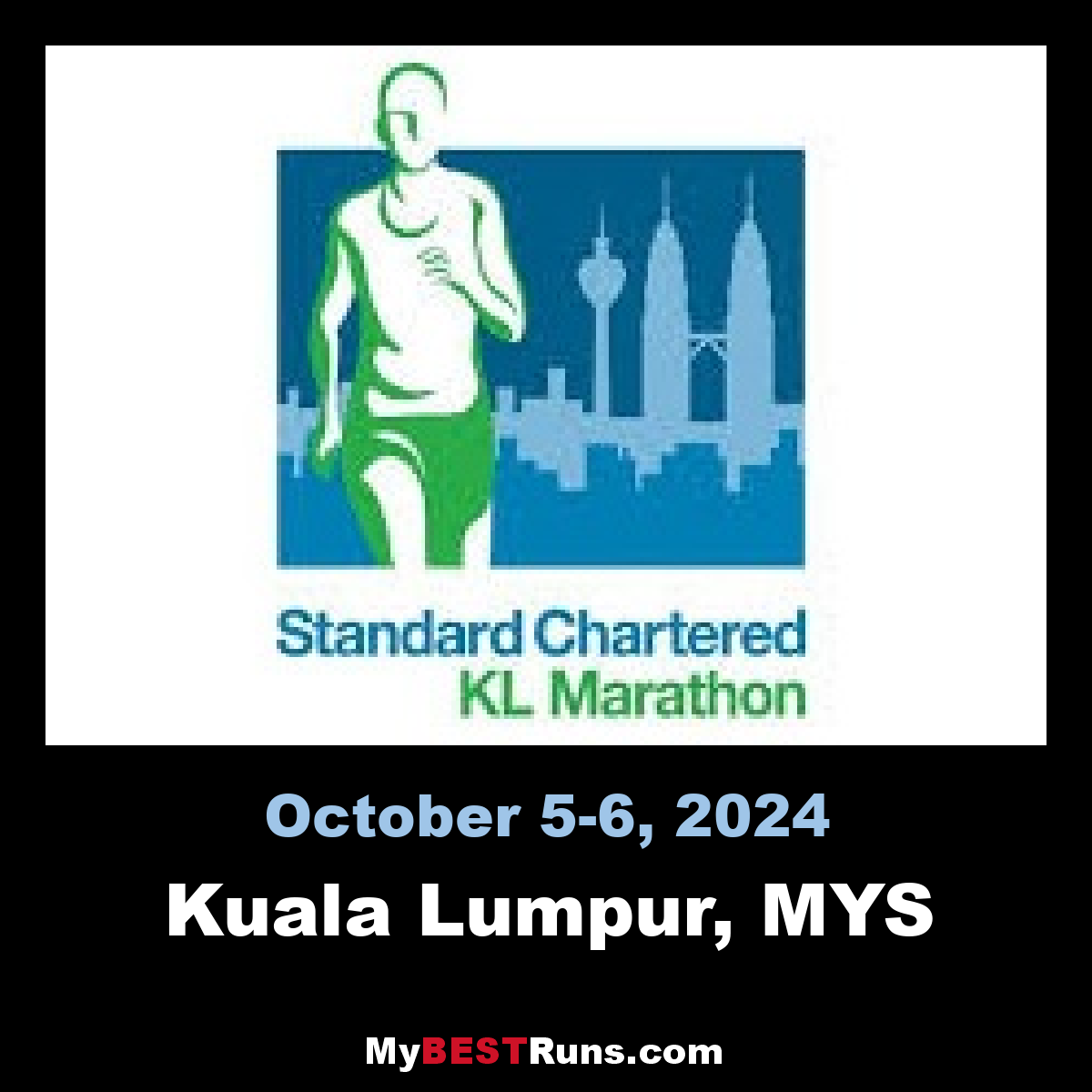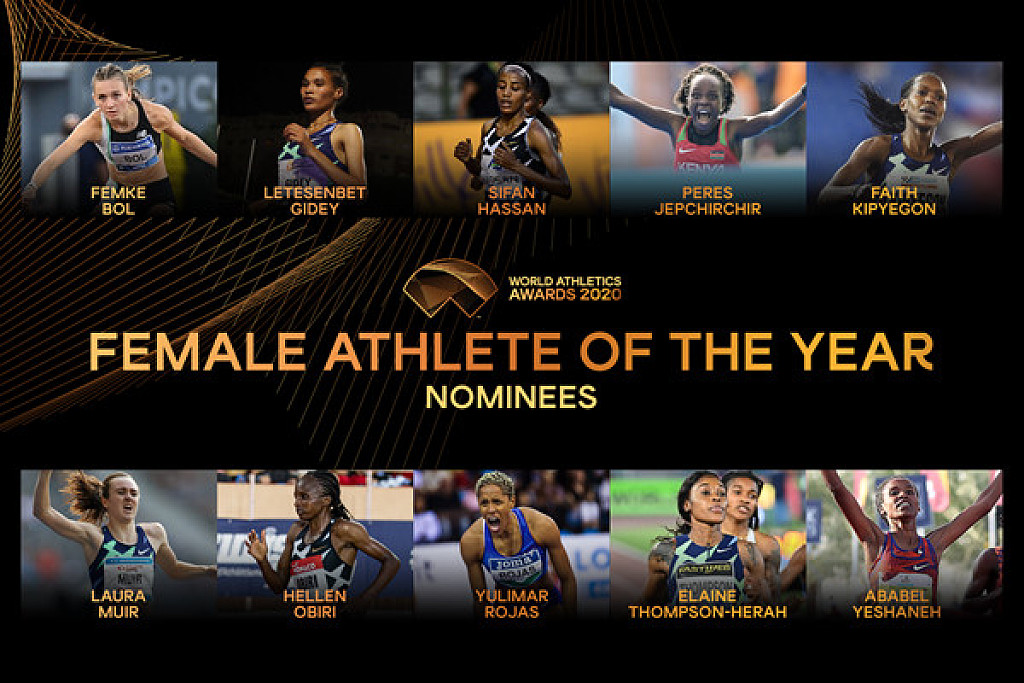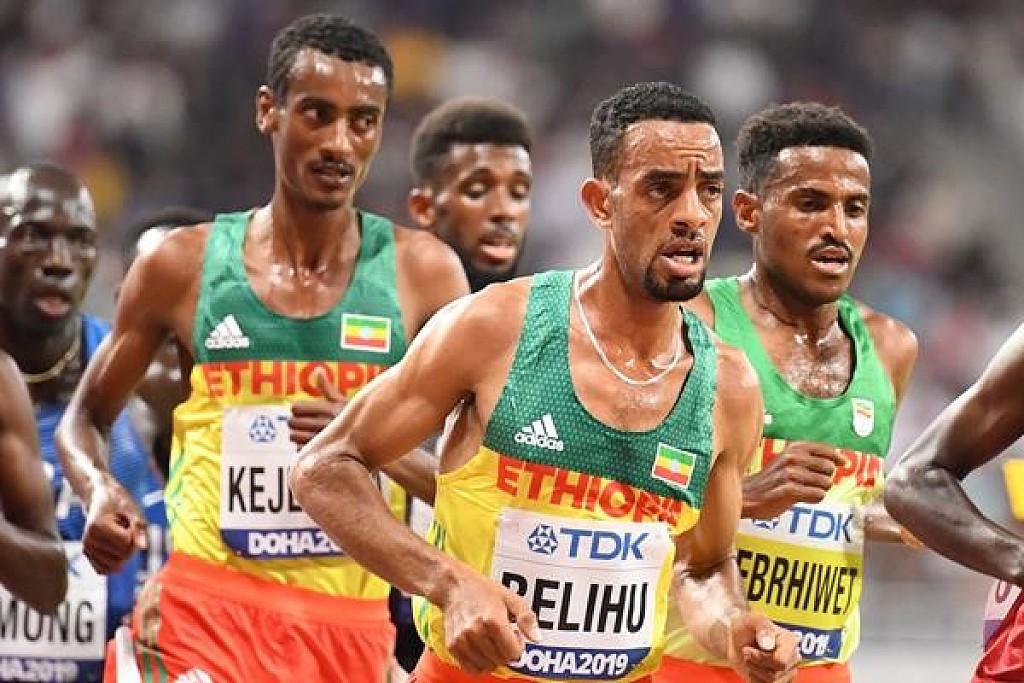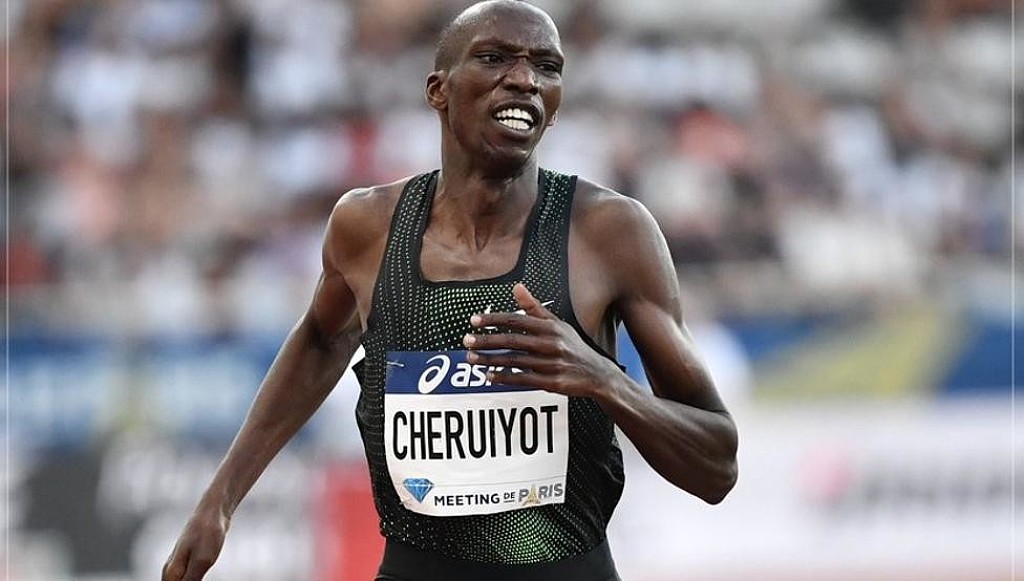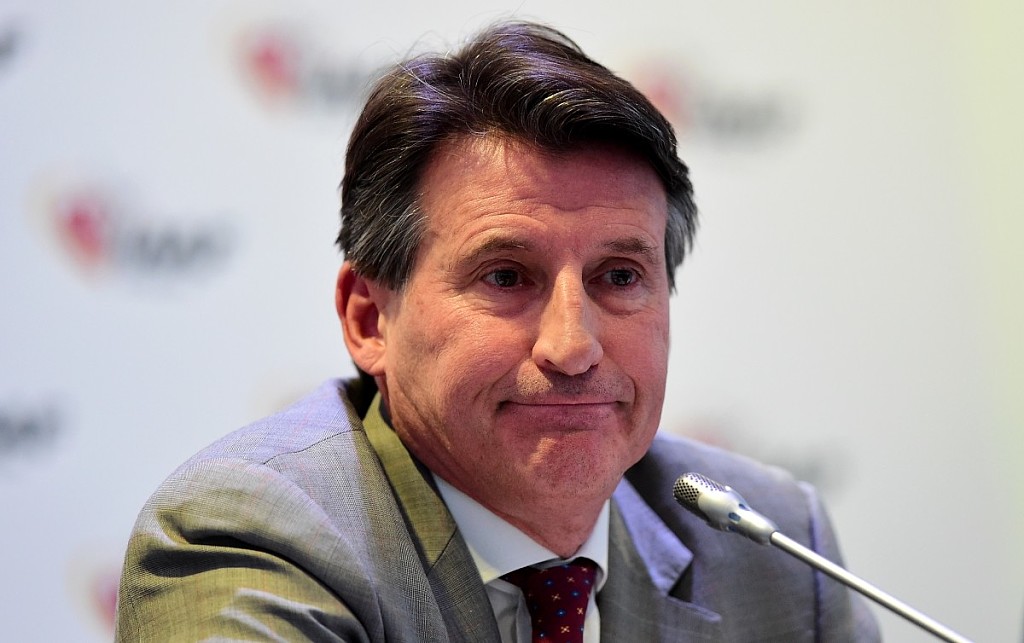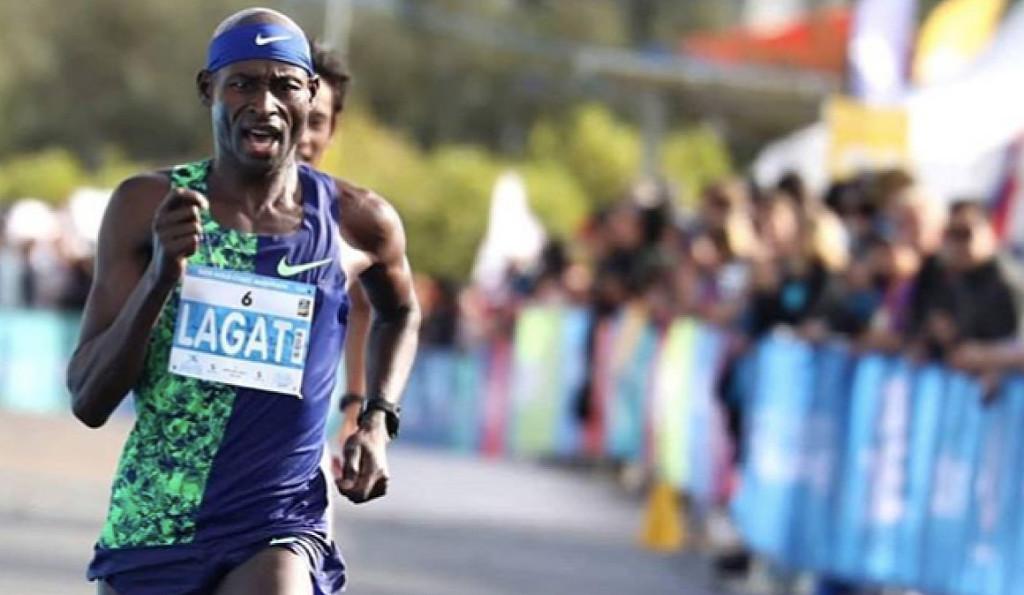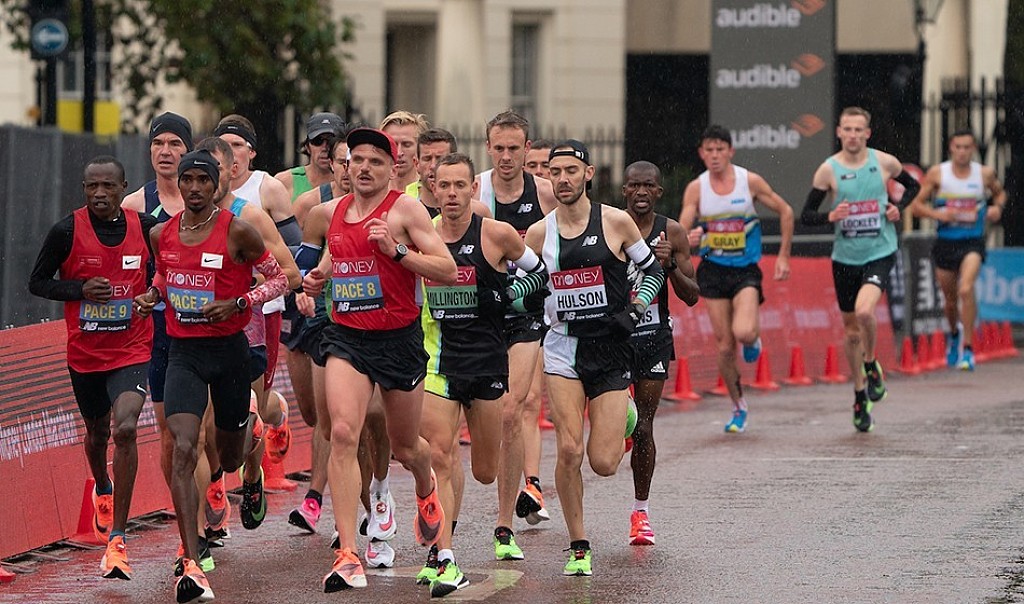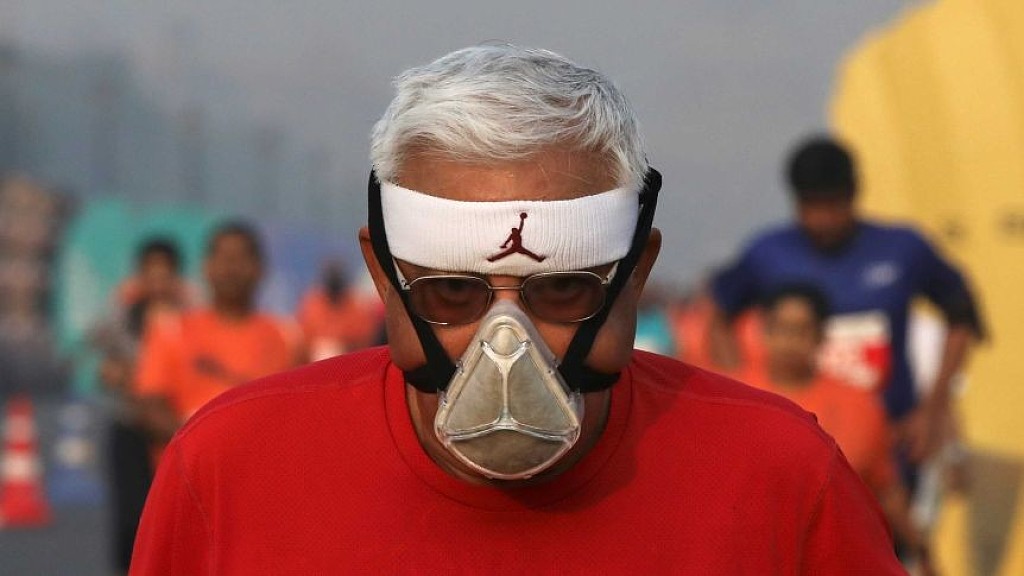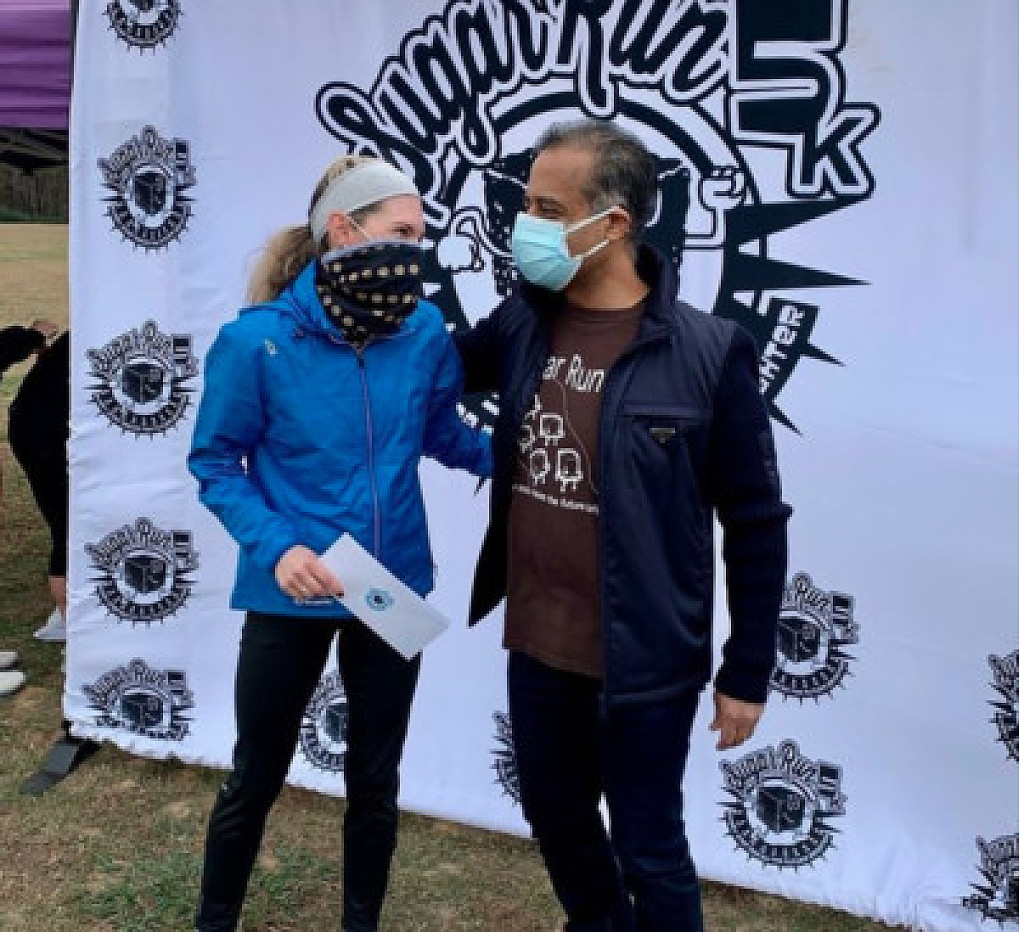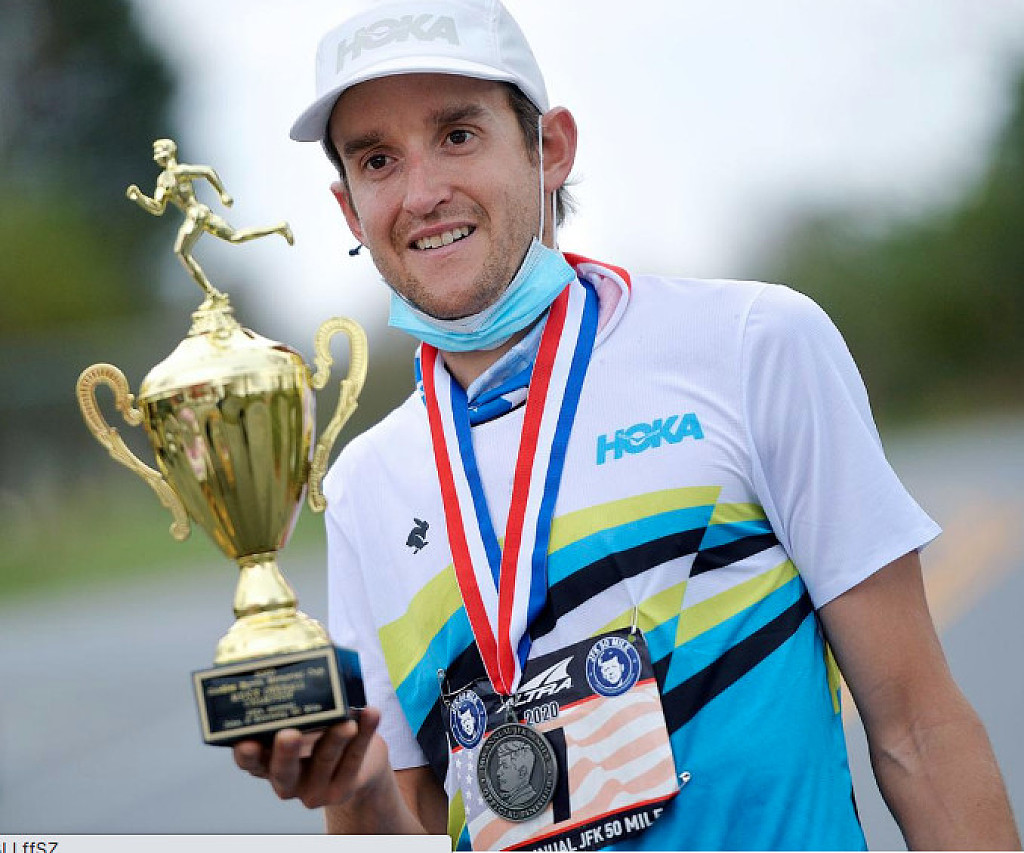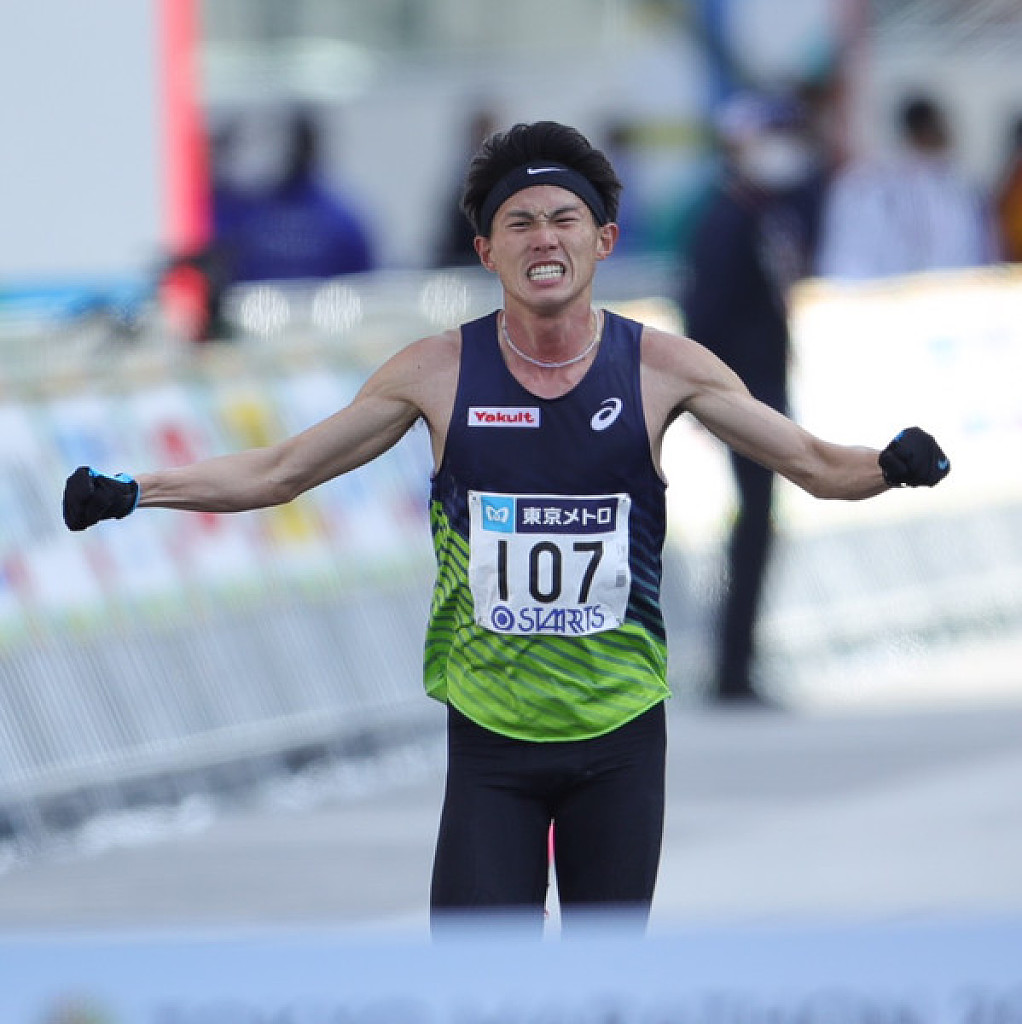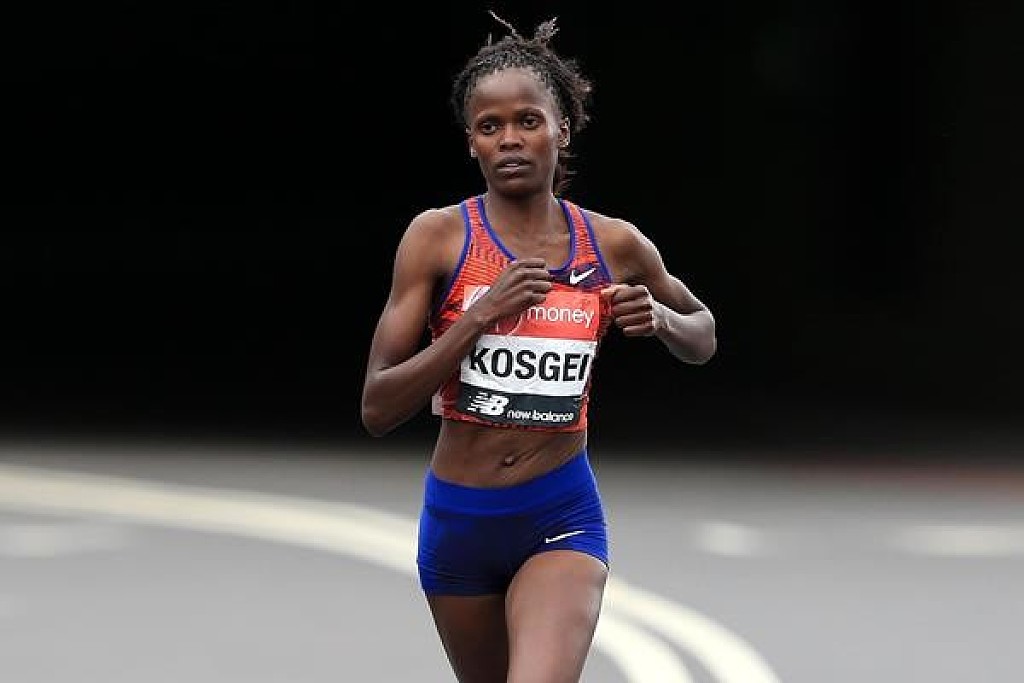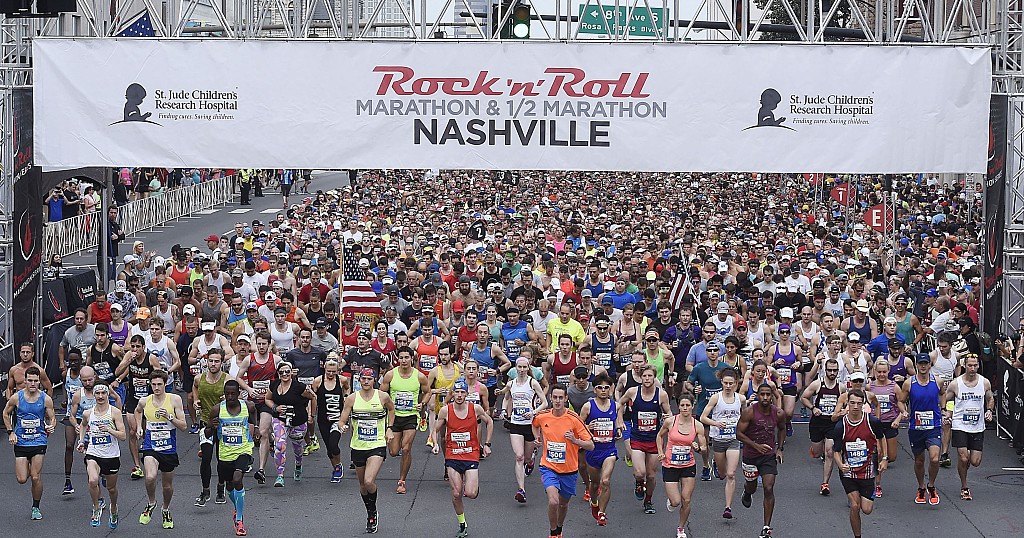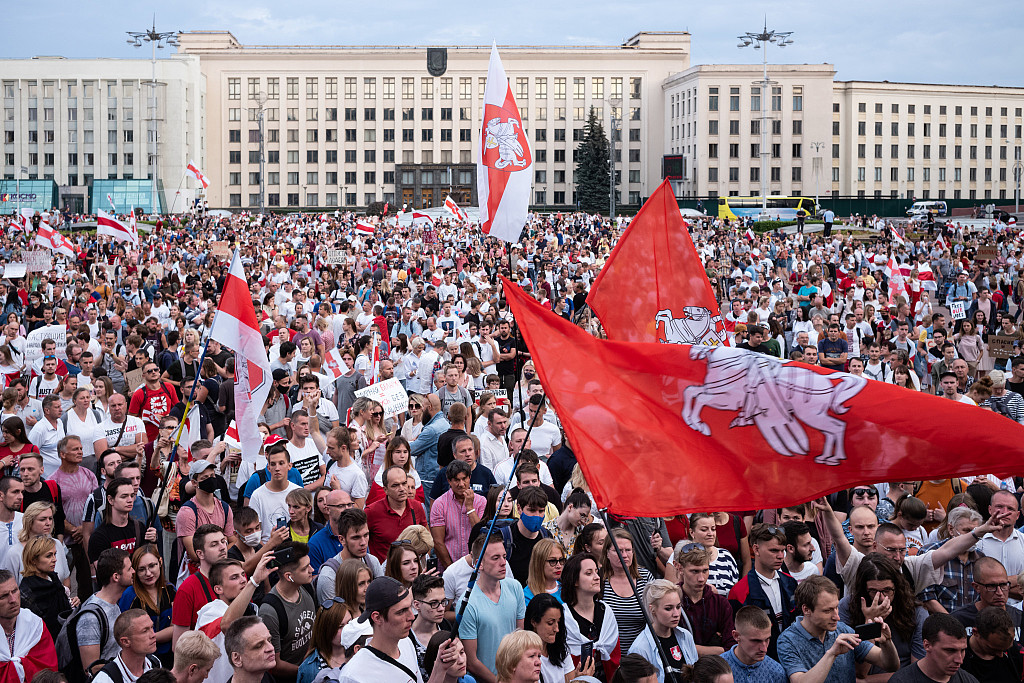Running News Daily
Running News Daily is edited by Bob Anderson. Send your news items to bob@mybestruns.com Advertising opportunities available. Train the Kenyan Way at KATA Kenya and Portugal owned and operated by Bob Anderson. Be sure to catch our movie A Long Run the movie KATA Running Camps and KATA Potato Farms - 31 now open in Kenya! https://kata.ke/
Index to Daily Posts · Sign Up For Updates · Run The World Feed
Japanese Government considers private healthcare requirement for Tokyo 2020 visitors
The Japanese Government is reportedly considering making private health insurance compulsory for visitors attending next year’s Tokyo 2020 Olympic and Paralympic Games.
According to Kyodo News, a proposal was presented by the ruling Liberal Democratic Party.

The proposal would reportedly see visitors required to take out private health insurance coverage, as well as testing negative for coronavirus.
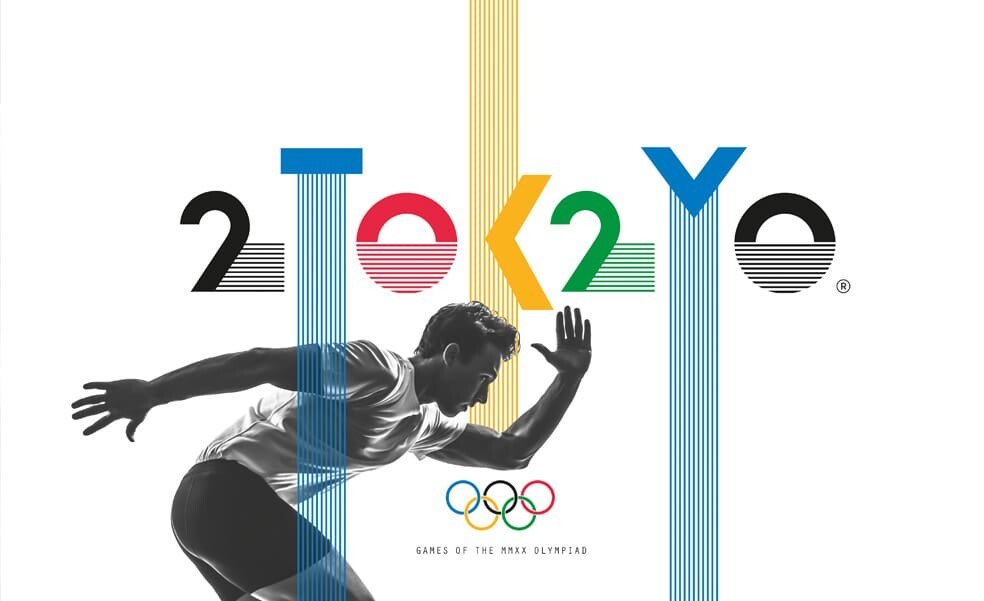
Visitors may also be required to submit a report on their health status.
The proposal has been made due to the current system requiring the Japanese public to bear the financial cost of treating overseas visitors.
This became an issue earlier this year regarding the Diamond Princess cruise ship.
The cruise ship was docked in Yokohama in February when it recorded around 700 coronavirus infections, with Japanese hospitals ultimately treating visitors with the infections.
Laws would need to be amended for private health coverage to be required, Kyodo News reported.
The Olympics are now scheduled for July 23 to August 8, followed by the Paralympics from August 24 to September 5.
Organisers are working on a series of coronavirus countermeasures to protect athletes and spectators during their stay in the Japanese capital.
Tokyo Governor Yuriko Koike has recently revealed her hopes of holding the Games with "full spectators present".
Tokyo 2020 chief executive ToshirÅ MutÅ has also previously said measures for fans, including non-Japanese residents, would be drawn up by the spring.
Hopes of a successful staging of the Games have been boosted by progress in the development of COVID-19 vaccines, although it may still be some time before they are available to the wider public.
(11/30/2020) ⚡AMPby Michael Pavitt
Tokyo 2020 Olympic Games
Fifty-six years after having organized the Olympic Games, the Japanese capital will be hosting a Summer edition for the second time, originally scheduled from July 24 to August 9, 2020, the games were postponed due to coronavirus outbreak, the postponed Tokyo Olympics will be held from July 23 to August 8 in 2021, according to the International Olympic Committee decision. ...
more...9,000 runners defy COVID-19 at Shanghai Marathon
Around 9,000 runners – some wearing protective masks – took part in the Shanghai International Marathon Sunday, Chinese media said, a rare mass event in a year when the coronavirus laid waste to most such sports.
Prior to the race, officials touted it as an opportunity to show how China – where the virus emerged late last year before unleashing a pandemic – is moving ahead despite the continuing global health crisis.
The prestigious New York, Berlin, Boston and Chicago marathons all fell victim to the coronavirus this year, while London and Tokyo were open only to elite runners.
Bucking that trend, the marathon in Shanghai went ahead under sunny skies following several days of rain and with virus prevention measures in place to thwart infections.
Shanghai is on edge following a scattering of recent local cases, but China has largely got to grips with the epidemic thanks to strict lockdowns and aggressive mass testing.
Runners had to pass a coronavirus test in order to take part and were ordered to wear a mask immediately before and after the race. Some kept them on the whole time.
About 9,000 runners had been expected to take part, down from 38,000 in previous Shanghai marathons. No overseas athletes flew in for the race, and spectators were told to stay away.
Distance running is booming in China, with state media saying there is marathon fever.
In February, when the country was shut down by the pandemic, one fanatical runner jogged the equivalent of an ultra-marathon inside his small apartment.
(11/29/2020) ⚡AMPMore details about the Delhi Half Marathon Record performances
t was a great morning for the 2020 World Half Marathon bronze medallists as Ethiopians Yalemzerf Yehualaw and Amedework Walelegn both picked up $37,000 wins ($27k for 1st, $10k for event records) in event record time today at the Airtel Delhi Half Marathon.
The headline performance came in the women’s race where Yehualaw, the 21-year old who just missed out on winning in Delhi by 1 second last year in 66:01, ran an unofficial 64:46, the second-fastest women’s half marathon in history on a records-eligible course.
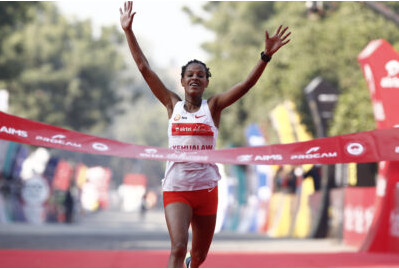
The 5 Fastest Women’s Half Marathons Ever1 64:28* Brigid Kosgei KEN 2019 Great North Run 08.09.20192 64:31 Ababel Yeshaneh ETH 2020 RAK Half 21.02.20203 64:46 Yalemzerf Yehualaw ETH 2020 Delhi Half 28.11.20194 64:49 Brigid Kosgei KEN 2020 RAK Half 21.02.20205 64:51 Joyciline Jepkosgei KEN 2017 Valencia 22.10.2017*Not records eligible
In the men’s race, the Walelegn, also 21, won a three-way sprint finish in an unofficial 58:52 as two-time defending champion Andamlak Belihu of Ethiopia and Stephen Kissa of Uganda also broke 59:00 to finish second and third respectively. The order of finish today was the same as it was at World Half last month as in Poland Walelegn was third, Belihu was 5th and Kissa 19th. 2017 and 2019 world 5000 champion ran Muktar Edris of Ethiopia also ran very well today in his debut as he was in fourth in 59:04 .
The course this year was different than in years past due to Covid-19 but the event record coming in was 59:06 for the men and 66:00 for the women.
Ethiopia’s Yalemzerf Yehualaw produced a stunning run over in the Airtel Delhi Half Marathon 2020, a World Athletics Gold Label Road Race, to clock the second fastest women’s time ever over the distance when she crossed the line in the Indian capital in 64:46.
The 21-yearold, who had to settle for third at the World Athletics Half Marathon Championships last month when she slipped around 80 metres from the line, bounced back with aplomb to take the $27,000 first prize and an additional $10,000 as an event record bonus.
In the men’s race, the event record – with the course having been changed significantly from previous years – also fell when Amdework Walelegn outsprinted his Ethiopian compatriot and two-time defending champion Andamlak Belihu to win in 58:53, the latter coming home in 58:54 and just missing out on an unprecedented third title.
A blistering pace from the gun was set in the women’s race by the Kenyan male pacemaker Alex Kibarus and several of the elite field were quickly dropped.
Six women – three Kenyans: Irene Cheptai, 2019 world marathon champion Ruth Chepngetich and marathon world record holder Brigid Kosgei; and three Ethiopians: two-time defending champion and event record holder Teshay Gemechu, world record holder Ababel Yeshaneh and Yalemzerf Yehualaw – followed Kibarus through 5km in 15:27.
World marathon record holder and recent London Marathon winner Kosgei was forced to drop out midway through the eighth kilometre, holding her leg as she limped to the side of the road.
A kilometre later, Gemechu also started to suffer and lost contact with the leaders although she hung on to eventually finish fifth.
Chepngetich, Cheptai, Yehualaw and Yeshaneh went through 10km together in 30:49 as a thrilling race started to take shape.
Cheptai was the next to fall away, becoming detached in the 12th kilometre with the remaining trio going through 15km in 46:15.
With just three kilometres to go, and within the space of a few hundred metres, first Chepngetich and then Yeshaneh found themselves unable to stay with the pace.
However, Yehualaw continued to follow Kibarus, and once he dropped out with two kilometres to go it was just a question of how much she would take off Gemechu’s 2019 course record of 66:00.
In the end, she improved the mark by more than a minute, aided by a strong run over the final quarter of the race.
Yehualaw won in 64:46 but Chepngetich also ran the race of her life to finish in a personal best of 65:06 and move up to equal-sixth on the world all-time list.
“My training since the world championships told me that maybe I could break the course record as I ran 65:19 there, but this was more than I expected, and I hoped for a win here after just losing by a second a year ago,” said Yehualaw.
“My plan was to push hard with two kilometres to go and that helped my fast time, and it was also very nice weather,” she added, with early morning temperatures in Delhi around 12-14 degrees Celsius.
In the men’s race, three pacemakers took field through 3km in 8:22 and then 5km in 13:57 – well under 59-minute pace – with Belihu always to the fore.
The main pacemaker, Uganda’s Abel Sikowo, continued to forge ahead and passed 8km 22:17 and then 10km in 27:50, with eight men still directly in the wake of Sikowo who was doing an admirable job in keeping the tempo high and sub-59 times definitely in sight.
Just after 12km Sikowo dropped out and Belihu, along with Kenya’s Leonard Barsoton, dictated matters at the front for the next two kilometres although, as he was later to admit, this decision might have cost the defending champion dearly in the later stages of the race.
Eight men were still in contention at 15km, which was passed in 42:00. By 18km the leading group had slimmed just slightly to six men: the Ethiopian quartet of Belihu, Walelegn, 2017 and 2019 world 5000m champion Muktar Edris who was making his competitive debut over the distance, Tesfahun Akalnew, Barsoton and Uganda’s Stephen Kissa.
Akalnew started to falter shortly afterwards and with two kilometres to go, Edris and Barsoton also started to drop off the back of the group as their challenge for a place on the podium began to evaporate.
Belihu, Walelegn and Kissa passed the 20km checkpoint in 55:59, and just a hundred or so metres later, Walelegn threw down the gauntlet.
However, Kissa was still full of running and darted between the two Ethiopians with 500m to go and held the lead for the next 300 metres before Walelegn found another gear and passed the Ugandan on his right as he sprinted for the line.
Walelegn finished in 58:53, the third fastest time of the year and an event record by 13 seconds as well as a personal best by 15 seconds. Belihu was just one second in arrears and Kissa two seconds further back, both men also setting personal bests.
“I had a few bad patches but in the final kilometre I felt strong. I was second in Delhi in 2018 and this is a much faster course which has less sharp turns,” commented Walelegn, reflected on the new circuit which incorporated two six-kilometre loops.
“I have to be happy as I ran a personal best. After the pacemaker dropped out I pushed the pace but I think this might have left me with a bit less energy when we sprinted in the last kilometre,” reflected Belihu, who just fell short in his bid to be the first three-time winner in Delhi.
In fourth place Edris ran 59:04, the second fastest debut over the distance ever, while Avinash Sable smashed the Indian record by more than three minutes when he ran 60:30 in tenth place.
(11/29/2020) ⚡AMPby Lets Run
CJ Albertson Just Ran a 2:09 Marathon on the Treadmill. He Doesn’t Care What You Think About It.
Albertson, 27, has been doing a lot of cool things recently. His highlights from the last month:
On November 1, he ran 50.4 kilometers on his treadmill in 2:42:00. The treadmill world record for 50k (and fastest time anyone had covered 50 kilometers, period) was 2:42:56.
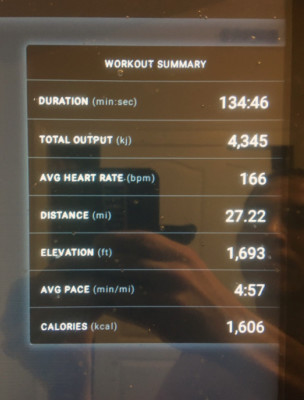
On November 8, he ran a 50,000-meter world best of 2:42:30 by running 125 laps around his old track at Buchanan High School in Clovis, Calif.
On November 15, he ran 37 miles on his treadmill at 5:56 mile pace — the longest run of his life.
His most recent effort was his most impressive yet: on Sunday, he ran an approximate 2:09:58 marathon on his treadmill, and felt so good, he added on an extra mile even faster.
Though Albertson knew what the treadmill world record was (2:17:56 by Tyler Andrews in June), he didn’t go into his run thinking of it as a world record attempt. He just wanted to see if he could run a 2:10 marathon on a treadmill.
So he went into his guest bedroom, opened the French doors, and set up a fan to get some air flowing from outside. He laid out his fuel: seven gels, one bottle of water, and one bottle of carbs and electrolytes. He cued up the Panic! At the Disco station on Amazon Music. Finally, he wheeled in his television and prepared to binge Community. He didn’t mind that his music would mostly drown out the dialogue.
“I’ve seen all the episodes like, five times,” Albertson says. “It’s just something that clears my mind.”
And then he set his Peloton treadmill to 12.1 miles per hour (2:10:00 marathon pace) and he ran. And ran and ran and ran.
Six miles in, he began to hurt.
“I’m like, okay, I’m probably not going to go a marathon,” Albertson says.
But he muscled through the rough patch, and as he neared the end, he was feeling good. So good, in fact, that he didn’t want to stop. So after passing 26.2 miles, Albertson cranked the treadmill up to its max speed of 12.5 miles per hour (4:48 pace) and ran one final mile before stepping off with a final time of 2:14:46 for 27.22 miles.
Albertson says that before Sunday, he’d never experienced the “runner’s high.” But after his 27.22-mile effort, it hit him.
“I was walking around the house pumped up, kind of like a fighter when you see them just hopping around, randomly yelling,” Albertson says.
That feeling, and the fact that he accomplished his goal of running an entire marathon at 2:10 pace, is enough for Albertson. He won’t be submitting the effort as an official world record; he didn’t record the run or calibrate the treadmill prior to the attempt. And though he set the grade to 1.5% to account for the lack of wind resistance (“I read something that said that’s about accurate for that pace”), he isn’t going to waste time trying to figure out what the performance was worth. (Albertson thinks he came through 26.22 miles in just under 2:10 — he set the treadmill to 4:55 pace for the final mile of his marathon (2:10 pace is 4:57 pace)– and says he split roughly 2:09:50 from mile 2 to mile 27.22).
“That’s kind of the fun, that’s kind of the mystery — what was that effort worth really?” says Albertson. “I’ll never know. No one will ever know.”
Albertson says he still considers his marathon personal best to be the 2:11:49 he ran to place seventh at the Olympic Trials in Atlanta in February, but is hoping to break 2:10 at the Marathon Project on December 20 in Arizona, where he’ll face Scott Fauble (2:09:09 pb) and Canadian record holder Cam Levins (2:09:25 pb), among others.
The fact that breaking 2:10 is now a realistic goal for Albertson, who works as a professor and head cross country coach at Clovis Community College, is fairly remarkable. He was a solid runner at Arizona State, posting personal bests of 7:59, 13:50, and 8:45 in the steeple, but by no means a future star; he never even qualified for the NCAA cross country championships (he did make it to NCAAs in the steeple as a junior in 2016, though he didn’t make the final).
After graduating in 2017, Albertson spent a year away from competitive running. But when he returned in 2018, training for the Two Cities Marathon in Fresno, he tried a different approach, throwing in several long runs of over 26 miles in his buildup. It worked: he won the race in 2:17:45, qualifying for the Olympic Trials.
Since then, Albertson has incorporated hard long runs of 26-32 mile into his weekly routine, doing them almost every Sunday when he’s in serious training. And he has improved drastically. In March 2019, he shaved 58 seconds off his personal best by running 2:16:47 to win the Modesto Marathon and followed it up with a world best for the indoor marathon, clocking 2:17:59 at the Armory in April. In the fall, he ran another big pb of 2:14:51 to repeat at Two Cities before running yet another pb of 2:13:40 a month later to finish second at CIM. Then he took almost two minutes off of that time to finish seventh at the Trials.
Albertson, who is self-coached, views his Wolverine-like ability to recover as a gift that must be nurtured. He tried traditional training in college, but it was only once he leaned into making these long, hard efforts a regular part of his training that his career truly took off.
“It comes really easy and natural for me to do what people would say [are] hard long runs,” Albertson says. “So I feel like I kind of have to take advantage of that, and it works for me. I was decent in college. But I was not seventh in the nation in college, ever. I wasn’t even close.”
Mentally, Albertson is also well-suited for the monotony of grinding away on a track or treadmill for hours on end. He likes running best when he doesn’t have to worry about splits or surges and can just lock into a pace, comparing it to meditation.
“I like the rhythm,” Albertson says. “A treadmill, you’re in perfect rhythm all the time. A track, you can get into that rhythm too. There’s just something about it that is relaxing but also allows you to push hard. And so I don’t have to think about anything, I just get the physical act of running hard and fast. There’s something really soothing about that to me.”
Albertson posts all of his training on Strava, and because many of his workouts are ridiculous, they tend to generate a lot of discussion (example: this five-page thread on LetsRun after Albertson ran 27 miles at 5:09 pace in February). Albertson says he sometimes gets a laugh out of seeing strangers on the internet overanalyze his runs, but for him, setting obscure records and logging mind-bending treadmill workouts are a way to have fun and keep training interesting. They’re not what the sport is about.
“Any race is gonna mean a lot mean than any sort of a record, because competing, that’s what the sport is: you race people,” Albertson says. “…It really doesn’t matter what you do in practice. When I line up December 20, it’s like, who cares? I don’t care what anyone else did [in practice], no one cares what I did. We’re just racing and the person who crosses the finish line wins.”
(11/29/2020) ⚡AMPby Lets Run
Why Running Outside in the Winter Is So Good for You
The mental and physical benefits make it worth the extra effort
Sure, the treadmill can be a valuable training tool in winter. But most of the time, gearing up, embracing the outdoors, and hitting the roads is the better option. What’s the difference, you ask? Training outside any time of year—but especially during the year’s darkest days—unlocks a host of mental and physical benefits. Here are four reasons to take your workouts outdoors this winter.

Amy Kugler understands firsthand how running can help combat seasonal affective disorder (SAD). Back in 2013, when the 30-year-old content strategist had just moved to Seattle, she found herself unconsciously upping her mileage as a way to cope with the lack of sunshine. “The rainy season kicked in around September and it was gray all the time,” she says. “My husband would encourage me to get out the door because he saw that when I returned from my runs, I was much happier.”
Robert J. Stock, a California-based psychotherapist, says that about 5 percent of Americans suffer from SAD, and as many as 10 percent more have a subclinical variant they may not recognize. “There are theories that the lack of light in winter triggers hormonal changes, with the leading belief being that the brain may create less serotonin, one of the important chemicals to create a sense of well-being,” he explains. Running, then, can be a great antidote. “Running outside, preferably in daylight, creates endorphins that give a runner a happy feeling and greater energy rush,” Stock says.
Even with a schedule and climate that often prevents her from training in the sunlight, Kugler feels better after training outdoors through winter. And that's no coincidence. A 2016 Harvard and Syracuse University study showed that the elevated levels of carbon dioxide often present in indoor environments can have negative effects on cognitive function. Translation: breathing fresh, oxygen-rich air—not just exposure to sunlight—can positively affect more than just your mood. “Would I love a sunny day?” she asks. “Yes. But more importantly, I am out there, and the endorphins make all the difference.”
Winter Weather Beats Summer Weather
Truly, it does. Instead of slowing the pace to build endurance in the heat, winter weather makes everything better: you’ll sweat less and remain better hydrated. You’ll feel more energized. Your heart will run slower and you might find yourself adding on a mile or two some days, rather than quitting early. “Breathing in the cold air wakes you up and makes you feel alive,” says Baltimore-based running coach Alison Staples. “I wouldn’t miss it.”
You’ll Feel like a Boss
If you haven’t noticed, there aren’t many people out running on the roads in the middle of winter. If you have the chutzpah to get out there, your tenacity deserves a few pats on the back. When he first arrived at the University of Wisconsin to join the track team, Under Armour runner Morgan McDonald was a bit unsure about running in the cold. Originally from Sydney, Australia, he’d never encountered real winter conditions (the average low temperature in January in Madison, Wisconsin, is a bone-chilling 11 degrees Fahrenheit). “It can be a bit daunting,” McDonald says. “But once you get used to it, you’ll be glad you tried.”
Professional runner and coach Breanna Sieracki, who lives in Minnesota and runs in just about any temperature, agrees. “You have to be tough to get out there,” she says. “It will make you more resilient and ready to handle anything.”
You’ll Make Real Gains
Winter running is about mental toughness, to be sure. You’ll emerge stronger and ready to handle the rough spots in a race come spring. But it also adds up to physical benefits. “With the exception of a few big marathons, like Houston, most of your races will be in warmer months,” says Sieracki. “So winter can be great for base building.” With the break from races, winter is the perfect time to build up your base so that you’re ready for that harder training come spring.
Use this time to work mostly in your aerobic zone, laying down a firm foundation. Think of your training as a pyramid—your wintertime base miles form the bottom layer on which your other efforts can rest. Skip out on this step and spring training and racing won’t get you nearly as far. The case for winter running couldn’t be stronger. As the days get shorter and the temperatures drop, make a plan for joining the ranks of winter warriors. Your mood and your body will thank you.
(11/29/2020) ⚡AMPby Outside
We Now Have the Lab Data on Nike's Breaking2 Runners
To pick their two-hour marathon team, researchers tested some of the greatest runners on the planet. Now they're revealing what they found.
Here’s a quick and convenient way of finding out whether you’re ready to run a two-hour marathon. Head to the track and run six laps (roughly 1.5 miles) at two-hour pace (4:34.6 per mile), then run one more lap as fast as you can. Have a nearby exercise physiologist fit you with a portable oxygen-measuring mask, to measure your energy consumption at that pace. Then crunch the data to see whether your metabolism is settling into a sustainable pattern, or whether it’s spiraling out of control toward a fiery explosion.
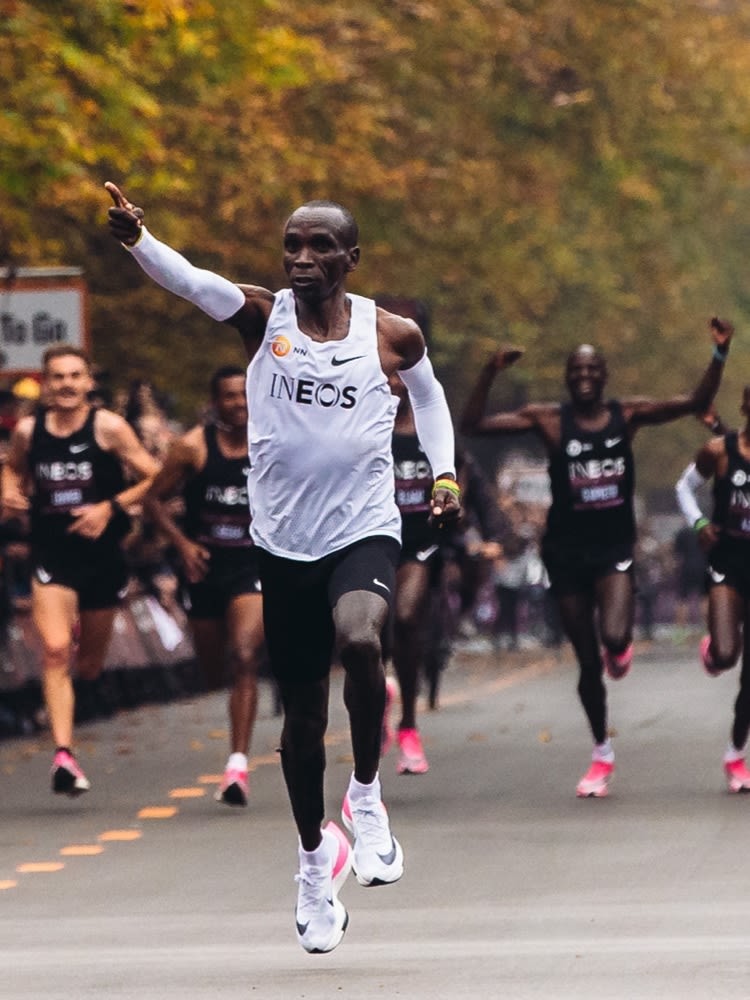
That’s one of several tests that at least 16 elite runners underwent during the selection process for Nike’s 2017 Breaking2 race, which Eliud Kipchoge ended up winning in 2:00:25. Now the scientists responsible, including teams from Andrew Jones’s group at the University of Exeter in Britain and the Nike Sport Research Lab in Beaverton, have published some of the data in the Journal of Applied Physiology. It’s grouped and anonymized, so we don’t get to obsess about the individual details of Eliud Kipchoge’s physiology, but it’s a pretty rare window into the characteristics of best-of-the-best runners. Here are some of the highlights.
The runners were “predominantly of East African ethnicity,” with average bests of 1:00:04 for the half marathon and 2:08:40 for the marathon at the time of testing (they’ve since run, on average, 59:53 and 2:06:53). All were drawn from the global pool of Nike-sponsored runners, with a particular focus on those with half marathon times that suggested the ability to handle two-hour pace. The only runners we know for sure were among the subjects are Kipchoge and his fellow Breaking2 finalists, Zersenay Tadese and Lelisa Desisa. The inclusion of runners like Tadese, who at the time held the half marathon world record of 58:23 but had only run 2:10:41 for the marathon, helps explain the relatively modest average marathon time.
The testing, which was completed at either the Nike campus or the University of Exeter, included a bunch of body measurements like height, weight, body fat, lung function, and the length and girth of various parts of the leg and foot. This stuff is interesting, since some researchers believe that factors like the length of the Achilles tendon can influence running economy, but there were no unusual results. Biomechanical testing of ten of the runners who were examined in Exeter found that six were forefoot strikers and four were heel strikers, and the most efficient runners had the shortest ground contact time with each step. Again, this is more or less what you’d expect based on previous studies of elite runners.
They also did a VO2 max test on the treadmill, with the speed increased in stages until the runners gave up. Between each treadmill stage, the runners hopped off the treadmill briefly to have their fingers pricked for a lactate measurement to determine their lactate threshold. Here there were some more surprising results. The average VO2 max was just 71.0 ml/kg/min, which is unexpectedly low given that the range expected for elite endurance athletes is typically about 70 to 85. The lowest value among the Nike runners was 62, which is astonishingly low, and the highest was 84, which is high but far from unprecedented. You can think of VO2 max as the size of the aerobic engine; whatever gifts made these runners special, it apparently wasn’t having a huge engine.
You’d expect, then, that they must be extraordinarily efficient. Their running economy, which is a measure of how much energy you burn at a given pace, was indeed pretty good, averaging 189 ml/kg/km on the treadmill. That’s consistent with previous studies that found typical values of around 190 ml/kg/km in elite runners (and substantially better than the values of 210 or higher seen in recreational runners at slower paces), although there was a lot of individual variation between the most and least economical. As in previous studies, there was an inverse relationship between VO2 max and running economy: those with the highest VO2 max tended to have the worst economy, and vice versa. Whether that’s inevitable for some physiological reason, or simply a reflection of the fact that even elite runners are unlikely to hit the genetic lottery twice, remains a topic of spirited debate.
To measure running economy, you have to be running aerobically, since oxygen consumption is used as a proxy for energy consumption. If you’re having to burn a lot of anaerobic energy to maintain the pace, the energy estimate will be inaccurate. Interestingly, only seven of the 16 runners were able to fulfill this requirement while running at 2:00 marathon pace. The other nine were above their “critical speed” at that pace, which tells you pretty much right away that they had no hope whatsoever of running a two-hour marathon. (To be fair, the testing had to be slotted in between seasons for some of the runners, so they may not have been in peak condition.)
In the classic mathematical model of marathon performance, there are three variables: VO2 max, running economy, and a third variable that represents what fraction of VO2 max you’re able to sustain over the course of a marathon. That third variable is often approximated by the lactate threshold, which is the speed at which your lactate levels begin to gradually creep up as you start relying more on anaerobic energy.
But well-trained marathon runners are actually able to run the distance at a slightly higher speed than their lactate threshold. In this study, the runners hit their lactate threshold at 83 percent of VO2 max on average. Their critical speed, which is roughly when lactate levels start shooting up more steeply instead of just creeping up, occurred at 92 percent of VO2 max. Marathon pace tends to be somewhere between those two markers. In fact, a previous study by Jones and Anni Vanhatalo found that elite marathoners tend to run their marathons at 96 percent of critical speed, which in this case works out to 88 percent of VO2 max.
If you run the numbers, using lactate threshold as marathon pace predicts that the runners in the study should average 2:15:24 for the marathon. Using critical speed predicts 2:02:55. Using the Goldilocks value of 88 percent of VO2 max, in contrast, gives a prediction of 2:08:31—almost exactly corresponding to their average best time at the time of testing, which was 2:08:40. The takeaway: your critical speed (which you can calculate as described here) offers a pretty good estimate of marathon pace, assuming your training is adequately geared for the distance.
After all this testing, the team selected Kipchoge, Desisa, and Tadese. Kipchoge turned out to be a great choice. Desisa is a mixed bag: he was injured before Breaking2, and hasn’t run particularly fast since, but he did win last year’s World Championships and also won New York in 2018 and was second in Boston in 2019. You could do worse. Tadese, on the other hand, has never really managed to put it together in the marathon, despite stellar lab values (in earlier testing, he had the best running economy ever measured).
What was missing for Tadese? Jones and his colleagues suggest that the mathematical model needs a fourth variable, which they call “fatigue resistance,” representing “the extent of the deterioration of the three [other variables] over time.” A previous study from the Breaking2 researchers explored how critical speed changes over two hours of exercise. The gist: it gets worse, and some people have a greater decline than others. Maybe Kipchoge is unusually gifted in this regard; maybe Tadese got dealt a weak hand. It seems clear that fatigue resistance is an important ingredient for marathon success, but the problem for running scientists is that there’s no convenient way of measuring it—other than, well, running a marathon.
For more Sweat Science, join me on Twitter and Facebook, sign up for the email newsletter, and check out my book Endure: Mind, Body, and the Curiously Elastic Limits of Human Performance.
(11/29/2020) ⚡AMPby Outside
Daniel Mateiko and Evelyne Chirchir Dominates 2020 Eldama Ravine Half Marathon
Daniel Mateiko and Evelyne Chirchir are the new winners of the second edition of Eldama Ravine Half Marathon held on 28/11/2020.Mateiko won 21km men in 63:01 followed closely by Ronald Kurui and Emmanuel Bor finished third in 63:23.
In women 21km category, Evelyne Chirchir won with a wider lead of almost a minute with time of 70:24 where Jackline Jepkemoi and Frankfurt Champion Valary Ayabei came second and third consecutively in time of 71:27: and 71:46.

Norah Jeruto won 10 km women 33:53, Dorcas Kimeli second in 34:07 and Daisy Cheptemei third 35:23. In 10 km men that was dominated by juniors Kenneth Renju closed 29:58 followed a distance by Weldon Kurui 30:16 and Michael Kibet wrapping top 3 with 30:20.
The race was ran with all athletes wearing a mask and only top 10 were allowed to remain after the race and the rest were released to go home.This was due to covid-19 government guidelines on combating the spread of virus.
(11/29/2020) ⚡AMPby Willie Korir
Walelegn breaks course Record Time for 2020 Airtel Delhi Half Marathon.
Ethiopian Amedework Walelegn is the new course record holder of Airtel Delhi Half Marathon in men's race with time of 58:53.
Ethiopian Amedework Walelegn dethroned his campatriot 2018 and 2019 winner Andamlak Belihu in a nail-bitting finish to win the Airtel Delhi Half Marathon men's race in a course record time of 58:53. Andamlak who was second settled for silver medal with a time of 58:54 while Stephen Kisa of Uganda Pocket bronze in 58:56.
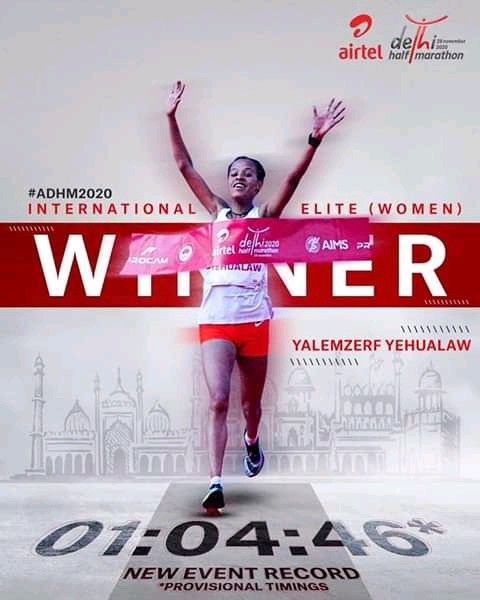
Walelegn who is 21-years- old broke 2014 course record set by his compatriot Guye Adola in 2014.
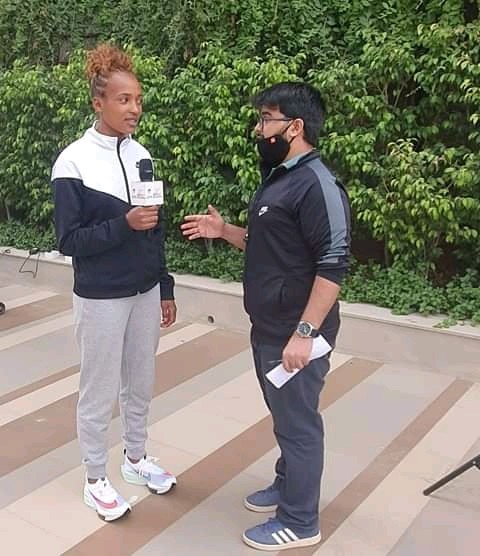
In women category Yalemzert Yahualaw beat reigning Marathon Champion Ruth Chepngetich by winning in a time of 64:46 while Ruth followed a distance in 65:06. Abadal Yeshaneh of Ethiopia was third with time of 65:21.
The course was different from the normal course because of covid-19 pandemic protocol. The runners had to cover around 4.5 km starting at Jawaharlal Nehru Stadium and then ran on two loops of about 6 km , before getting to the finish line outside the stadium by the same route. The route was sprayed with chemicals to minimise the effect of the annual toxic smog that blankets the megacity in winter due to traffic and industrial pollution crop subble, burning and cold temperature.
(11/29/2020) ⚡AMPby Willie Korir
Vedanta Delhi Half Marathon
The Airtel Delhi Half Marathon is a haven for runners, creating an experience, that our citizens had never envisaged. The streets of Delhi converted to a world-class running track. Clean, sanitized road for 21.09 kms, exhaustive medical support system on the route, timing chip for runners, qualified personnel to ensure smooth conduct of the event across departments. The race...
more...World cross country champion Hellen Obiri opens cross country season with victory in Machakos
World cross country champion Hellen Obiri launched her season in style, winning senior women's 10km race during the opening leg of Athletics Kenya Cross Country Series at the People's Park, Machakos.
Obiri, who is also the World 5,000m champion, took over the lead from world 3,000m steeplechase champion Beatrice Chepkoech after 3kms to tear apart the muddy course for victory in 32 minutes and 29.2 seconds.
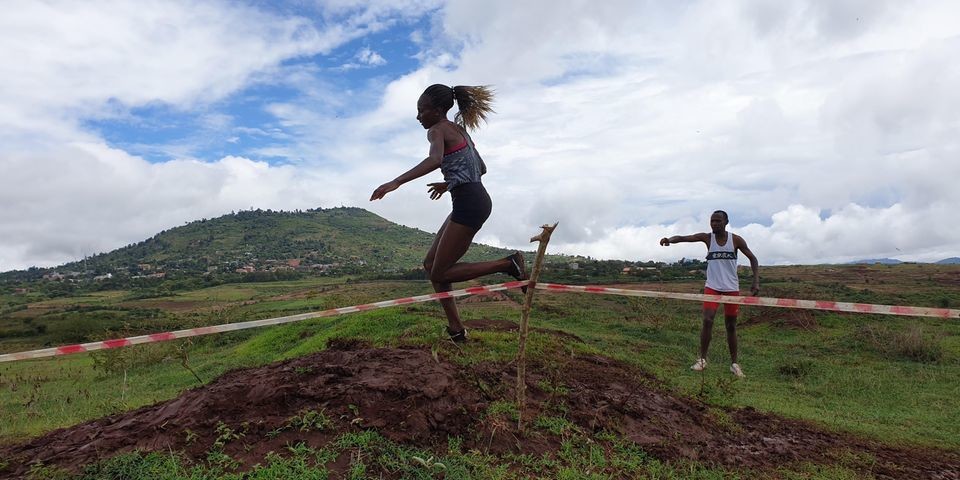
With Chepkoech, the world record holder in steeplechase, pulling out after 6kms, Caroline Nyaga from Kenya Police Services, came second in 32:46.8.
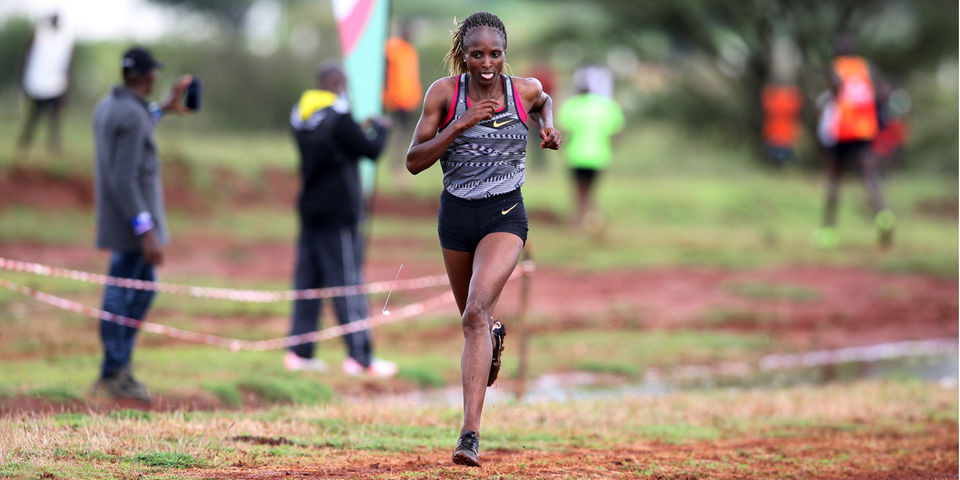
Steeplechaser, Kenyan-born Winfred Mutile of Bahrain, finished third in 32:47.5.
"The course looked challenging after the morning downpour but it's a great way to start the season as I focus on more races before the Tokyo Olympic Games next year," said Obiri.
Obiri, who won silver in 5,000m at the 2016 Rio Summer Games, said she will decide on whether to double up in 5,000m and 10,000m during the Tokyo Summer Games due July 23 to August 8 next year.
"With the World Cross Country Championships having been postponed to 2022, I will concentrate my energies on Olympics," said Obiri.
(11/28/2020) ⚡AMPby Ayumba Ayodi
Olympian Molly Seidel runs 34:33 10K dressed in a turkey suit
On Thursday, Olympic marathon qualifier Molly Seidel ran a 34:33 10K dressed as a turkey (wings and all). That’s 3:26 per kilometre, in full turkey garb. A few weeks ago she announced her goal of becoming the Fastest Known Turkey (impersonator) and accomplished her task on Thanksgiving morning.
Seidel was accompanied by a few friends and family members for a small race on Cranberry Island, Maine.
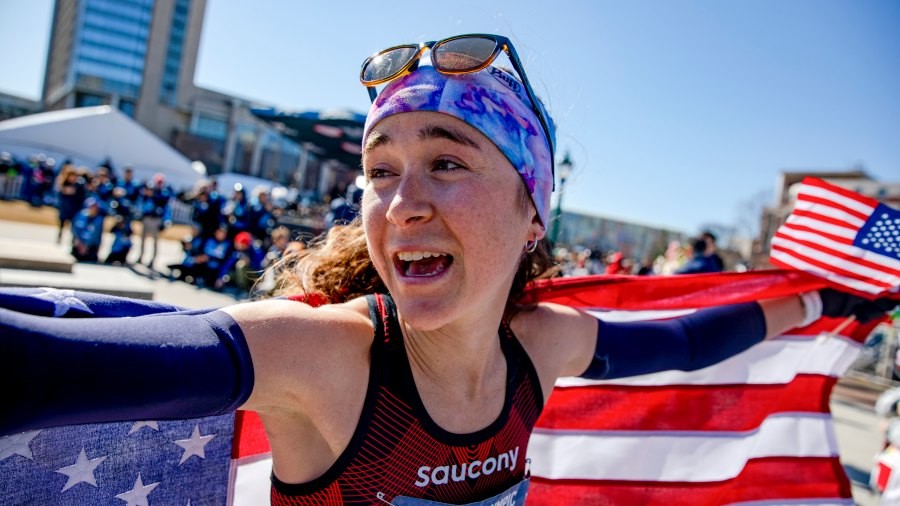
The 26-year-old has had a good year, already qualifying for the 2021 Olympics in the marathon. On top of being a future Olympian, she is an NCAA champion in the 10,000m and she owns a 2:25:13 personal best from the London Marathon.
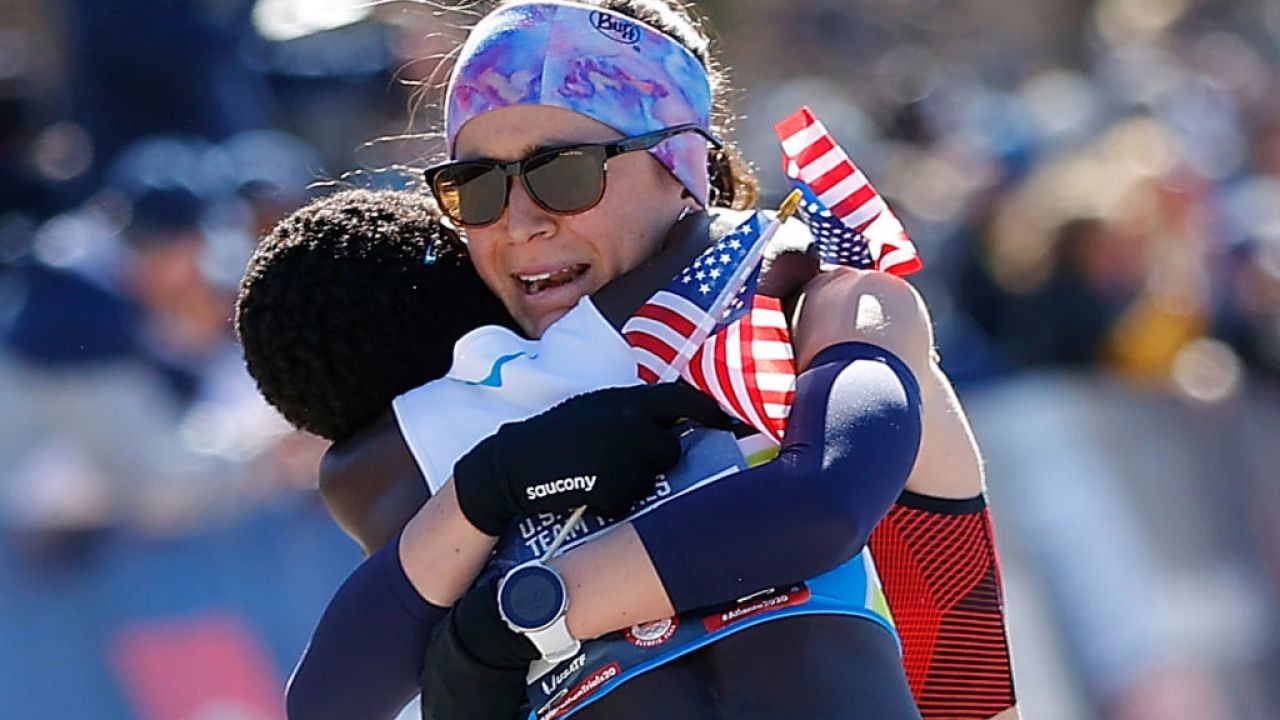
Seidel was participating in the 2020 Virtual Peachtree 10K, one of the most prestigious 10K races in the U.S. In order to clock the fastest time possible, Seidel will run the distance twice.
Her first attempt was yesterday’s literal turkey trot and her second will come in a few days’ time, back home in Boston in typical running clothes. She predicts that she’ll shed 30 seconds when she ditches the suit.
Seidel did confirm on Instagram that she in fact cooked a turkey, after dressing as one for her run.
(11/28/2020) ⚡AMPby Madeleine Kelly
Best-case scenario for Games is venues full of spectators - Tokyo governor
•With Covid-19 infections on the rise in many countries around the world, Olympics organisers have yet to decide whether to allow spectators into venues next year and if so, how many.
•The Japanese government is preparing to pause the travel campaign in Osaka and Sapporo following sharp rises in Covid-19 cases
Tokyo Governor Yuriko Koike said on Tuesday that the best case scenario for the 2020 Olympics postponed until next year is to have venues full of spectators, as organisers wrestle with how to plan for the Games amid the novel coronavirus pandemic.
With Covid-19 infections on the rise in many countries around the world, Olympics organisers have yet to decide whether to allow spectators into venues next year and if so, how many.

Koike, speaking at the Foreign Correspondents’ Club of Japan, said organisers were still hopeful venues could be filled with spectators when the Olympics begin in July.
“The best-case scenario ... would be when all athletes from all countries come here in safety and with peace of mind and the Olympics can, as in previous years, be held with full spectators present as well,” said Koike.
Organisers have said previously they will not make a decision on spectator numbers until the spring. Although Japan has largely avoided the huge numbers of COVID-19 infections seen in other countries, daily cases in Tokyo rose to records above 500 last week.
Koike warned that Tokyo was seeing a rise in infections among older residents, including cases where people had contracted the virus while eating out and brought it home to elderly relatives.
She is due to meet with Japanese Prime Minister Yoshihide Suga later on Tuesday to discuss a domestic travel promotion campaign introduced by the government earlier this year to try to stimulate local economies hit by the near-complete absence of foreign tourism amid the pandemic.
“It is clear that the movement of people is having an impact on the increase in cases,” Koike said. “It is necessary to look at what kind of restrictions on the movement of people might be needed.”
The Japanese government is preparing to pause the travel campaign in Osaka and Sapporo following sharp rises in Covid-19 cases, the minister handling the government’s coronavirus response said on Tuesday.
(11/28/2020) ⚡AMPTokyo 2020 Olympic Games
Fifty-six years after having organized the Olympic Games, the Japanese capital will be hosting a Summer edition for the second time, originally scheduled from July 24 to August 9, 2020, the games were postponed due to coronavirus outbreak, the postponed Tokyo Olympics will be held from July 23 to August 8 in 2021, according to the International Olympic Committee decision. ...
more...Kilian Jornet drops out of 24-hour running world record attempt, feeling dizzy and seeking medical evaluation
The mountain running superstar swapped trails for tracks in an attempt to beat Yainnis Kouros’ 303.506km record set in 1985
Jornet completes 134km before doctors advise him to seek help for dizzinessKilian Jornet has dropped out of his 24-hour running record due to dizziness. The famous mountain runner did continuous loops of a track in Norway in an attempt to set a new distance covered in a day.
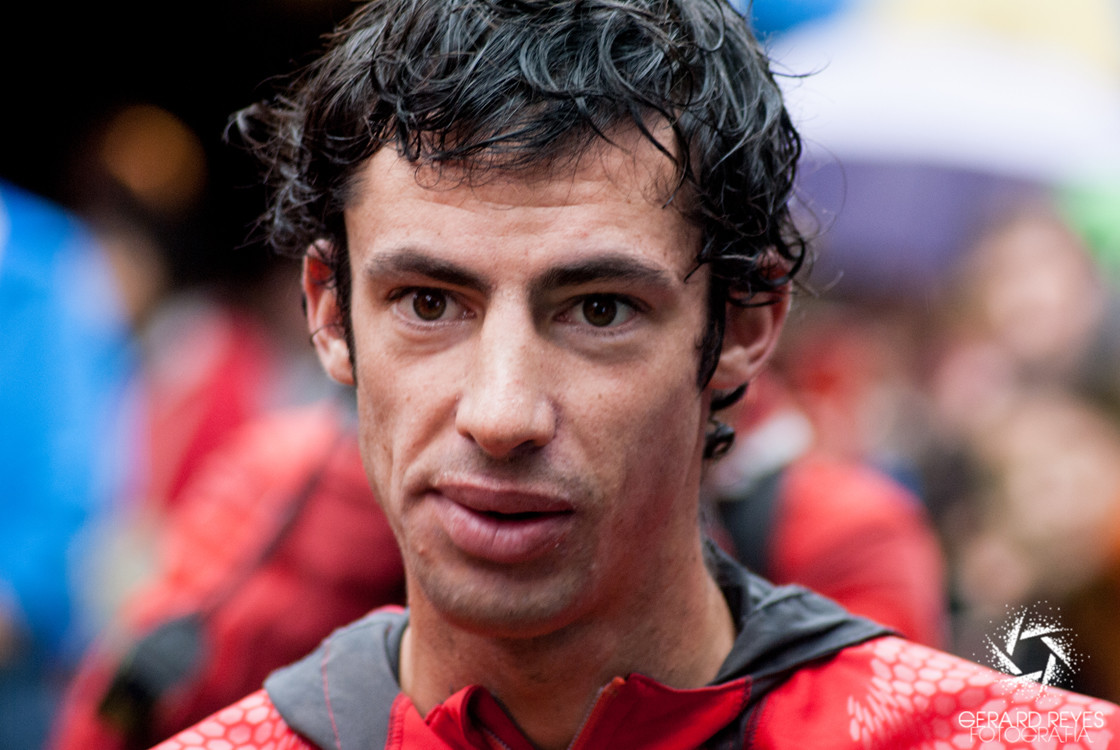
Jornet had run 134km after 337 laps. The record he was going for is Yainnis Kouros’s 303.506km set in 1985.
The Salomon team shared an Instagram story, firstly showing Jornet receiving physio on his knee, then announcing he dropped out and finally explaining: “Kilian was feeling dizzy, so he received medical attention on the track. Although he was feeling better, the medical professionals decided it was best for him to go for further evaluation.”
Kouros, from Greece, is considered the best road ultra runner of all time. His 24-hour record has stood for an incredible 35 years. He also holds the 48-hour record on a track (473km), set in 1996 and the six-day record (1,036km) set in 2005.
Jornet is no stranger to turning over historical records. He set the record on the 106km Bob Graham Round in England in 2018, beating Billy Bland’s time that had stood for 36 years.
Kilian Jornet has dropped out of his 24-hour running record due to dizziness. The famous mountain runner did continuous loops of a track in Norway in an attempt to set a new distance covered in a day.
Jornet had run 134km after 337 laps. The record he was going for is Yainnis Kouros’s 303.506km set in 1985.
The Salomon team shared an Instagram story, firstly showing Jornet receiving physio on his knee, then announcing he dropped out and finally explaining: “Kilian was feeling dizzy, so he received medical attention on the track. Although he was feeling better, the medical professionals decided it was best for him to go for further evaluation.”
Kouros, from Greece, is considered the best road ultra runner of all time. His 24-hour record has stood for an incredible 35 years. He also holds the 48-hour record on a track (473km), set in 1996 and the six-day record (1,036km) set in 2005.
Jornet is no stranger to turning over historical records. He set the record on the 106km Bob Graham Round in England in 2018, beating Billy Bland’s time that had stood for 36 years.
However, the 24-hour record presented a challenge out of Jornet’s comfort zone. He is best known for his domination in the mountains. He has won nearly every high profile trail race, and holds the records at many of them.
He has won the Ultra Trail du Mont Blanc three times, Hardrock 100 four times, setting the course record in 2015 and winning with a dislocated shoulder in 2017.
Jornet has six 31km Sierre Zinal titles, setting the record on his latest win in 2019. He won the Western States in 2011. He also holds seven 42km Zegama-Aizkorri wins in Spain.
“For me it’s an unknown terrain,” Jornet said before his 24-hour record attempt. “If I tell you some predictions I will be lying because I really don’t have a clue. I’ve never ran a race on a track and the longest distance I’ve trained on flat is 90km.”
(11/28/2020) ⚡AMPWHO announces new physical activity guidelines
According to new WHO guidelines, adults should be doing up to 300 minutes of exercise a week
On Tuesday the World Health Organization announced their physical activity guidelines, taking aim at the inactivity caused by the global pandemic. According to WHO, one in five adolescents and one in four adults aren’t getting enough physical activity, which is costing roughly $54 billion in direct health care. They’re recommending up to 300 minutes of activity a week in adults and 60 minutes a day for children and adolescents.
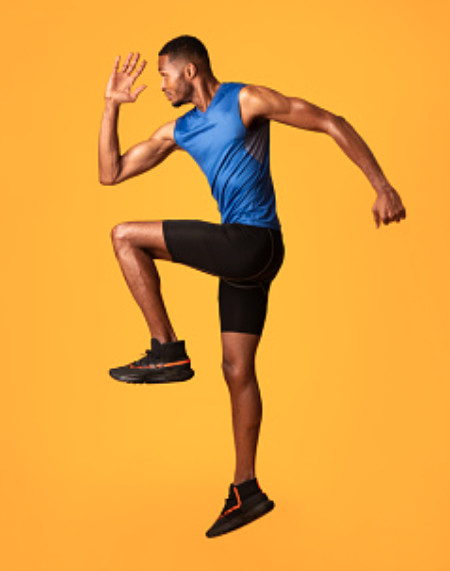
While this shouldn’t be a problem for an avid runner, some research suggests that even among historically active populations, activity levels have dropped since the pandemic began. One study reported that the group that saw the biggest downward swing in activity levels has been the under-40 crowd, with younger people formerly responsible for the most activity of anyone ahead of the pandemic, and the least as lockdown restrictions eased.
People aged 24-35 saw the biggest rise and fall between January 22 and June 17, with many users in this age bracket removing exercise from their schedule completely. This can likely be attributed to the high-stress situations that many young families were experiencing in their home life. With young children, jobs and limited access to child care, exercise fell to the wayside.
The WHO recommends between 150 and 300 minutes of activity for adults, which is actually a lot of running when it’s broken down. That would mean going on a 43-minute run every day to hit 300 minutes. However, walking, cycling and strength training all count as well. When considered from this angle, it’s an extremely attainable number.
How to get back into running
Thankfully, no matter what stage of the pandemic your country is in, chances are you can go for a run. If you found yourself taking an unscheduled break from the sport over the past few months, returning should be done gradually. Start with walk-runs and work your way up slowly. The rule of thumb is to add about 10 per cent to your mileage each week.
(11/28/2020) ⚡AMPby Running Magazine
North Carolina runner reclaims basketball mile world record in 4:33.73
Dylan Sorensen beat the previous record by just .02 seconds
In May, University of North Carolina (UNC) track coach Dylan Sorensen broke the world record for the fastest mile while dribbling a basketball. He ran an impressive 4:37 to beat the record by 15 seconds. In the months following Sorensen’s run, his record was lowered twice, and heading into his attempt on November 18, the time to beat was 4:33.75. He managed to win the record back, but he cut it close, running a 4:33.73, just 0.02 seconds quicker than the previous mark. Sorensen used his run as a chance to raise money for the FORevHer Tar Heels program, a UNC nonprofit for female student athletes.

A popular challenge
Since former U.S. Olympian Nick Symmonds ran a world record time of 5:29 in August 2019, the basketball mile has become really popular. Not long after Symmonds’s run, a runner from California Polytechnic State University named Thomas Schauerman became the first person to break five minutes in the event, completing the mile in 4:52. Sorensen was the next to beat the record with his 4:37 in May.
A couple of months later, Sorensen’s mark was beaten by former OFSAA 3,000m champion Tennessee Tremain of Guelph, Ont., who ran 4:33.9. In September, the record was lowered once more when Yale University cross-country runner Thomas Cirrito posted a 4:33.75, just barely bettering Tremain’s time. Now, the record is back in Sorensen’s name, but at the rate this event is contested, it might not be his for long.
The women’s basketball mile has also been a popular challenge this year, and it has been lowered on several occasions, including once in July when Sydney Masciarelli ran 5:08.5. Masciarelli recently signed with UNC, so she will be coached by Sorensen, meaning the two will have plenty of chances to work together to run more basketball miles. The current women’s record sits at 4:58.56, and it belongs to BYU’s Whittni Orton.
Sorensen’s run
Sorensen ran at Georgetown University in Washington, D.C., and while still competing, he posted PBs of 3:47.28 for the 1,500m 4:06.27 for the mile. These are quick times, and Sorensen’s experience in the world of elite track has clearly served him well with his record attempts. His 4:33.73 basketball mile result works out to a blazing-fast pace of 2:50 per kilometre. As he said after the run, “the record is a very small part of this,” noting that his main focus was to raise money for FORevHer Tar Heels. He has yet to post how much money he fundraised, but his run garnered a lot of attention, so the final tally could be quite high.
(11/28/2020) ⚡AMPby Running Magazine
Defending champion Gemechu eyes hat-trick of course records at Delhi Half Marathon
Two-time defending champion Ethiopia''s Tsehay Gemechu on Thursday said she is aiming to break the course record for the third time in the women''s race of the Airtel Delhi Half Marathon here on Sunday.
The 21-year-old Gemechu made a huge impact on her ADHM debut in 2018, setting a women''s course record of 66:50. She then went on to better her own record by 50 seconds when she ran a stunning personal best of 66 minutes last year.
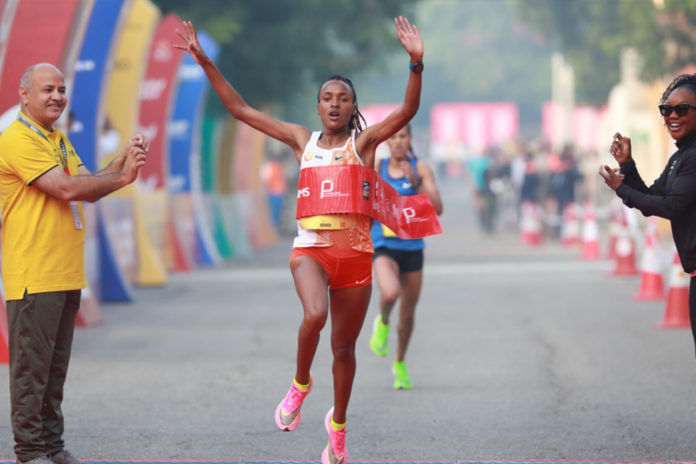
"This year again I''m going to try for the course record. After corona I have done a lot of training and I am in shape to go even faster than last year," Gemechu said at the pre-race press conference.
Her compatriot, men''s defending champion Andamlak Belihu, who will be aiming for an unprecedented third successive victory like Gemechu, also expressed his desire to break the course record.
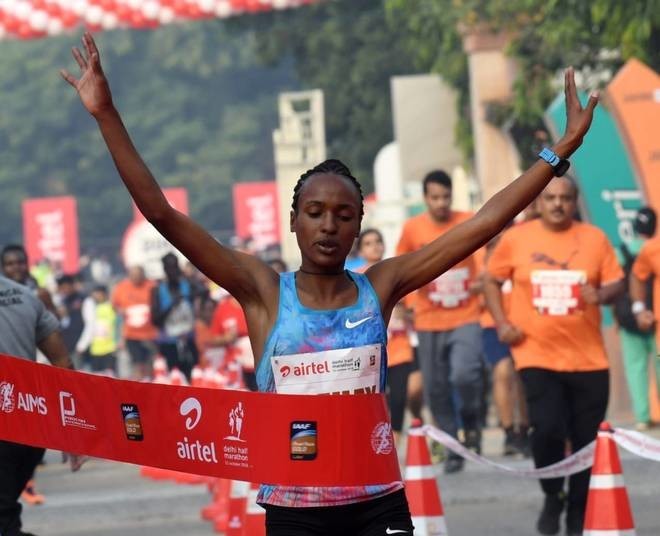
The 22-year-old is coming off a fifth place finish in the World Athletics Half Marathon Championships and said he is in good shape despite the coronavirus pandemic stalling training earlier this year.
"I came fifth in the World Half Marathon Championships and after that I trained for a month to five weeks and my training improved. So, I''m expecting to go for the race record like last year. I''m in similar or maybe even better shape," Belihu said.
"Last year, I was just four seconds outside the course record (59:06 set by Ethiopia''s Guye Adola in 2014) and I think I can find the difference," the two-time champion added.
The 16th edition of the ADHM will see one of the best fields of international elite athletes with an unprecedented 13 men, having run under the world class bench mark of one hour, and seven women clocking sub-67 minutes results.
This year''s ADHM has two women''s world record holders in Kenya''s Brigid Kosgei (marathon record) and Ethiopian Ababel Yeshaneh (half marathon record) and an enticing battle between the two is on the cards.
"I am coming here looking to show what I can do after finishing fifth at the World Half," Yeshaneh said.
"I fell there (about three kilometres from the finish) and was very frustrated, finishing in tears, because I know I was in shape to win but you just have to pick yourself up and carry on. I have brought the shape I had in Poland to Delhi."
On the other hand, Kosgei stunned the world when she broke the long-standing women''s world marathon record by more than a minute at the 2019 Chicago Marathon, clocking 2:14:04, with Yeshaneh a distant second on that occasion although she still ran a superb personal best of 2:20:51.
However, Yeshaneh prevailed with a world record 64:31 at the Ras Al Khaimah Half Marathon in February this year with Kosgei (64:49) finishing second. More recently, Kosgei won the London Marathon on October 4 with a timing of 2:18:58.
"After London, I took 10 days off, but I have since had six weeks very good preparation for this race. I have a good record in half marathons, but I am not going to make predictions about this race as it is a very tough field," commented Kosgei.
(11/27/2020) ⚡AMPVedanta Delhi Half Marathon
The Airtel Delhi Half Marathon is a haven for runners, creating an experience, that our citizens had never envisaged. The streets of Delhi converted to a world-class running track. Clean, sanitized road for 21.09 kms, exhaustive medical support system on the route, timing chip for runners, qualified personnel to ensure smooth conduct of the event across departments. The race...
more...Olympic 1,500m champion Faith Kipyegon seeks to transition to 5,000m after Olympic Games
Olympic 1,500m champion Faith Chepngetich Kipyegon is considering a new challenge after the 2021 Olympic Games in Tokyo, Japan.
Speaking at her Global Sports Communication training camp in Kaptagat, Kipyegon said she will be upgrading to the 5,000m event after a successful career in the three-lap race.
“My focus has now shifted and I want to compete in 5,000m after the Tokyo Olympic Games. This is my dream as I seek new challenges in my career,” said Kipyegon.
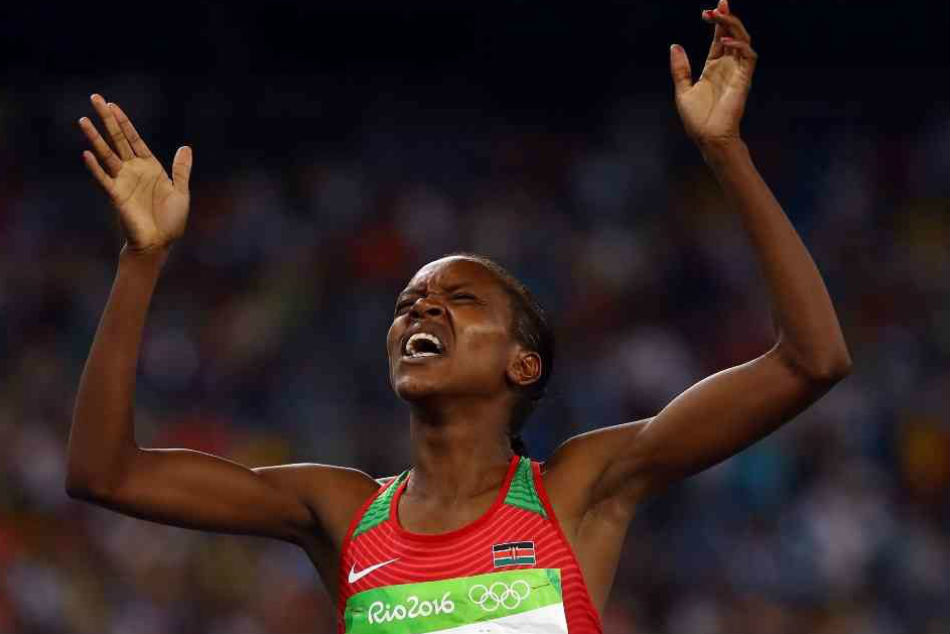
However, the reigning world 1,500m champion added she is not keen on doubling like her mentor, Vivian Cheruiyot — who dominated both the 5,000m and 10,000m races before heading for the roads.
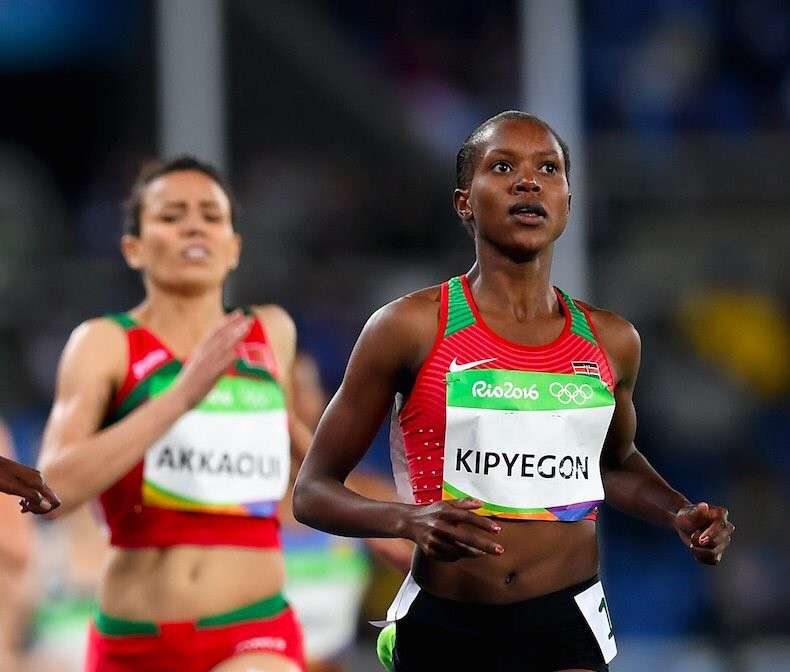
“When I was young, I used to watch Vivian (Cheruiyot) running across the world and I admired her, hence started taking the sport seriously. Now that I have the opportunity to showcase my talent, I hope to make it to the top, like her, when I transit to the next level,” said Kipyegon, who was with former world 3,000m steeplechase champion Hyvin Kiyeng.
Kipyegon has had a stellar career over 1,500m, which, in addition to the Olympic and world titles, saw her win numerous Diamond League Series legs, 2014 Commonwealth Games in Glasgow as well as cross country.
Elsewhere, the Diamond League on Tuesday released its provisional calendar for the 2021 season, which will consist of 14 athletics meetings beginning in Rabat in May and ending in Zurich in September.
(11/27/2020) ⚡AMPby Emmanuel Sabuni
Tokyo 2020 Olympic Games
Fifty-six years after having organized the Olympic Games, the Japanese capital will be hosting a Summer edition for the second time, originally scheduled from July 24 to August 9, 2020, the games were postponed due to coronavirus outbreak, the postponed Tokyo Olympics will be held from July 23 to August 8 in 2021, according to the International Olympic Committee decision. ...
more...Two-time world marathon champion Abel Kirui seeks redemption in Valencia after skipping Amsterdam race due to pandemic
Two-time world marathon champion Abel Kirui is targeting a podium finish at the Valencia Marathon on December 6 to cure the pain of missing out on the Amsterdam Marathon that was cancelled due to the Covid-19 pandemic.
“We have been crying due to lack of races across the world and now a chance has come our way. I have to do my best to ensure I get to the podium,” Kirui said.
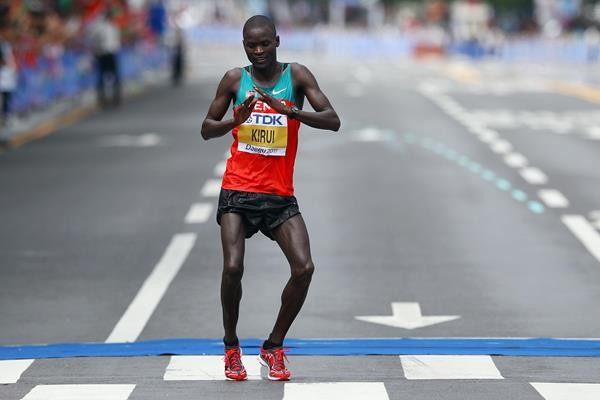
A late entry into the marathon start list, Kirui expects a tough race as all the other athletes have been training intensely with their eyes fixed on the prize.
"This will be the battle for the greats. All athletes heading to Valencia are ready and that shows the race will be tough. Expect fireworks at the finish line,” the 2012 London Olympics marathon silver medalist said.
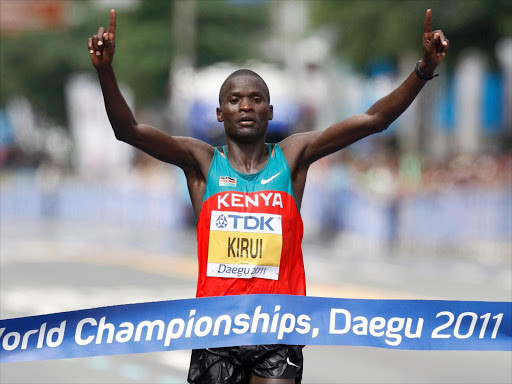
Kirui has had a chequered career in road races and will be relying on his pedigree to reap dividends despite the long period of sporting inactivity. He won the world marathon title in 2009 in Berlin and defended the title in 2011 in Daegu.
Kirui also crossed the finish line first and second at the Chicago Marathon in 2016 and 2017.
Another marathoner hoping to reap from the virtue of patience is two-time Toronto marathon champion Philemon Rono who missed out on the Boston Marathon that was similarly cancelled due to the pandemic.
Rono, who has been training at Kaptagat for the better part of the year, is confident his efforts will earn him a podium finish in the Spanish city.
"This is my first race after Toronto Marathon in 2019 and it is one that came by chance. I have to secure good results because my fitness is in top gear,” Rono, who started out as a pacesetter, said.
Popularly known the 'Small Police' in athletics circles, Rono won the Toronto marathon in 2017 before losing the title to Benson Kipruto in 2018. However, he reclaimed his title in 2019.
(11/27/2020) ⚡AMPby Emmanuel Sabuni
VALENCIA TRINIDAD ALFONSO
The Trinidad Alfonso EDP Valencia Marathon is held annually in the historic city of Valencia which, with its entirely flat circuit and perfect November temperature, averaging between 12-17 degrees, represents the ideal setting for hosting such a long-distance sporting challenge. This, coupled with the most incomparable of settings, makes the Valencia Marathon, Valencia, one of the most important events in...
more...Christian Coleman has formally appealed doping ban
Men's 100-meter world champion Christian Coleman has formally appealed against his two-year ban for missing multiple doping tests, the Court of Arbitration for Sport said Thursday.
The court also received an appeal by the World Athletics governing body against a decision to clear women's 400-meter world champion Salwa Eid Naser on a technicality despite facing similar charges as Coleman.
The verdicts in the separate cases will have a big impact on two of the most anticipated sprint events at the Tokyo Olympics next year.
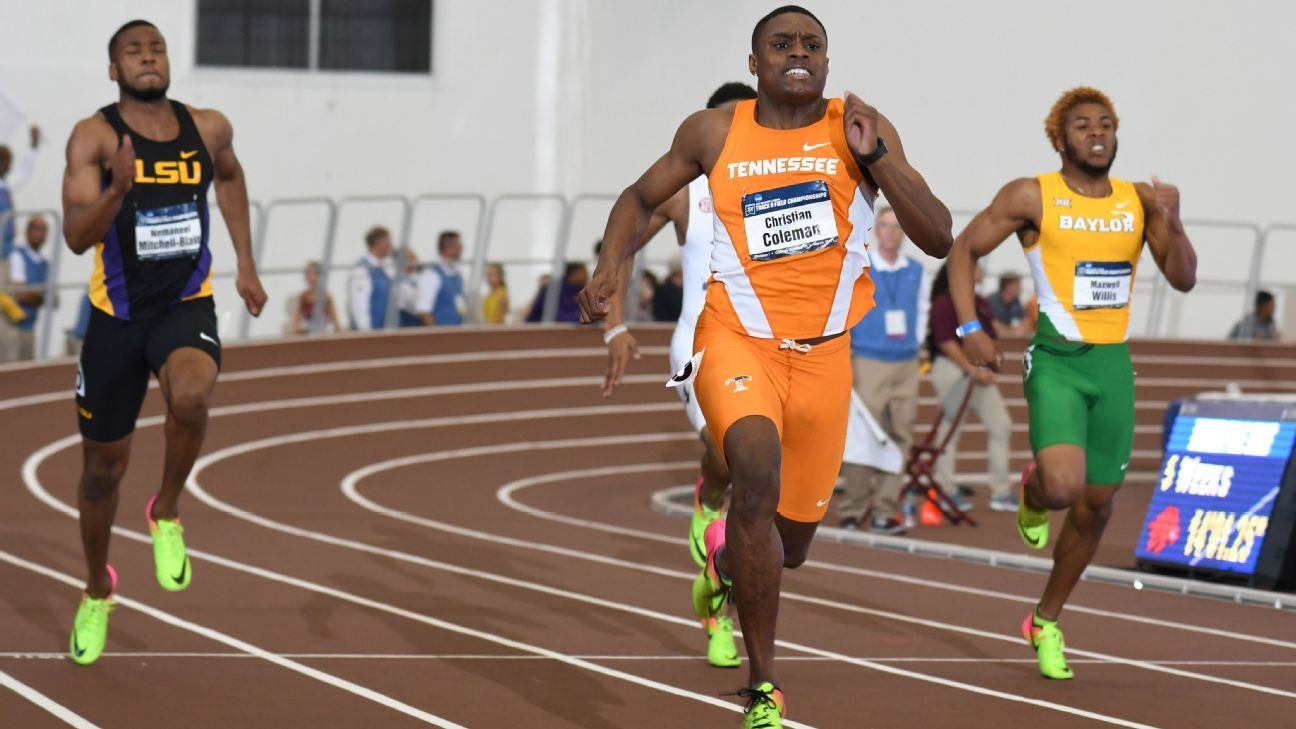
Coleman is challenging a two-year ban imposed last month by an independent tribunal at track and field's Athletics Integrity Unit.
The American sprinter had three so-called "whereabouts failures" -- missed tests or not updating details where sample collection officials could find him -- in a one-year period to trigger a doping violation.
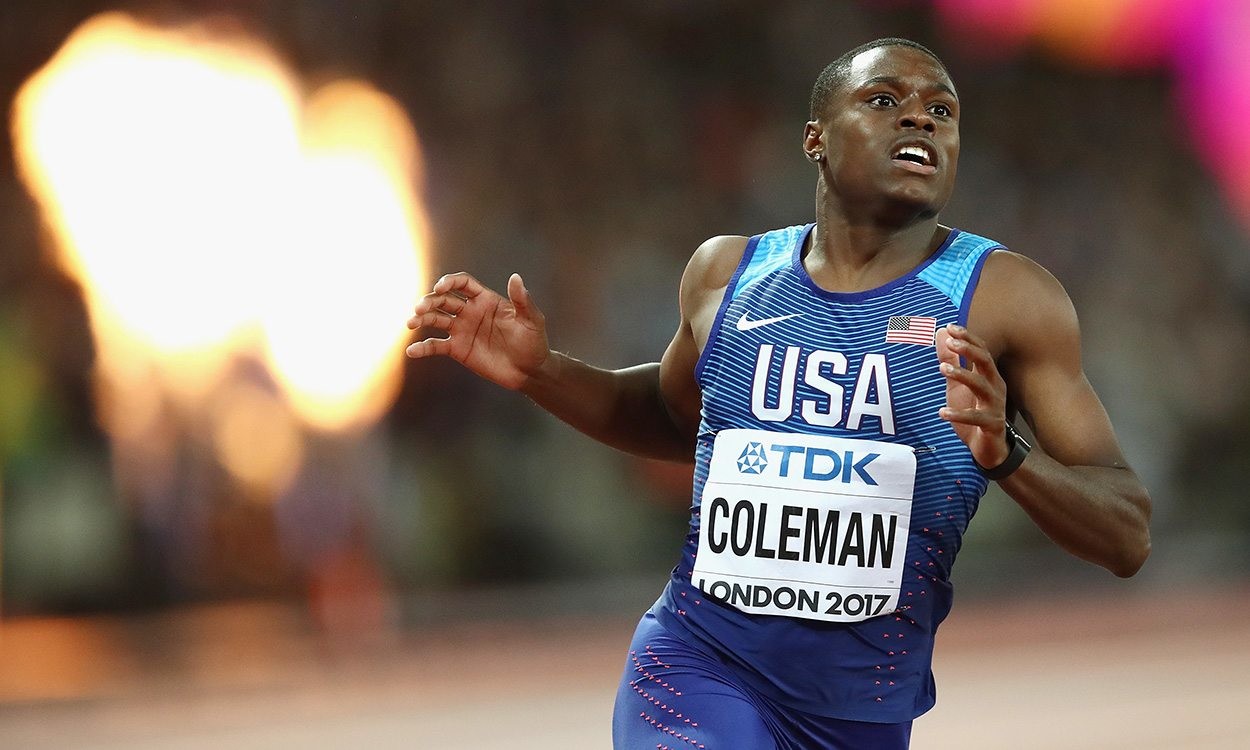
Coleman asked for his ban, which currently rules him out of the Olympics, to "be eliminated, or in the alternative, reduced," the court said in a statement.
He had previously avoided a ban before the 2019 worlds in Doha, Qatar, when he benefited from the same technicality later cited to clear Naser.
In Naser's case, World Athletics is appealing against the tribunal's decision last month to let her off without a ban.
Although the Nigeria-born Bahraini did have three whereabouts incidents within a 12-month calendar period, they technically counted as spanning more than one year.
World Athletics has requested a two-year ban for Naser, CAS said, adding it is now appointing panels of judges to handle the cases.
CAS typically take several months to prepare and judge an appeal, although fast-track decisions can be reached if all parties agree to cooperate.
(11/27/2020) ⚡AMPby Associated Press
Defending champions Belihu and Gemechu believe that course records could fall at the Airtel Delhi Half Marathon 2020
The topic of discussion at the traditional pre-race press conference for the Airtel Delhi Half Marathon on Thursday was whether the course records could be broken at this year’s World Athletics Gold Label Road Race on Sunday (29). The response was resoundingly positive from everyone.
"I have been training very well, and I was disappointed with my fifth place at the World Half Marathon Championships in Poland last month, so I am in shape and very motivated to run well here," commented the two-time men’s defending champion Andamlak Belihu, from Ethiopia.
"Last year, I was just four seconds outside the course record (59:06 set by Ethiopia’s Guye Adola in 2014) and I think I can find the difference." On Sunday, Belihu will be bidding for an unprecedented third successive title in the Indian capital but the course he will cover is radically different to the one he won on in 2018 and 2019.
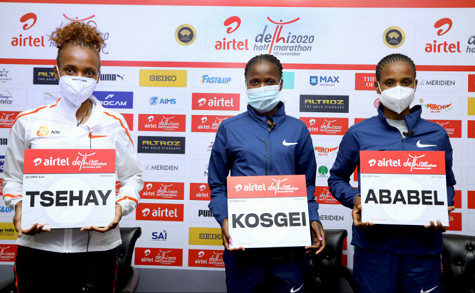
To comply with prevailing health-related related measures, the runners will cover around 4.5 kilometres, starting at the Jawaharlal Nehru Stadium, and then embark on two loops of approximately six kilometres, before returning to the finish outside the stadium by the same route.
"However, with smoother corners, less undulations and with the elite runners not having to contend with mass-race participants, I believe this is a faster course than previous years," said race director Hugh Jones.
Belihu’s compatriot Tsehay Gemechu, who revised the women’s course record when winning in both 2018 and 2019 - it currently stands at 66:00 - concurred with the comments about course records being in danger.
"I am in shape to go even faster than last year," said Gemechu. However, the defending champion will face an even stronger set of rivals on Sunday than the two outstanding fields she defeated in the past two years.
On the start line will be Gemechu’s fellow Ethiopian and world half marathon record holder Ababel Yeshaneh.
"I am coming here looking to show what I can do after finishing fifth at the World Half. I fell there (about three kilometres from the finish) and was very frustrated, finishing in tears, because I know I was in shape to win but you just have to pick yourself up and carry on. I have brought the shape I had in Poland to Delhi," said Yeshaneh
This year’s Airtel Delhi Half Marathon can boast of not one but two world record holders in the women’s race.
Kenya’s Brigid Kosgei stunned the world when she broke the long-standing women’s world marathon record by more than a minute at 2019 Chicago Marathon, clocking 2:14:04, with Yeshaneh a distant second on that occasion although she still ran a superb personal best of 2:20:51.
However, at the Ras Al Khaimah Half Marathon in February this year Yeshaneh prevailed in a world record 64:31 with Kosgei second in 64:49. More recently, Kosgei won the London Marathon on 4 October in 2:18:58. "After London, I took 10 days off, but I have since had six weeks very good preparation for this race. I have a good record in half marathons, but I am not going to make predictions about this race as it is a very tough field. Some of the ladies may be better prepared as they competed at the World Half Marathon Championships last month," commented Kosgei.
(11/26/2020) ⚡AMPVedanta Delhi Half Marathon
The Airtel Delhi Half Marathon is a haven for runners, creating an experience, that our citizens had never envisaged. The streets of Delhi converted to a world-class running track. Clean, sanitized road for 21.09 kms, exhaustive medical support system on the route, timing chip for runners, qualified personnel to ensure smooth conduct of the event across departments. The race...
more...World Triathlon proposing a new elimination style race for inclusion at Paris 2024
A new elimination style individual event is being proposed by World Triathlon for inclusion at the 2024 Olympic Games in Paris.
insidethegames understands World Triathlon has put forward five medal events - the eliminator for men and women, the traditional elite races and a mixed relay - on its Paris 2024 event programme that it has submitted to the International Olympic Committee (IOC).
The exact format of the eliminator concept - which could see athletes compete over a set number of rounds, with the lowest few athletes removed from the field after each heat - has not yet been confirmed.
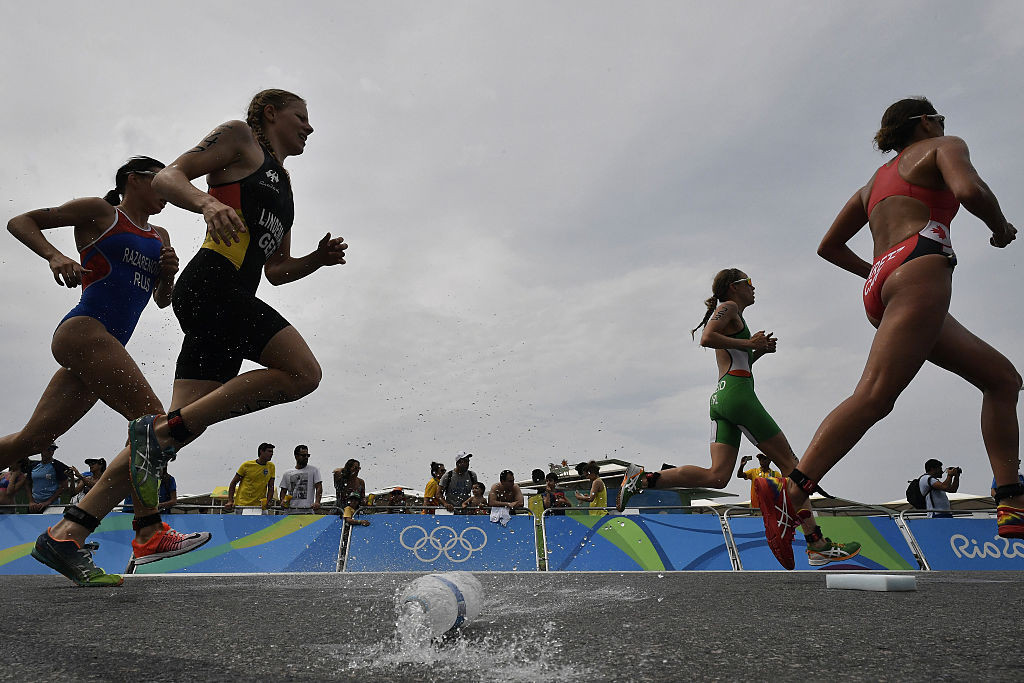
The distance of the event and other details such as the order of the disciplines has also not yet been ironed out, but it has been suggested it could use the super sprint format of a 400 metres run, a 10km bike and a 2.5km swim.
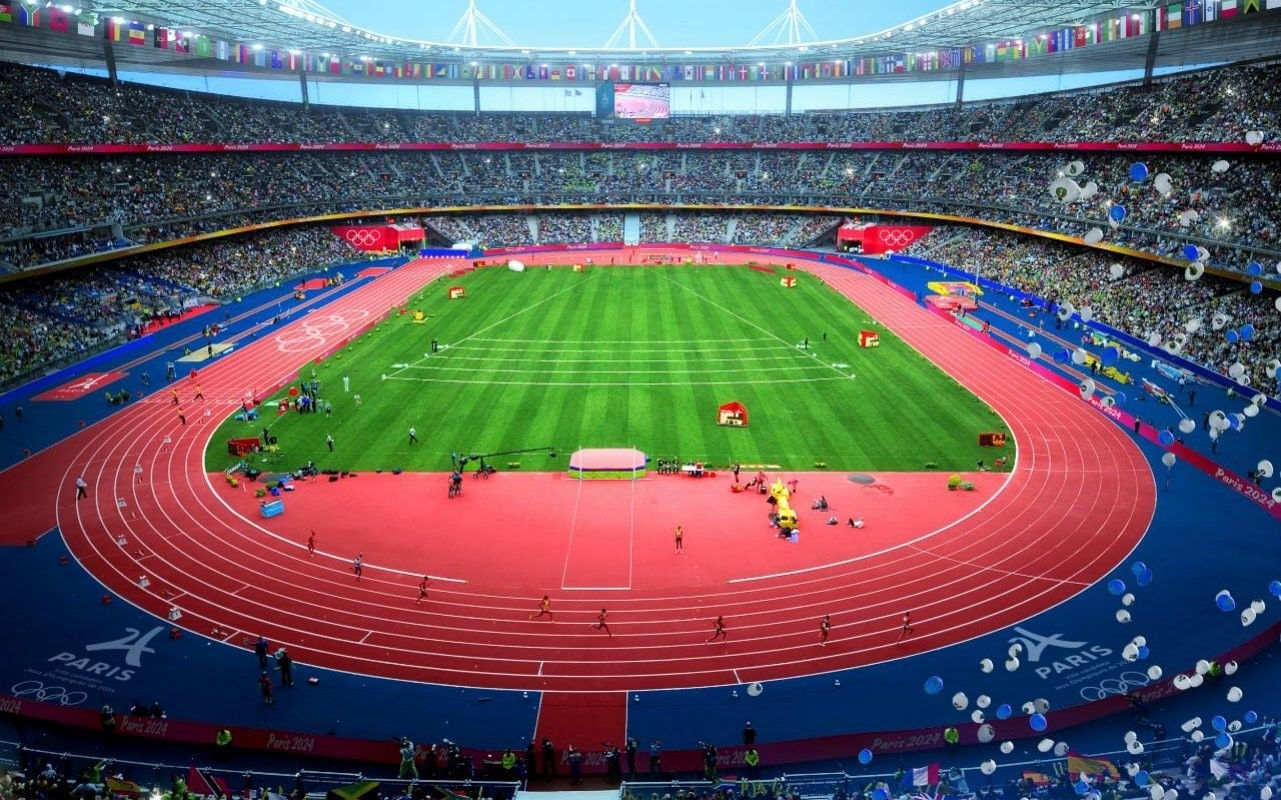
World Triathlon believe the eliminator concept would not increase its athlete quota for Paris 2024 and it could be held using the same course as the mixed relay, which is set to make its Olympic debut at the postponed Tokyo 2020 Games next year.
The IOC, which is due to confirm the Paris 2024 event programme at its Executive Board meeting next month, has outlined its opposition to new events if they increase the number of athletes but has suggested it is open to their inclusion if it is contested by the same set of competitors.
World Triathlon President Marisol Casado has consistently spoken of the need to enhance the sport's presence at the Olympics.
Casado, who will face a challenge from Denmark's Mads Freund when she stands for re-election during the organisation's virtual General Assembly on Sunday (November 29), has previously floated ideas such as races including semi-finals and finals in order to improve the appeal of triathlon.
(11/26/2020) ⚡AMPby Liam Morgan
Paris 2024 Olympic Games
For this historic event, the City of Light is thinking big! Visitors will be able to watch events at top sporting venues in Paris and the Paris region, as well as at emblematic monuments in the capital visited by several millions of tourists each year. The promise of exceptional moments to experience in an exceptional setting! A great way to...
more...Kenya's Brigid Kosgei dismisses fears over virus and Delhi pollution
Women’s marathon world record holder Brigid Kosgei said on Thursday she was gearing up for New Delhi’s half-marathon on Sunday, dismissing fears around the novel coronavirus outbreak and polluted air in the capital city.
The 26-year-old, who won the London Marathon in October, will race alongside many of the world’s leading long-distance runners at the Airtel Delhi Half Marathon 2020.
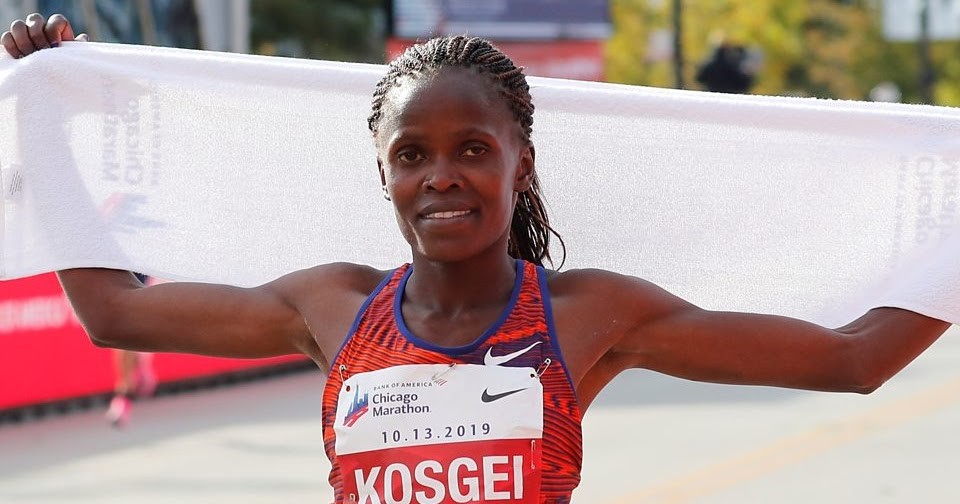
“When I told my family that I want to go to India for a marathon even during a pandemic, they supported my decision and told me to do well and take care of myself,” Kosgei told reporters at a news conference on Thursday.
India’s confimed cases of coronavirus infections stands at 9.27 million, the second-highest in the world after the United States, according to a Reuters tally.
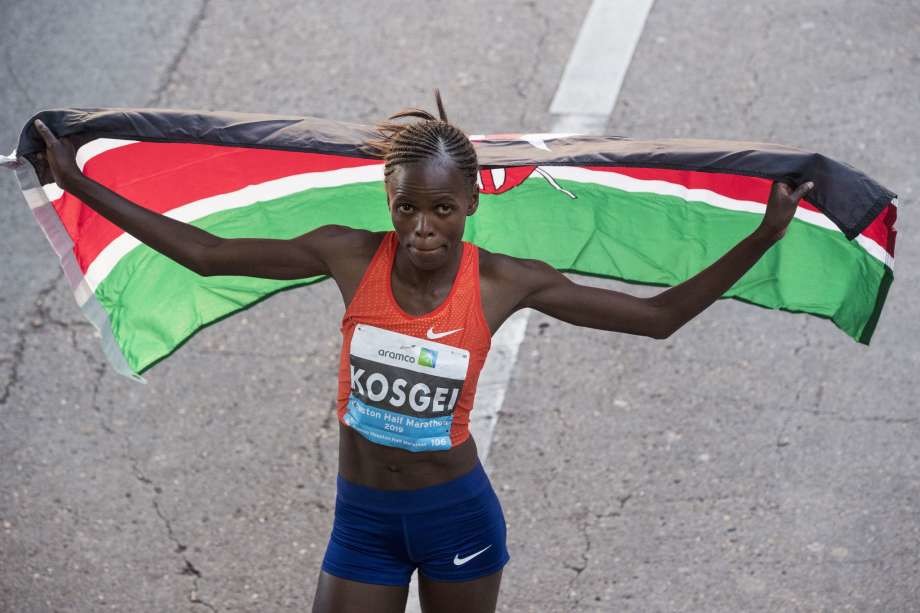
Elite runners were being tested daily for infections and kept in bio-secure bubbles, race organiser Procam International said, adding there would be 60 healthcare officials across the course for health emergencies on Sunday.
To tackle Delhi’s hazardous air, anti-smog machines would be installed along the 21-km route for the elite runners, and sprayed with treated water.
Hundreds of other enthusiasts were participating in the shorter races.
Doctors have slammed the holding of a marathon in Delhi, which is facing one of the worst spells of air pollution this year, complicating efforts for controlling the coronavirus outbreak.
On Thursday, the average concentration of deadly particulate matter PM2.5, which can potentially cause respiratory diseases including lung cancer, was seven times the prescribed safe limit of the World Health Organisation.
Each year Delhi suffers one of the worst air pollution levels globally partly due to local vehicle emissions, toxic waste and smoke from the thousands of small unregulated industrial units.
(11/26/2020) ⚡AMPby Neha Arora
Vedanta Delhi Half Marathon
The Airtel Delhi Half Marathon is a haven for runners, creating an experience, that our citizens had never envisaged. The streets of Delhi converted to a world-class running track. Clean, sanitized road for 21.09 kms, exhaustive medical support system on the route, timing chip for runners, qualified personnel to ensure smooth conduct of the event across departments. The race...
more...Amateur Runner, 23, Kaito Iwasa Hoping for Breakthrough at Fukuoka International Marathon
Local Hiratsuka resident Kaito Iwasa, 23, will run the 74th Fukuoka International Marathon on Dec 6. With the number of entrants limited to a select few due to the ongoing coronavirus crisis, Iwasa earned the right to stand on the starting line by meeting the strict qualifying standards. "Fast times will come later," he said. "Before anything else I just want to enjoy this one."
Iwasa graduated from Kasugano J.H.S. and Oiso H.S. He attended Chuo University. where he was part of the ekiden team. After graduating from Chuo this year he started working at a local company in April, training all the while for next spring's Tokyo Marathon. When Tokyo was postponed until next October due to the coronavirus crisis, he started looking for another race he could run and heard that Fukuoka would be happening.
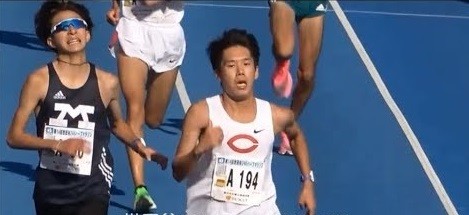
In March this year Iwasa ran the Lake Biwa Mainichi Marathon as the final race of his college career, recording a respectable 2:19:51. "Fukuoka is an elite race," he said. "To be honest I didn't think I had a chance." But in a field of 94 his Lake Biwa time earned him bib # 83. He hopes to break 2:15.
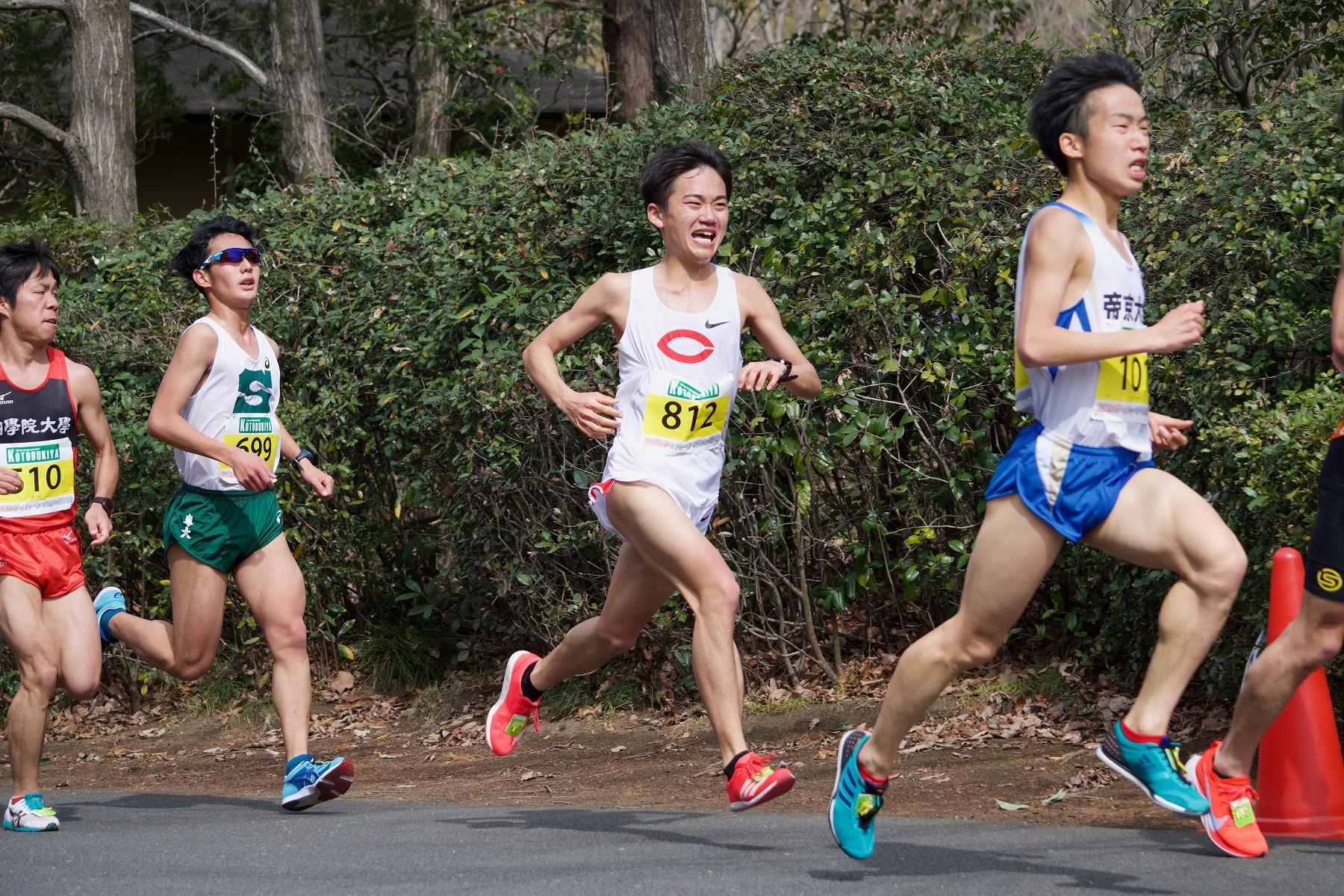
Still in his first year of full-time work, it's a challenge for him to balance his job and training. "My life can't be completely focused on running like it was in university," Iwasa says. "but I've been able to work it so far so that I can still train six days a week." He gets up at 5:00 a.m. to run, generally following Route 1 along the coast or in the Hiratsuka municipal park, before heading to work.
At Chuo Iwasa was selected as one of the entry members for the Hakone Ekiden but never made it to the starting lineup. That disappointment is what drives him now. "I want to stay involved with athletics and someday coach an athlete who will run the Hakone Ekiden's Fourth Stage through Hiratsuka," he says. "I want to show younger athletes that you can still have a career in athletics even if you're in the workplace."
(11/26/2020) ⚡AMPby Brett Larner
Fukuoka Marathon
The Fukuoka International Open Marathon Championship is one of the longest running races in Japan, it is alsoan international men’s marathon race established in 1947. The course record is held by Tsegaye Kebede of Ethiopia, running 2:05:18 in 2009. Frank Shorter won first straight years from 1971 to 1974. Derek Clayton set the World Record here in 1967 running 2:09:37. ...
more...2021 Los Angeles Marathon has been rescheduled for May 23 due to coronavirus
The 2021 Los Angeles Marathon has been rescheduled for May 23 and the LA Big 5K to May 22 because of the coronavirus pandemic, pending final approval of all city partners, applicable health departments and other governmental agencies, organizers announced.
The 36th edition of the marathon had been scheduled to run March 21 and the LA Big 5K for March 20. LA Big 5K is customarily run on the eve of the marathon.
The McCourt Foundation also announced Tuesday format changes to two other races it operates. The 2021 Rose Bowl 5K will be run Jan. 16-17, and the Rose Bowl Half-Marathon on March 27-28. The 2021 Rose Bowl 5K and Half Marathon had both been scheduled for Jan. 17.
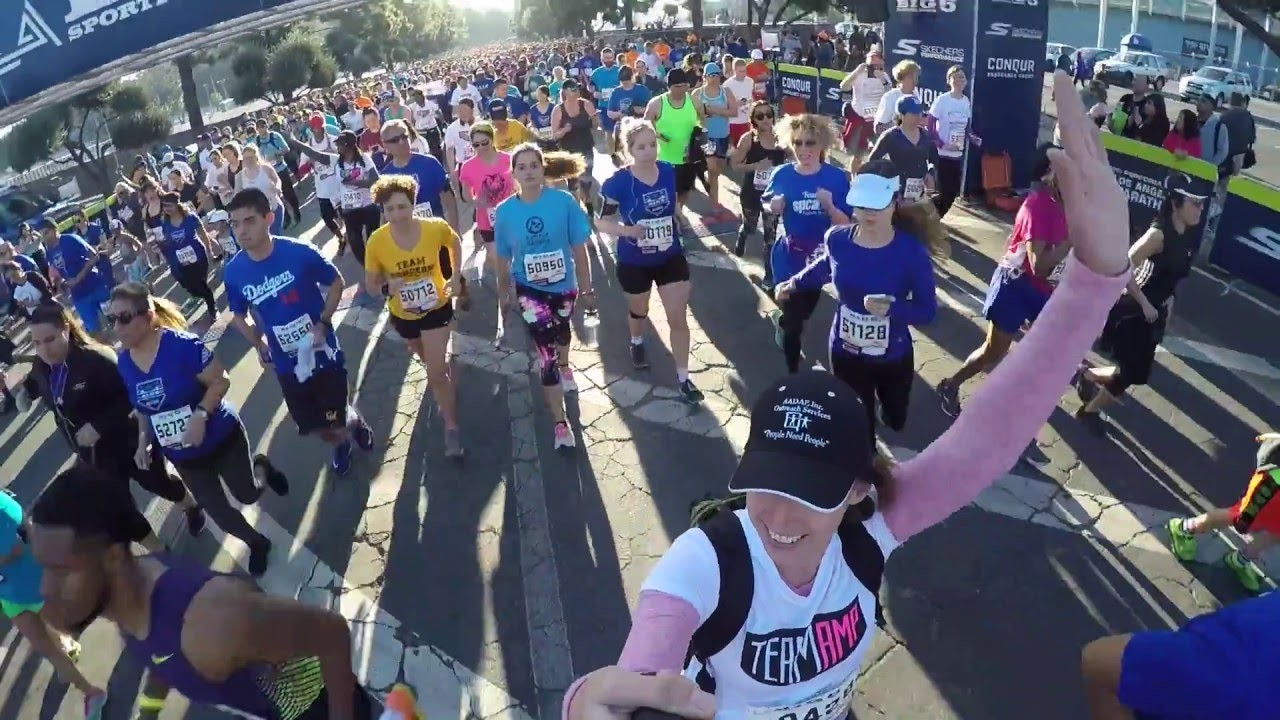
Both events are being planned for two days on separate weekends in January and March to ensure proper runner and walker distancing, as well as a safer, more manageable event flow, according to the foundation operated by the family of former Los Angeles Dodgers owner Frank McCourt.
The rescheduling was made “after careful consideration and following guidance provided by the Medical and Operations Advisory Group,” the foundation said.
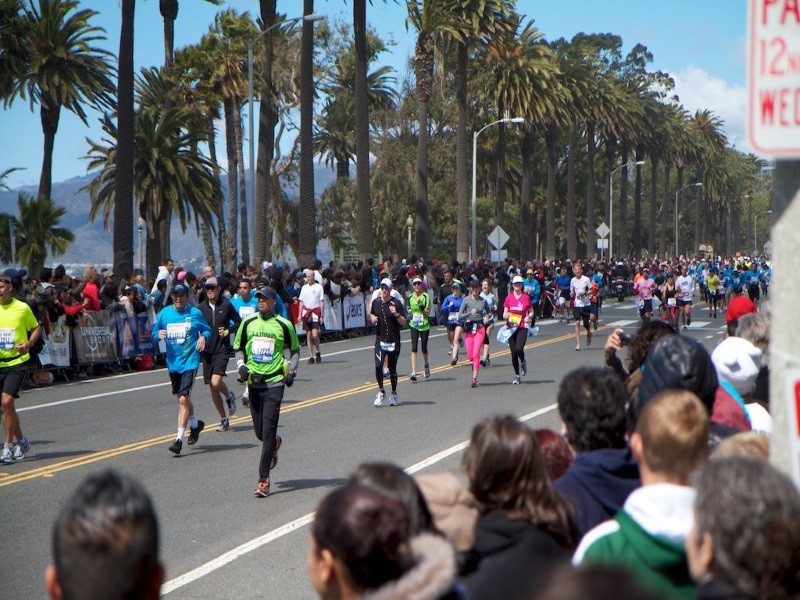
March and May event dates will continue to be evaluated to meet the highest possible health and safety of participants, volunteers and partners, according to the foundation. These considerations will include:
Significantly limiting field sizes;
COVID-19 vaccinations and rapid-testing for participants;
Mask use; and Hygiene practices and procedures.
The McCourt Foundation announced in July a major course change to the Los Angeles Marathon, replacing the “Stadium to the Sea” course used since 2010 to a “Stadium to the Stars” course, from Dodger Stadium to Brentwood, where runners will double back on San Vicente, Sepulveda and Santa Monica boulevards, ending at Avenue of the Stars in Century City.
The change was made because “the dramatically increased costs quoted by the city of Santa Monica for the 2021 running of the marathon and future events made remaining in Santa Monica financially infeasible,” the foundation said.
“The finish on Avenue of the Stars also allows exciting modifications not previously possible in Santa Monica,” the foundation added, “such as enhanced spectator viewing and celebrations at the finish line.”
The “Stadium to the Sea” course began at Dodger Stadium and ended near the Santa Monica Pier.
The Los Angeles Marathon has been held in March since its inaugural edition in 1986 except for 2009 and 2016.
(11/26/2020) ⚡AMPby Steven Herbert
Los Angeles Marathon
The LA Marathon is an annual running event held each spring in Los Angeles, Calif. The 26.219 mile (42.195 km) footrace, inspired by the success of the 1984 Summer Olympic Games, has been contested every year since 1986. While there are no qualifying standards to participate in the Skechers Performnce LA Marathon, runners wishing to receive an official time must...
more...Chicago Marathon hopeful about 2021 mass participation race
Organizers are forging ahead with planning their 2021 and runners will be accepted through a tiered entry system.
As 2020 draws to a close, the pandemic has yet to be resolved. Unfortunately, few World Majors ran in 2020, and the two that did (Tokyo and London) both had extremely small fields. However, the Chicago Marathon is optimistic about the possibility of running a mass participation race next fall. Organizers announced recently that they’re moving forward with planning the October 10, 2021, race.
The Chicago fields are set to be selected through a tiered application system, which is now open to a limited number of people and will open to the public in January. According to Inside the Games, a limited application window will also open to runners who deferred their 2020 entries. The 5K is set to take place the day before, on October 9. Organizers told ITG, “We are moving forward with hope and optimism. The health and safety of participants, volunteers, spectators and the Chicago community remain at the forefront of our planning, and we are doing everything we can to safely bring the Chicago Marathon back to our city streets.”
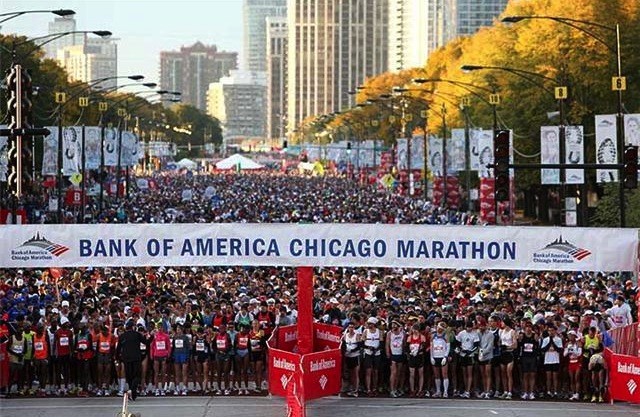
No spring world majors for 2021
With the spring remaining uncertain, Boston has pushed their race to the fall, along with London. Both races historically ran in April, with Berlin, Chicago and New York taking the fall spots. Tokyo typically runs in March, but is now also scheduled for October. With all of the majors slotting themselves into a six-week period, the quality of the fields will certainly be diluted, but the return of mass participation races will be a welcome change.
(11/25/2020) ⚡AMPby Running Magazine
Bank of America Chicago
Running the Bank of America Chicago Marathon is the pinnacle of achievement for elite athletes and everyday runners alike. On race day, runners from all 50 states and more than 100 countries will set out to accomplish a personal dream by reaching the finish line in Grant Park. The Bank of America Chicago Marathon is known for its flat and...
more...Indian Steeplechase runner Avinash Sable wants to challenge the best at Delhi half-marathon
India’s 3,000-meter steeplechase record holder and Olympic hopeful Avinash Sable, starved of track races ahead of the Tokyo Games due to the pandemic, will run the weekend’s Airtel Delhi half marathon to keep his competitive juices flowing.
“My goal is to stay with the leading pack of elite runners and give a good timing,” Sable said from his base in Bengaluru on Tuesday.
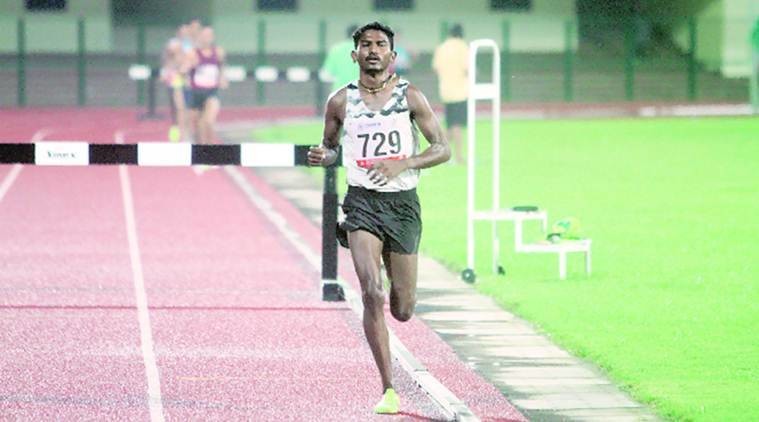
His coach Amrish Kumar said the target was to clock 60 minutes for the 21.0975 km race. “He has been doing really well in training. In the lockdown period too he has been training consistently. He can go all out,” Kumar said.
If Sable achieves his ambitious target, he will better the national best—1:03:46 by Kalidas Nirave. The Indian best in the Airtel race is 1:03:54. Sable has not run under 64 minutes.
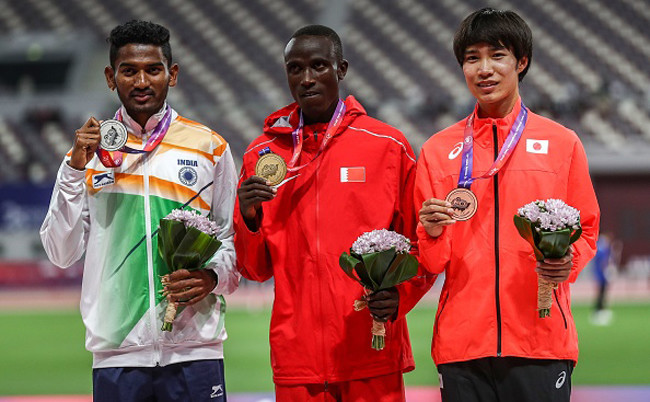
Sable often used to run road races in winter months when there are no track races, but has never attempted to race with the elite group led by Kenyans and Ethiopians due to the scorching pace they set. The elite winner usually runs under 60 minutes.
The surge in coronavirus cases across the globe has disrupted the athletics calendar as well. Sable said Sunday’s race will be a good platform to test his nerves. “I’m hungry to run hard and fast,” he added.
“The season has been frustrating. There was no competition because of the pandemic. I have done good endurance training. So I thought this will be a good platform to test myself against international athletes at home.
“I don’t run in marathons now—the last was in 2017. Both steeplechase and half marathons are tests of endurance. I was doing high-altitude training in Ooty in July and shifted to Bengaluru in August under Amrish sir,” Sable said.
Last year, the Maharashtra runner’s heroic efforts at the Doha world championships earned him a ticket to the Olympics. He lowered the national record twice in steeplechase, clocking a best of 8min, 21.37 secs (Olympics qualification mark: 8 min, 22 secs) in the final, finishing 13th out of 16 competitors.
“In steeplechase, I have worked on my speed, strength and hurdle technique. I know we will not get many competitions before Olympics. I have to work harder to improve,” said Sable.
(11/25/2020) ⚡AMPby Navneet Singh and Avishek Roy
Vedanta Delhi Half Marathon
The Airtel Delhi Half Marathon is a haven for runners, creating an experience, that our citizens had never envisaged. The streets of Delhi converted to a world-class running track. Clean, sanitized road for 21.09 kms, exhaustive medical support system on the route, timing chip for runners, qualified personnel to ensure smooth conduct of the event across departments. The race...
more...Diamond League unveils 14-meet schedule for 2021 track and field season
The Diamond League on Tuesday released its provisional calendar for the 2021 season, which will consist of 14 athletics meetings beginning in Rabat in May and ending in Zurich in September.
Doha will stage a meeting on May 28 after which Rome will host the first European event of the season on June 4, with Oslo hosting a week later. Meetings in Stockholm, Monaco and London are scheduled for the first two weeks of July.
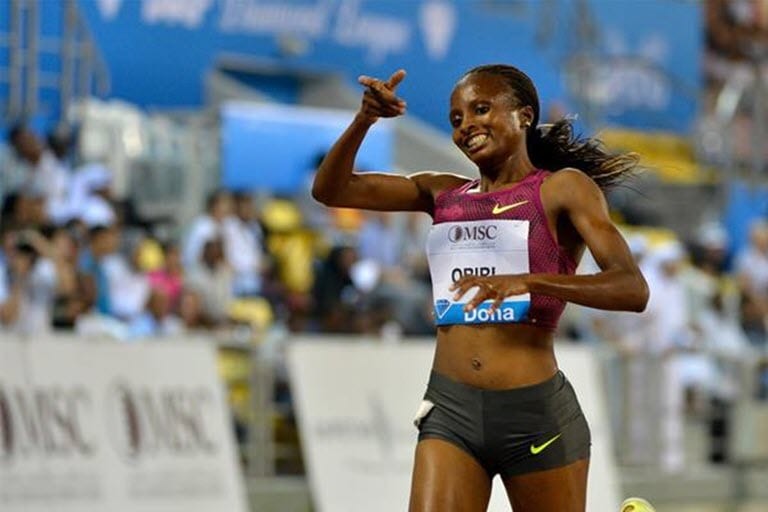
"The calendar is strictly provisional at this stage and remains subject to changes depending on the global health situation in 2021," organizers said in a statement.
After a one-month break for the rearranged Tokyo Olympics, action will resume in Shanghai on Aug. 14.
Eugene will host its first Diamond League meeting on Aug. 21, with China to hold its second event of the season the following day.
The final leg will take place in Europe with meetings in Lausanne, Paris and Brussels before the season finale in Zurich from Sept. 8-9.
The calendar remains provisional and is subject to changes depending on the global health situation, the Diamond League said.
The 2020 calendar was hit hard by the COVID-19 pandemic, with several events cancelled and others rescheduled.
2021 Diamond League calendar
Rabat — May 23
Doha — May 28
Rome — June 4
Oslo — June 10
Stockholm — July 4
Monaco — July 9
London — July 13
Shanghai — Aug. 14
Eugene — Aug. 21
China — Aug. 22
Lausanne — Aug. 26
Paris — Aug. 28
Brussels — Sept. 3
Zurich — Sept. 8-9
(11/25/2020) ⚡AMPby World Athletics
Keira D’Amato destroys American women’s-only 10 mile record
Keira D’Amato‘s magical year of running continued this morning when she smashed the American record for 10 miles in an all-women’s competition at the specially-arranged Up Dawg Ten Miler in Washington, D.C. Running on a multi-loop, certified course in Anacostia Park and against a backdrop of still-vibrant fall foliage, D’Amato soloed to a 51:23 finish time, smashing Janet Bawcom‘s record of 52:12 set at the Credit Union Cherry Blossom 10-Mile in April, 2014.
“I didn’t really have anything prepared to say,” said a tearful D’Amato to the small crowd of officials, volunteers, family members and media gathered at the race finish line. She continued: “Thank you to all the volunteers and everyone for coming out and helping. I actually really don’t know what else to say.”

D’Amato, 36, attacked the record from the start. She needed to average 5:13 per mile, and hit the first mile in 5:10. She had already separated herself from the four other women who were competing, including 2020 USA Olympic Trials Marathon runner-up Molly Seidel. She held a level pace through 4 miles (20:40), but picked it up with a 5:05 fifth mile.
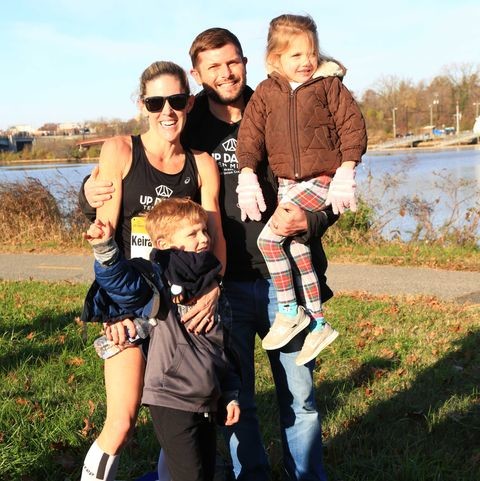
Although the weather was clear and windless for the 8:00 a.m. start, temperatures were cold (the limited group of officials and spectators wore winter clothes). Nonetheless, D’Amato threw off her headband in the fifth mile, and her arm warmers in the seventh reflecting how hard she was working. She clocked 5:03 for mile six and 5:07 for mile seven, building a good cushion on the record.
About 48 minutes into the race, D’Amato got a stitch on her right side. She could be seen on the broadcast rubbing her ribs next to her bib number, and raising her right arm to lift her rib cage, a common technique to relieve stitch pain. Although her final mile was her slowest (about 5:23), the record was never in doubt.
While D’Amato’s mark fell short of the absolute (mixed-gender) American record of 50:52 set by Molly Huddle en route at the 2018 Aramco Houston Half-Marathon, it was remarkably close given the fact that she did not have the benefit of any runners near her to help with the pace or to create a draft. She ran the entire course today with only the lead cyclists for company.
Today’s record was only one of several great performances by D’Amato this pandemic year, a full-time realtor from Midlothian, Virginia, who does not have a kit sponsor. Before the pandemic in January and February she ran personal bests for the half-marathon and the marathon of 1:10:01 and 2:34:24, respectively, but really began to shine over the summer. She clocked 32:33.44 for 10,000m on the track in July, blasted a 1:08:57 solo half-marathon in October, and a lonely 15:08 road 5-K (course not certified) earlier this month. She used all of these performances, she said, to tune-up for today’s race which she helped fund out of her own pocket.
(11/25/2020) ⚡AMPby David Monti
Iva Barr, Oldest London Marathon competitor has passed away at 93-years-old
IVA BARR, who became the oldest London Marathon competitor when she finished the 2016 race at age 88, has sadly passed away at 93-years-old.
Barr, from Bedford, first entered the London Marathon back in 1981 and completed 20 in total after confirming that the 2016 race was to be her last.
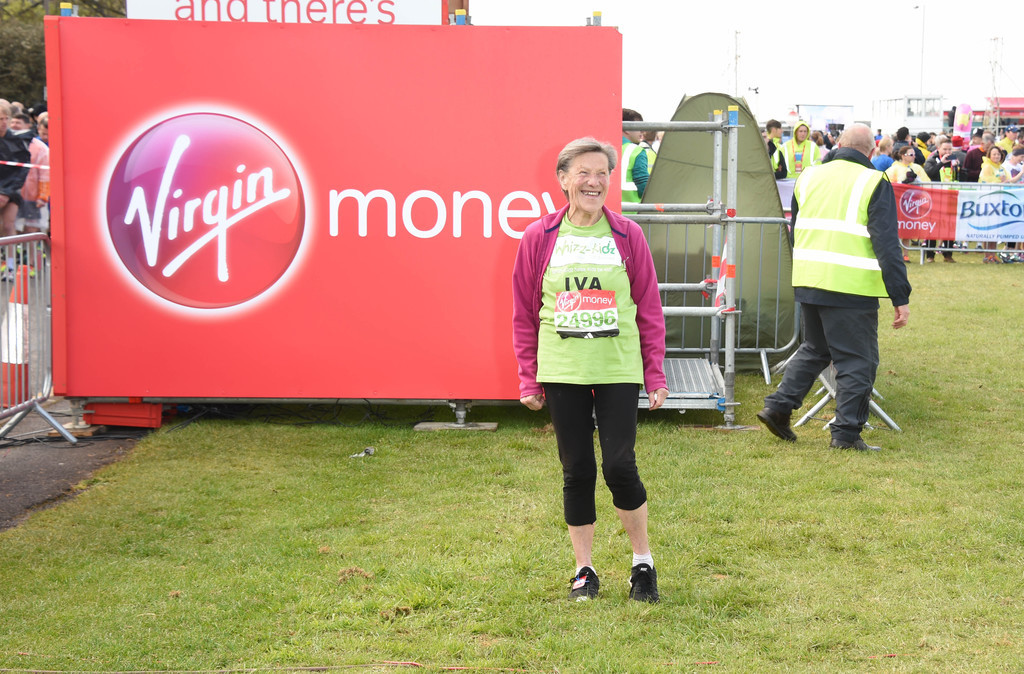

She tackled the first 14 miles of that year’s race before taking the Underground to Westminster and walking the final part to the finish at The Mall.
At the time the marathon enthusiast, who ran as a member of the Bedford Harriers Athletics Club and participated in marathons for “30-odd years”, said she would “never forget” her final attempt, despite not quite completing the route.
(11/25/2020) ⚡AMPby Matthew Roscoe
Ababel Yeshaneh, Brigid Kosgei, Kibiwott Kandie and Jacob Kiplimo will renew rivalry at Ras Al Khaimah Half Marathon
The fastest half-marathon in the world has attracted the best half-marathon runners on the planet again.
The 15th edition of the Ras Al Khaimah Half Marathon on February 19 will see reigning champions Kibiwott Kandie and Ababel Yeshaneh defending their titles while world half-marathon champion Jacob Kiplimo and world marathon record-holder Brigid Kosgei will try to wrestle their titles off them.
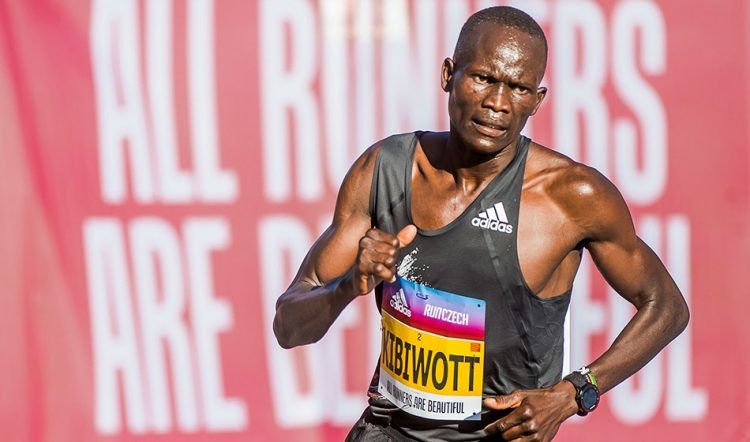
The event, which is often known simply as ‘the RAK Half’ and which takes place on a super-fast course in the northernmost emirate of the United Arab Emirates in three months’ time, will see mouth-watering clashes in separate men’s and women’s races. More entries are expected to be announced in coming weeks but so far they include:
» Kibiwott Kandie – fastest man in the world over 13.1 miles in 2020 with 58:38 from Prague in September and winner in Ras Al Khamah in February with 58:58. The Kenyan (below) was also runner-up in the World Half Marathon Championships in 58:54, making him the first man to run sub-59min three times in one year.
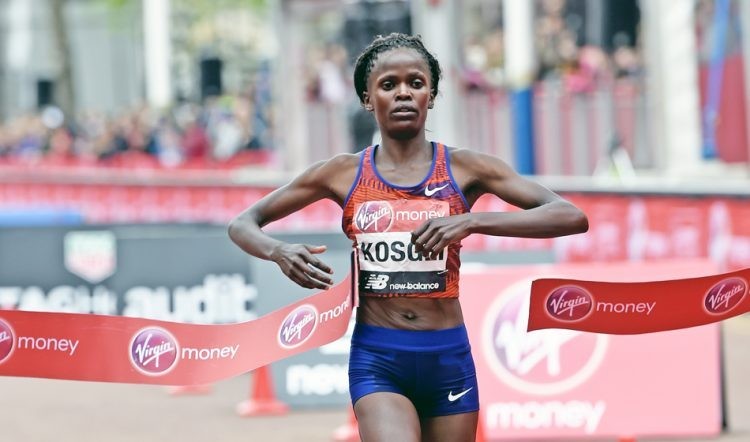
» Jacob Kiplimo – the Ugandan took the world-marathon title ahead of Kandie in Gdynia last month following a track season that saw him run 7:26.64 for 3000m and 12:48.63 for 5000m. Only 20, he also took world cross-country champs silver behind Joshua Cheptegei in Aarhus last year.
» Ababel Yeshaneh – set a women’s world half-marathon record of 64:31 to win the Ras Al Khaimah race in February. At the World Half in Gdynia she was fifth but the Ethiopian fell in the closing stages. Over the marathon she was runner-up to Kosgei in Chicago last year with 2:20:51.
» Brigid Kosgei – world record-holder for the marathon with 2:14:04 from Chicago in 2019 and winner of the last two London Marathons, whereas over 13.1 miles the Kenyan (below) was 18 seconds behind Yeshaneh in Ras Al Khaimah this year in the second-fastest time in history.
The race is often dominated by east African distance runners but Sara Hall of the United States is one of the early entries, too, and will be sure to attract interest from US fans after her battling runner-up performance at the London Marathon in October.
“This is the fastest half-marathon course in the world and we want it to maintain its fame,” says Ras Al Khaimah Half race director Andrea Trabuio.
With the coronavirus pandemic causing problems around the world, Trabuio says the elite races and non-elite events will be run separately on February 19 in order to maintain social distancing. With the non-elite event there will be seven waves with about 400 runners in each wave with temperature checks at the start and masks being worn for the first few hundred meters.
(11/25/2020) ⚡AMPby Jason Henderson
Rak Half Marathon
The Rak Al Khaimah Half Marathon is the 'world's fastest half marathon' because if you take the top 10 fastest times recorded in RAK for men (and the same for women) and find the average (for each) and then do the same with the top ten fastest recorded times across all races (you can reference the IAAF for this), the...
more...Kuala Lumpur Marathon 2020 goes virtual
THE Kuala Lumpur Standard Chartered Marathon (KLSCM) announced the introduction of its inaugural Virtual Run, which will take place from Dec 5 to 13 and offers free registration.
Organised by Dirigo Events and with Standard Chartered Bank Malaysia as title sponsor, the KLSCM 2020 Virtual Run will offer the full marathon, half marathon, 10km and 5km distance categories.

“We wanted to create something for our runners that would motivate and re-energize everyone about running again because without events to train for, enthusiasm levels often drop easily, ” said Dirigo Events director Rainer Biemans.
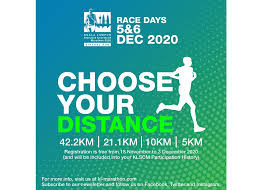
“And with the pandemic continuing to spread, it is now more important than ever for all of us to maintain our health at optimum levels and keep our immune systems strong.
“We also understand that a lot of people are struggling financially at the moment, so we decided to make registrations free of charge to encourage as many people as possible to take part, ” added Biemans.
Standard Chartered Bank Malaysia is eager to play its part in encouraging Malaysians to maintain a healthy lifestyle in these trying times.
“In response to our runners’ enthusiasm to stay fit virtually and remotely, we are delighted to elevate their running experience with the new and interactive KLSCM virtual run, ” said the bank’s managing director and chief executive officer Abrar A. Anwar.
“We hope that the continued commitment of our KLSCM sponsorship will provide tangible ways for runners to keep active and engaged during such testing times, ” he added.
KLSCM Virtual Run is designed to provide a proper challenge to participants who are required to complete their entered distance in a single attempt.
Runners will receive an e-bib once successfully registered and an e-certificate upon completion.
A dedicated digital application – the KLSCM 2020 VR app – has been developed that can be downloaded for free and will enable participants to track their run, submit their results, share their activity feed.
The application comes packed with a host of other engaging features such as category leaderboards and even an Augmented Reality selfie filter.
There will also be no limits or quotas to the participation numbers for any distance or category.
Participation will only be limited by age (12 years old and above for 5km, 15 years old and above for 10km and 18 years old and above for half and full marathons).
In addition, there will be no specific cut-off times for each distance.
Participants can complete their run anywhere outdoors, at a location of their choice, any time between 12.01am on Dec 5 and 11.59pm on Dec 13,2020 (GMT+8).
Each successful registration is entered into the runner’s KLSCM participation history.
(11/24/2020) ⚡AMPKuala Lumpur Marathon
Standard Chartered Bank has been the title sponsor of the KL marathon since its inception in 2009 and we are honoured that our partnership will continue and as always, our aim is to make the Marathon bigger and better", said Rainer Biemans, Director of Dirigo Events and Project Director of the Standard Chartered KL Marathon 2018. The Standard Chartered KL...
more...Finalists for Female Athlete of the Year 2020
With just 11 days to go until the World Athletics Awards 2020, the names of the five finalists for the Female World Athlete of the Year 2020 have been confirmed.
In spite of the many challenges presented by the global Covid-19 pandemic this year, the five athletes, who represent five countries and four area associations, have excelled, producing brilliant performances across a range of athletics disciplines in 2020.
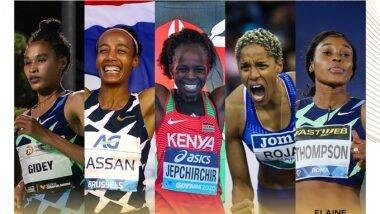
The finalists are (in alphabetical order):
Letesenbet Gidey, Ethiopia- set a world record of 14:06.62 over 5000m- was second in the 5000m at the Wanda Diamond League meeting in Monaco
Sifan Hassan, Netherlands- set a world record of 18,930m in the one hour run- set a European record of 29:36.67 over 10,000m, the fourth fastest performance in history
Peres Jepchirchir, Kenya- won the world half marathon title- twice broke the world half marathon record for a women-only race (1:05:34 and 1:05:16)
Yulimar Rojas, Venezuela- undefeated in four triple jump competitions indoors and outdoors- broke the world indoor triple jump record with 15.43m
Elaine Thompson-Herah, Jamaica- undefeated in seven 100m races- ran world-leading 10.85 over 100m
The male and female World Athletes of the Year will be announced live at the World Athletics Awards 2020 to be staged as a virtual event on Saturday 5 December and streamed live on the World Athletics YouTube channel, its Facebook page and via Twitter.
(11/24/2020) ⚡AMPby World Athletics
Ethiopia’s Andamlak Belihu eyeing course record at 2020 Airtel Delhi Half Marathon
This year has been tough for all of us, especially athletes since we have not been able to train at our optimum level due to the circumstances.
However, it's always exciting to come back to the Airtel Delhi Half Marathon and I have trained to the fullest in the last one month for the race.
The World Half Marathon Championships in October was really difficult for me. With the training areas closed for a considerable amount of time, it was hard for me to get the desired result.
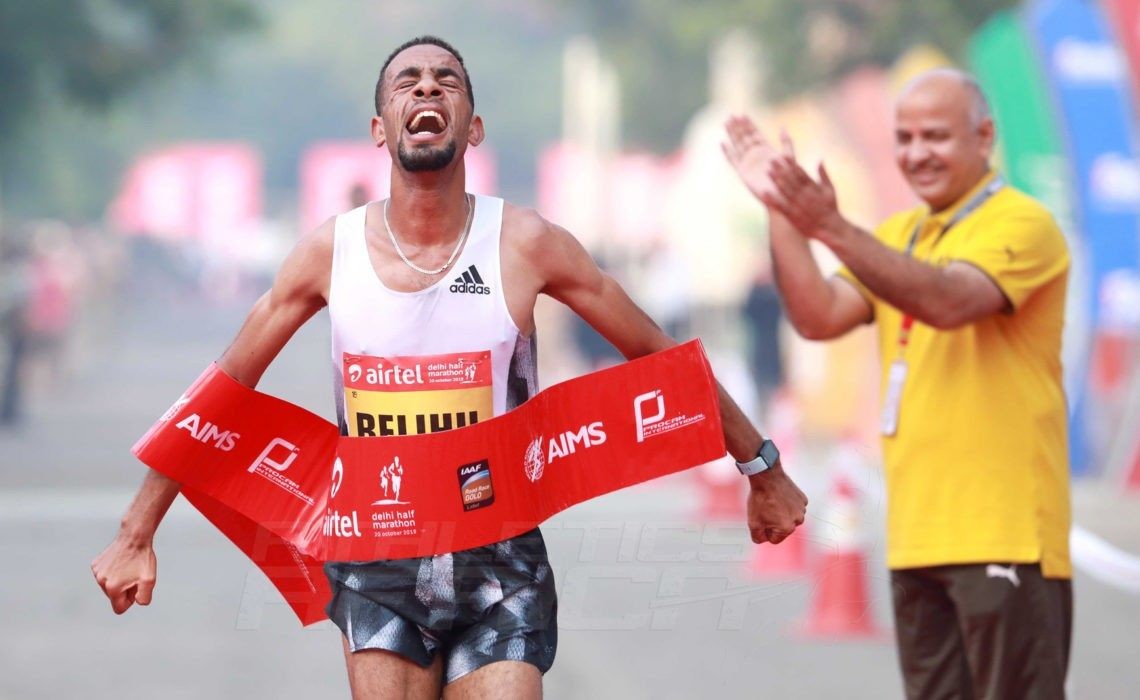
But my fitness levels are really good and I am feeling confident. The feeling about myself is brilliant at the moment and I am coming not just to win, but to aim for the course record timing as well.
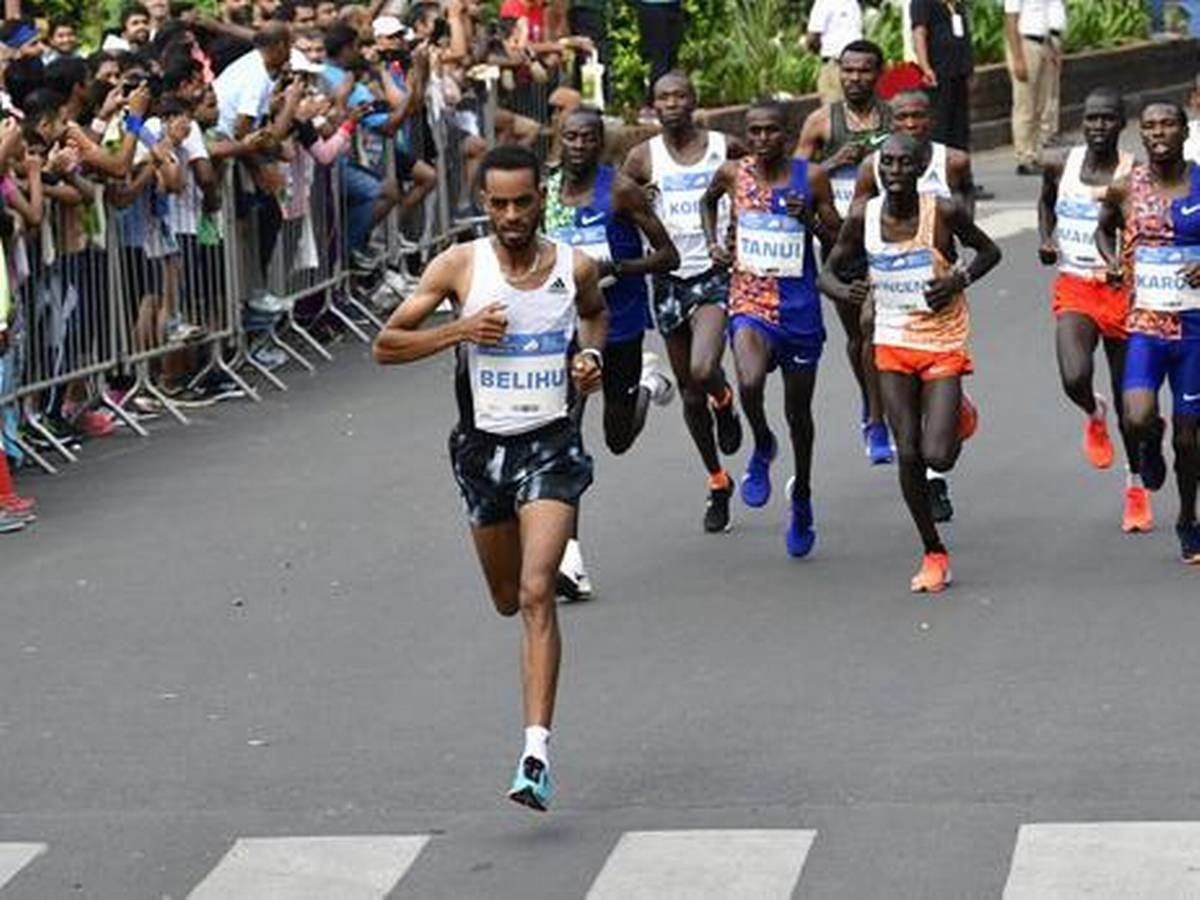
The Airtel Delhi Half Marathon is the most prestigious half marathon for a reason. The course is exquisite and India is a beautiful country with a rich culture much like Ethiopia.
I am really looking forward to a cracking race and I am very confident about improving my timing this year.
All the athletes in the race are going to bring out their A-game and that's what will make the contest all the more exciting.
It's going to be a bit different this time though, as the people of Delhi will not be able to cheer us on. However, safety ensured for everyone involved in the event is important.
Extremely grateful to know all teams involved have worked hard to detail out various Covid-secure protocols and better running conditions have been given topmost priority.
(11/24/2020) ⚡AMPby Andamlak Belihu
Vedanta Delhi Half Marathon
The Airtel Delhi Half Marathon is a haven for runners, creating an experience, that our citizens had never envisaged. The streets of Delhi converted to a world-class running track. Clean, sanitized road for 21.09 kms, exhaustive medical support system on the route, timing chip for runners, qualified personnel to ensure smooth conduct of the event across departments. The race...
more...World 1,500m champion Timothy Cheruiyot has missed out on the World Athletics Male Athlete of the Year Award
Cheruiyot was Kenya's sole flagbearer for the coveted award. World Athletics has released the final five nominees for the award with the winner expected to be announced virtually on December 5.
Uganda's world record holder in the 5,000m and 10,000m Joshua Cheptegei is the favorite for the gong. He broke world records at 5,000m (12:35.36), 10,000m (26:11.00) and 5km on the roads (12:51) and was fourth at the World Athletics Half Marathon Championships on his debut over the distance.
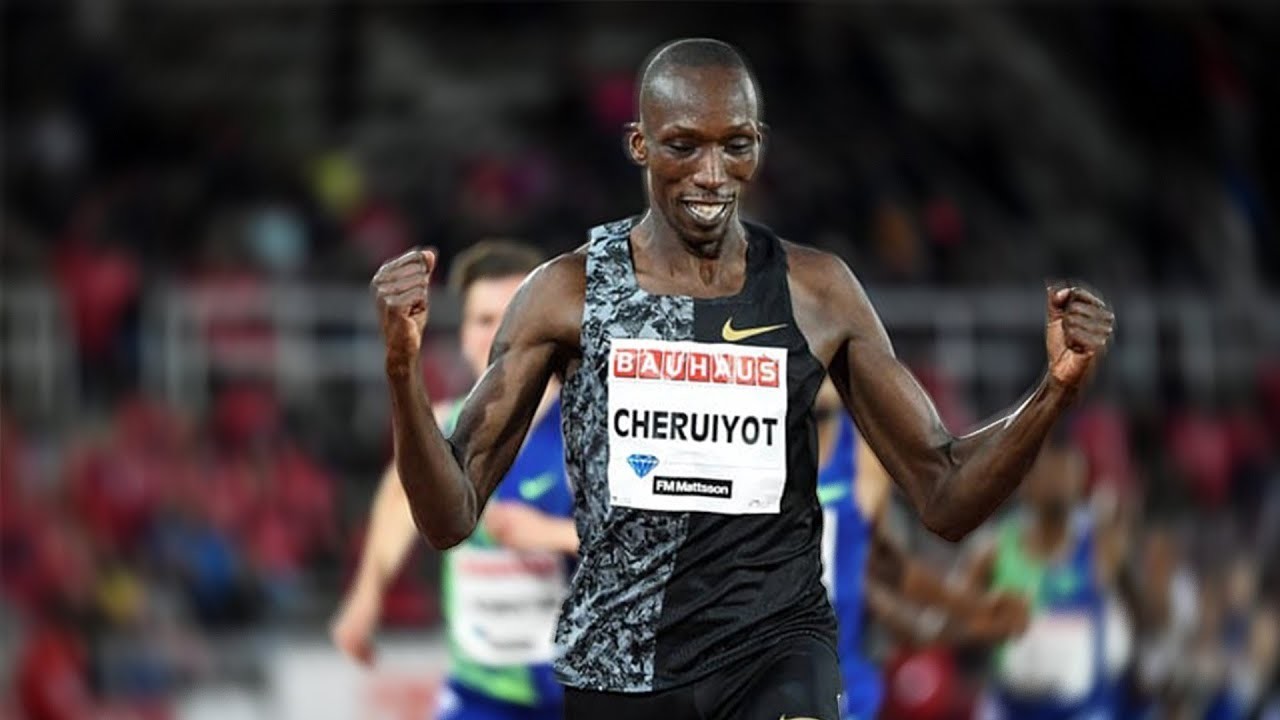
Two-time 400m hurdles world champion Karsten Warholm of Norway makes the cut for the award after a stellar season on the track.
He ran a world-leading 46.87 in the 400m hurdles, the second-fastest performance in history, and was undefeated in nine 400m/400m hurdles races and set a world best of 33.78 in 300m hurdles
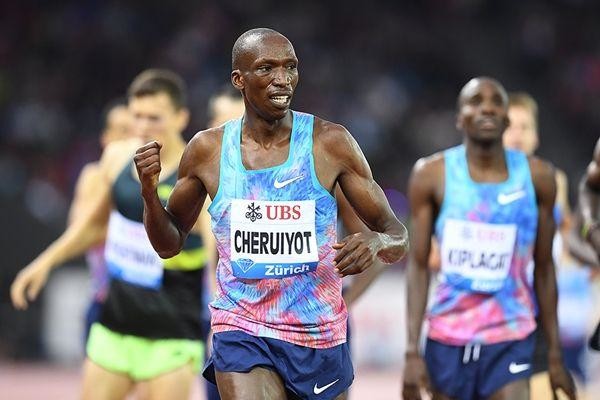
Former world javelin champion Johannes Vetter, of Germany, is in the mix after winning eight of his nine javelin competitions and throwing world-leading 97.76m, the second farthest throw in history
World Pole vault record holder Mondo Duplantis of Sweden makes the shortlist. He broke the world record in the pole vault twice (6.17m and 6.18m) and produced the highest outdoor vault of all time (6.15m) and was undefeated in 16 competitions.
USA'S Ryan Crouser will be e hoping to break the trend and win the award. He was undefeated in 10 shot put competitions and his 22.91m world-leading performance moved him to equal third on the world all-time list
A three-way voting process determined the finalists. The World Athletics Council and the World Athletics Family cast their votes by email, while fans voted online via our social media platforms.
The Council’s vote counted for 50 per cent of the result, while the Athletics Family’s votes and the public votes each counted for 25 per cent of the final result.
(11/24/2020) ⚡AMPby World Athletics
Sebastian Coe has urged the Government to act now and get children back playing sport
If schools can open then why can't clubs? Sport can save our children and Prime Minister Boris Johnson must act now!
The Covid-19 pandemic is a watershed moment in our times. The pandemic has not only upended the way we live our daily lives but it has also become a catalyst that has led us to prioritise health and safety above all else.
In the process, unprecedented measures have been implemented and England is now in the throes of another nationwide lockdown, with families again forced to keep their distance, households prevented from mixing, and people unable to work.

While the restrictions are intended to curb the spread of the virus, they are also producing dire and unintended consequences.
Perhaps we all assumed that everyone across the nation would face the same hardships during the lockdown. However, many didn’t fully appreciate that it would end up hitting hard some of our poorest communities, particularly children living in poverty.
A study by UCL found that a fifth of schoolchildren had done little to no home learning over the summer term, perhaps because of a lack of access to the internet, laptops or computers at home.
What has now begun to emerge, is a mental health epidemic among our children, which we can’t afford to ignore. The NSPCC recently revealed that calls to ChildLine reached nearly 43,000 between March and October, with counsellors supporting children who were feeling isolated, anxious and insecure after being cut off from their networks of social support such as friends and teachers.
It is these sobering statistics that should spur us into action. We, and in particular the Government, have an opportunity to fix the problem before it becomes overwhelming. We must find ways to balance the restrictions with solutions that can help preserve the mental health and wellbeing of our youngest and most vulnerable.
Sport is an obvious solution. Ensuring children receive regular physical education, structured exercise and a means to run around and play during the lockdown can lead to unquestioned mental health benefits; improving self-confidence, nurturing positive relationships among peers, bolstering their mood, fostering social cohesion in communities and of course staying fit and healthy.
I’ve said it before. Sport is the hidden social worker in many of our neighbourhoods. Disadvantaged families often rely on support that sport gives them, whether it’s in the form of an after-school club, or a charity that caters for the young in the community.
Unfortunately, current Government restrictions have meant that many charities and community clubs have been restricted or prevented from providing that support to the people that need it most at a time when they need it the most.
(11/24/2020) ⚡AMPBernard Lagat Completes Interim Coaching Staff at Arizona Cross Country
Arizona cross country has completed its staff for the 2020-21 season as the program will be led by the trio of Dave Murray, Bernard Lagat and Doug Keen.
Lagat, one of the most decorated distance runners of all time, has been a volunteer assistant coach at Arizona for 15 years. The 11-time All-American and two-time medalist at the Olympic Games is considered an American distance running legend as he has competed in five Olympic Games and qualified for the 2020 Olympics earlier this year.
"I am honored to join Fred Harvey and be a part of the Arizona cross country and track & field program," Lagat said. "Having been a volunteer assistant coach for the last 15 years, I have gotten to know many of the great student-athletes that continue to proudly represent the University of Arizona.

I look forward to passing on the knowledge and experiences that I have gained as a student-athlete and professional. It is a privilege for me to follow in coach Li's footsteps and lead the next generation of Wildcats to success on and off the track."

Lagat won a silver medal in the 1500m at the 2004 Olympics and won a bronze medal in the 1500m at the 2000 Olympics while finishing in fourth in the 5K at the 2012 Olympics and fifth in the 5K at the 2016 Olympics. He has also won two gold medals, three silver medals and one bronze medal at the World Championships.
Off the track, Lagat has served as a chair member of the International Amateur Athletic Federation (IAAF) and the United States Track & Field Advisory Boards.
"Coach Dave Murray will be a great mentor to not only the student-athletes, but the coaches as well," said director of track and field & cross country Fred Harvey. "His knowledge of Arizona Track & Field and Cross Country is priceless. Bernard Lagat is one of the world's all-time great distance runners and will bring a level of comfort and confidence to our student-athletes since he has been in the program for over 15 years and understands their training methodology. Doug Keen brings a level of excitement as well as an understanding of building cross country teams.
His ability to structure four Arizona High School State Cross Country Championship teams will be instrumental as we prepare for an upcoming spring cross country and track & field season."
(11/23/2020) ⚡AMPby Arizona Athletics
British marathon trials for Tokyo 2020 to be held at Kew Gardens
The British Olympic marathon trials for Tokyo 2020 are scheduled to take place at Kew Gardens on March 26 next year.
British athletes usually fight for their spot on the GB team at the London Marathon, but after the 2021 event was postponed due to the coronavirus pandemic, British Athletics have decided to stage a new event.
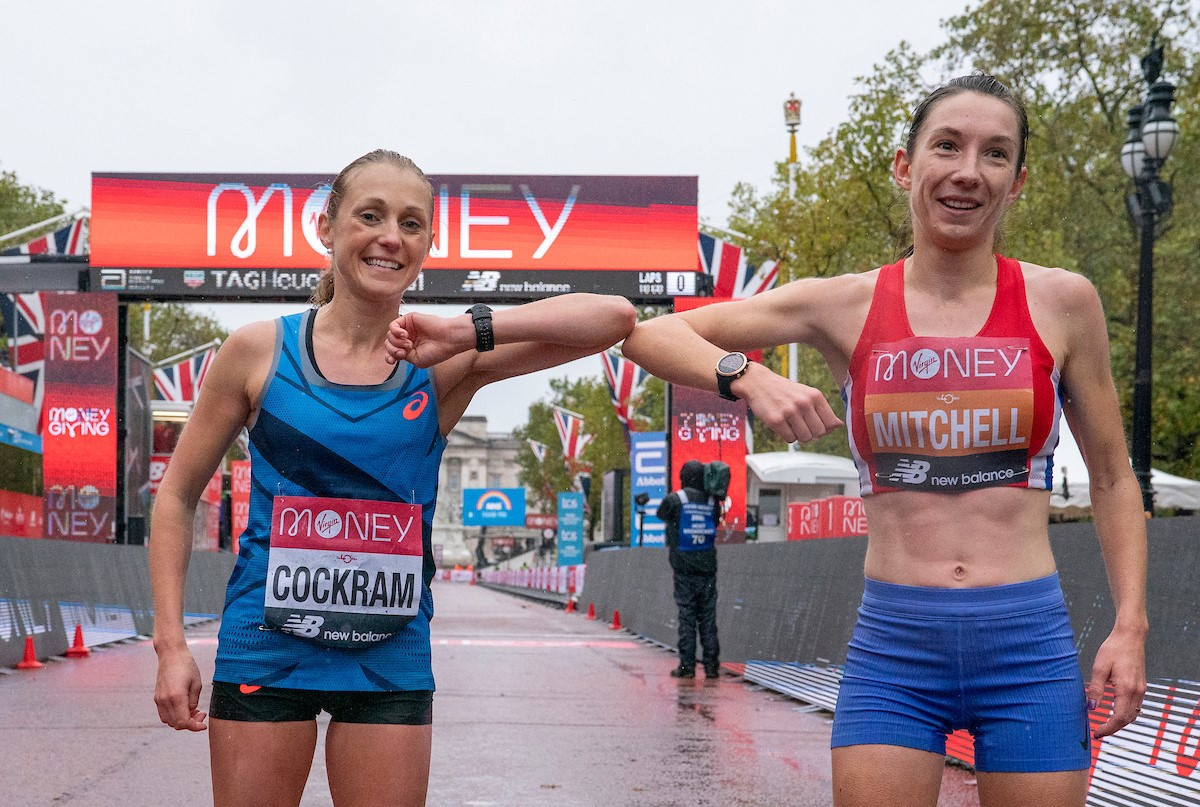
The Olympic qualifying marks are 2:29:30 for the women and 2:11:30 for the men.
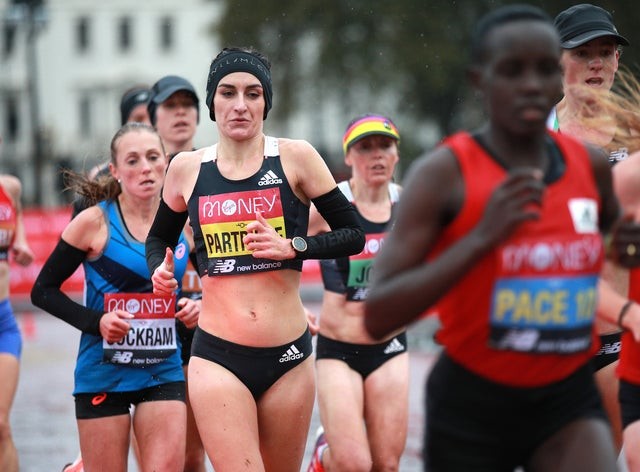
The new marathon trial event will also act as the British Marathon Championships for 2021.
Major events director of UK Athletics said: "We're delighted to confirm the British Championships incorporating the Olympic Marathon Trial race is to be held at Kew Gardens.
“It is an iconic venue and lends itself well to a marathon course over multiple laps.”
The Tokyo 2020 Olympic Games are due to take place on July 23-August 8.
(11/23/2020) ⚡AMP
by Alicia Turner
Tokyo 2020 Olympic Games
Fifty-six years after having organized the Olympic Games, the Japanese capital will be hosting a Summer edition for the second time, originally scheduled from July 24 to August 9, 2020, the games were postponed due to coronavirus outbreak, the postponed Tokyo Olympics will be held from July 23 to August 8 in 2021, according to the International Olympic Committee decision. ...
more...Strict Covid protocols will be included in 2020 Delhi half marathon
The Delhi Half Marathon is going ahead as per schedule on November 29 with a star-studded field of foreign athletes as well as a strong Indian line-up despite the rising number of coronavirus cases in the national capital. The organizers have planned a slew of safety measures to ensure safety for all.
Significantly, the 15 elite women and 18 men will be applying online for an exemption from quarantine before arriving in the country. That procedure can be initiated only post a negative RT-PCR test result obtained not earlier than 72 hours before traveling to India. All participants will also have to fill in and submit a health declaration form. All 33 were self isolating for 15 days prior to their flight as instructed by the race organizers.
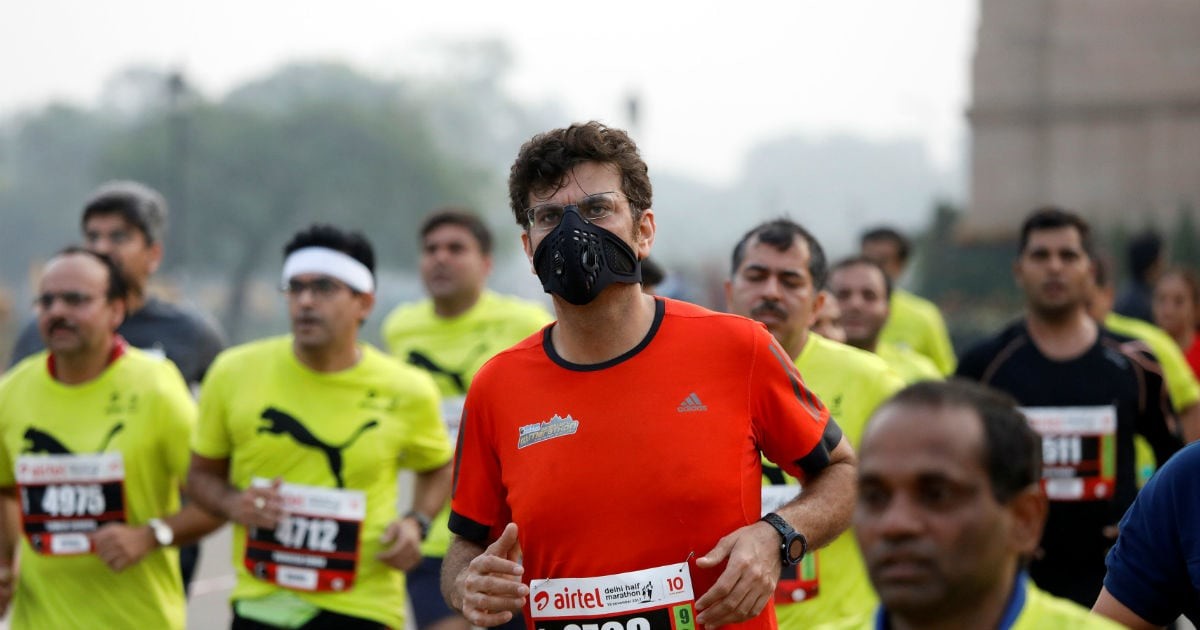
Once the athletes start arriving in Delhi on November 23, they will be stationed at an upscale hotel which will be a bio-secure zone. They will also be issued with a list of SOPs. These include restricted movement access and social distancing protocols. All the racers including Indians will be subject to two further RT-PCR tests prior to race day and only if they test negative will they be allowed to run.
Apart from the COVID-19 threat, Delhi is also reeling under poor air quality conditions. To tackle this, low power-pulsed Wifi waves will be used to clear air pollutants and ecologically safe reagents will be sprayed at strategic points.
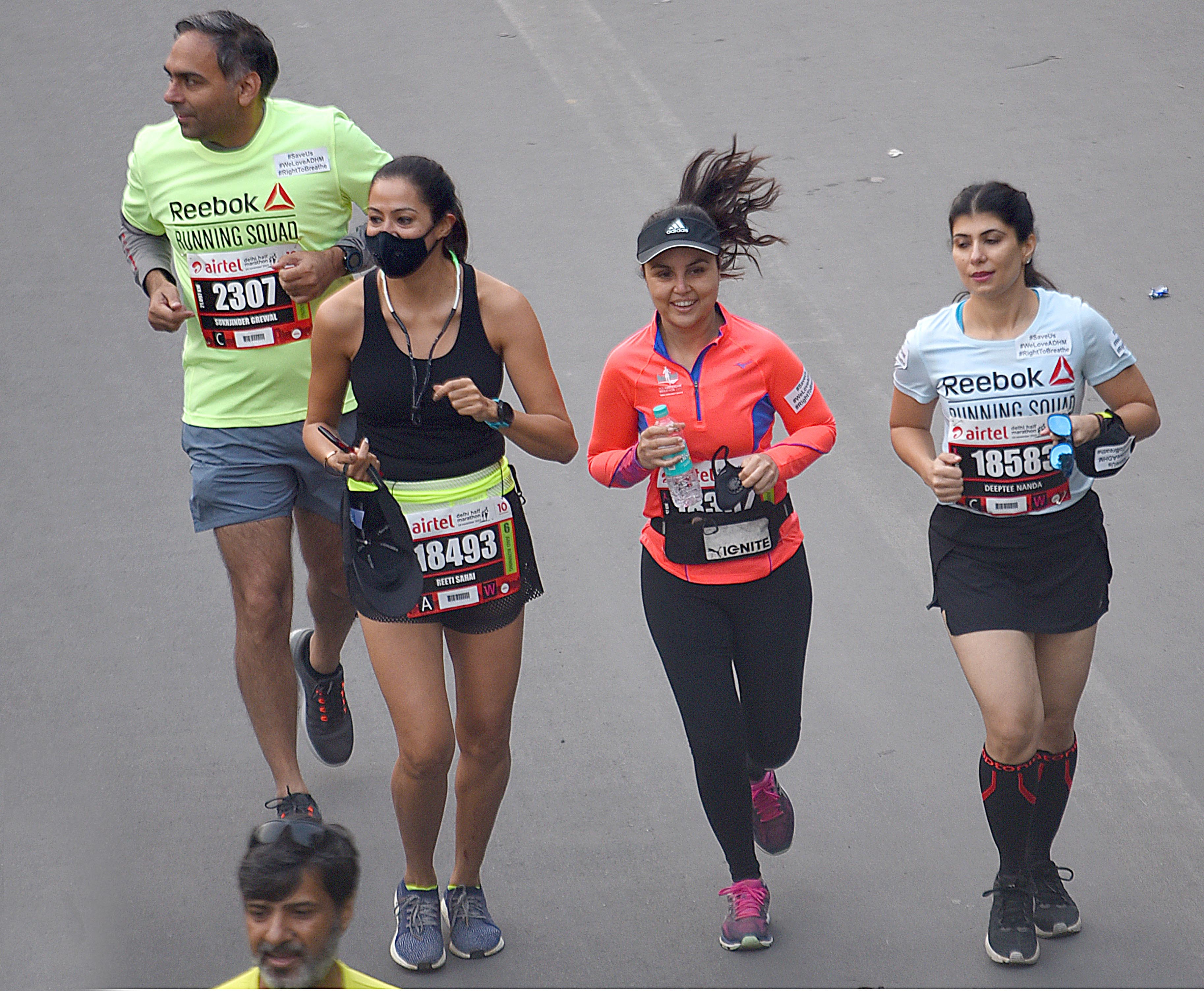
Star-studded fieldThe 16th edition of the World Athletics Gold Label Race will see one of the strongest line-ups in its history. Marathon world record holder Brigid Kosgei and Ababel Yeshaneh, World Half Marathon record holder will join the fray apart from defending champions Tsehay Gemechu and Andamlak Belihu.
Among Indians, Avinash Sable, Srinu Bugatha and Abhishek Pal will be in focus among the men while Parul Chaudhary, will lead the Indian women’s category along with Sanjivani Jadhav, Monika Athare and Chinta Yadav.
“It is a star-studded field and most athletes have not competed in a long time and it will be a great opportunity to test ourselves against the world’s elite athletes in our own backyard,” Avinash, who has already qualified for the Tokyo Olympics in 2021, opined.
Govt to launch fitness app in Jan: Sports secyNew Delhi: Sports secretary Ravi Mittal revealed on Saturday that the government is planning to launch the Fit India app next year which would help users evaluate and improve their fitness levels. “We are developing the Fit India app next year. We will be launching this app sometime in January. It will be like other health apps but the main thing will be that everyone will be able to evaluate their fitness,” Mittal said during Airtel Delhi Half Marathon press conference. The secretary also praised the race organizers and extended his best wishes. “Events like this will help us to understand that things are slowly getting normal. So these events will help in strengthening our mind. I would like to request Procam to organize more such marathons before the Olympics, so we can strengthen the mind.”
(11/23/2020) ⚡AMPby Ayantan Chowdhury
Vedanta Delhi Half Marathon
The Airtel Delhi Half Marathon is a haven for runners, creating an experience, that our citizens had never envisaged. The streets of Delhi converted to a world-class running track. Clean, sanitized road for 21.09 kms, exhaustive medical support system on the route, timing chip for runners, qualified personnel to ensure smooth conduct of the event across departments. The race...
more...How to spot cheating on Strava
The (intentional and unintentional) cheating runners will see on Strava
As the pandemic continues, and in-person racing remains scarce, Strava has become many runners’ competition outlet. With its challenges, CRs and virtual racing facilitation, the app has millions of members looking to race each other from afar. However, as with all things tech-related, it’s easier to covertly cheat, beg, borrow and steal than it was at in-person events. And while most virtual racing participants are doing it honestly, some are not. Below are some ways to identify accidental and purposeful cheating, and how to flag these activities.
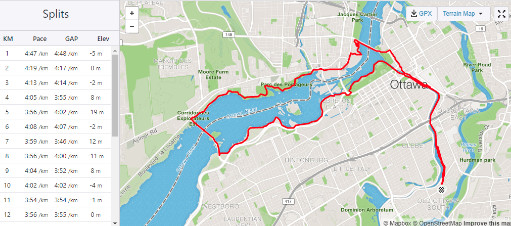
Elapsed time
An egregious amount of elapsed time is a sure-fire way to spot some intentional cheating. When running a virtual race, your watch starts and it doesn’t stop until you’re done the required distance – just like in a real race. You can see elapsed time by clicking on someone’s activity and looking at the stats on the right side, below elevation and calories burned. If someone’s elapsed time is significantly different than their run time in a virtual race, we’ve got a problem.
Bike or car
While an elapsed-time infraction is likely intentional cheating, this one is probably a mistake. If you’ve ever gotten an “Uh Oh” email from Strava, alerting you that your CR has been stolen and their time seems outlandishly fast, it’s because it probably is. If runners forget to pause their watch post-run and hop on their bike or in their car to travel home, they can accidentally record their commute as a world-record paced run and nab several unearned CRs.
A spotty GPS file
Occasionally, GPS signals can act up mid-run, dropping the signal and then picking it up again. Sometimes this slows down a runner’s data, and other times it makes their run look even faster than it actually was. This is totally out of a runner’s control, but nevertheless, bad GPS data happens.
The easiest way to prevent this is by waiting for your signals to load before you start running, preferably while you stand outside. Post-run, look at your map for a “drift” from your path, meaning your GPS route and the actual road or trail don’t line up, or some funny straight lines that suggest your signal was dropped temporarily.
(11/22/2020) ⚡AMPby Running Magazine
Keira D’Amato Is Trying to Break the American 10-Mile Record on Monday. It Could Cost Her Thousands of Dollars.
Since 2011, Keira D’Amato has been part of the race committee for the Credit Union Cherry Blossom Ten Mile Run, the famous Washington, D.C. road race held along the banks of the Potomac River. She’s held a few different roles over the years; recently she’s been responsible for coordinating speakers for clinics at the race expo. This year, Molly Huddle was one of the scheduled speakers, and D’Amato told her she believed Huddle could break the women’s-only American record of 52:12, set by Janet Bawcom at Cherry Blossom in 2014 (coincidentally, D’Amato held the finish line tape for that race). After telling Huddle about the record, D’Amato realized something: I can run that fast too.
Over the following six months, as D’Amato has risen from obscurity to one of the best distance runners in the United States, that statement has become blindingly obvious. After running a personal best 2:34:24 to finish 15th at the Olympic Marathon Trials in February, the 36-year-old has spent the summer and fall demolishing her pbs, from a 15:04 time trial 5,000 on the track in June to a 32:33 10,000 at the MVMNT Race Series in July to a 68:57 to win the Michigan Pro Half Marathon on October 28.
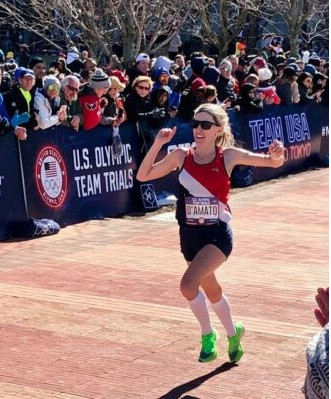
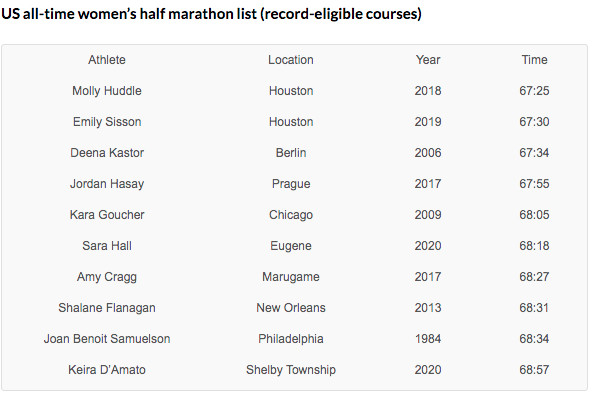
On Monday, D’Amato will try to back up her claim from the spring: she’s going for Bawcom’s record at the Up Dawg Ten Miler, where she’ll face a five-woman professional field that includes Olympian Molly Seidel. And that leads into one of the oddest statistics of a very odd year.
If D’Amato had broken the record at Cherry Blossom in April (which cancelled its 2020 edition due to COVID-19), she would have earned a $10,000 bonus.
If D’Amato breaks the record on Monday — or even if she doesn’t — she could end up out around $8,000.
That’s because D’Amato is covering most of the costs of the Up Dawg Ten Miler, which will take place in an undisclosed location in the DC area. Even though D’Amato is staging a race for five athletes rather than Cherry Blossom’s typical 17,000, several key expenses remain: getting the course USATF-certified and measured, securing park permits and road closures. It can add up quickly.
And then there is drug testing. USATF rules state drug testing is only required to ratify American records in events for which World Athletics recognizes an official world record. Since 10 miles is a “world best” distance, that means drug testing isn’t required to ratify an American record at the Up Dawg Ten Miler — but D’Amato is leaning toward including it anyway to avoid all doubts. However, based on the quote she received from USADA, it would run her an extra $3,000-$3,500. She hasn’t made a final decision yet.
There is an online store selling race merchandise to help offset the cost of the event. And around 20 members of the CUCB organizing committee have also chipped in a total of $2,000 — and, more importantly, their time — so that D’Amato can chase the record.
“If there was a way to measure intensity per person, this race would be much more intense [than the Cherry Blossom Ten Mile Run],” says CUCB event director Phil Stewart. “We’re not dealing with getting 17,000 people entered in the race and moving them around or ordering as many porta potties or things like that, but this is a group of special individuals. I’ve spent a lot of time being consumed by making sure that we have all of the conditions set for the record to be accepted if the record is broken. If Keira or anybody breaks the record here, the worst nightmare would be that there was some little USATF rule that I didn’t know about that was required for an American record to be set.”
Stewart knows that feeling all too well; last year, Stanley Kebenei thought he had broken Greg Meyer‘s American 10-mile record at Cherry Blossom, only for it to be revealed that a set of cones had been improperly placed, making the course 240 feet short (CUCB still paid Kebenei the $10,000 bonus).
With no mass race entries to fund the Up Dawg Ten Miler, CUCB will lose money on the event. But it’s worth it to Stewart to support D’Amato, whose meteoric rise he has followed first-hand — Stewart was among a group of CUCB committee members who traveled to Atlanta to support her in the Trials in February.
“One of the things that has been fun about [this event] is that in a time when there’s so much downbeat news, I think a lot of people have gotten excited about working on something that’s upbeat,” Stewart says.
And D’Amato? Well, in keeping with her carefree, laid back demeanor, she’s trying not to think about the cost and electing to focus on the positives. Five fast women (Susanna Sullivan, Bethany Sachtleben, and Emily Durgin round out the field) are gathering on Monday at 8 a.m. to race 10 miles. There will be a free live stream, with commentary, on the CUCB Facebook page. This should be fun, right? No. This will be fun.
“For me, it’s not about the money at all,” D’Amato says. “Right now when everyone’s starving for motivation and opportunity, I felt like this would be a service to the running community. And it fell in line really perfectly with my training too.”
Keira D’Amato’s return to competitive running began with a joke. Which, if you know anything about D’Amato, could not be more fitting.
D’Amato loves all things humor. The name of Monday’s race, Up Dawg, was her idea — a nod to a joke from The Office. When D’Amato joined Strava a few years ago, she began using jokes or puns to title her runs. Sample entry: November 16. My cousin, a magician, decided to incorporate the use of trapdoors in his shows. But I think it’s just a stage he’s going through. She used to rely on her children’s popsicle sticks for material or by asking her Amazon Alexa, “Tell me a joke.” As she amassed Strava followers (she’s over 2,600 now), she began receiving suggestions from fans — which delights her to no end.
“You have no idea how awesome it is that when people hear a funny joke, they think, Oh, I need to send this to Keira,” she says.
D’Amato’s impishness was on display during Christmas 2016, when she decided to gift her husband, Anthony, an entry to the 2017 Shamrock Marathon, held in March in Virginia Beach.
“Who gives someone a gift of a marathon entry?” D’Amato says. “Because that means you have to start training a lot. It’s kind of a backhanded compliment gift, I guess. But then I felt a little bad, so I signed up too.”
D’Amato was no stranger to running. A four-time All-American at American University under coach Matt Centrowitz, she finished 6th at the 2005 NCAA XC champs as a senior, ahead of future stars Amy Cragg, Molly Huddle, and Jenny Simpson. She remains friendly with the Centrowitz family, and is even in a fantasy football league with Olympic 1500 champ Matthew Centrowitz — let’s just say both D’Amato and Centro are better runners than fantasy football managers.
“I think at one point, I was in second-to-last and he was dead last,” D’Amato says. “But I also think Centro does a whole bunch of them, so maybe in his other leagues he’s doing better. But it was either the first or second week, I played him, and I crushed him.”
After graduating in 2006, D’Amato (then known as Keira Carlstrom) spent a few years running for DC Elite, a post-collegiate group coached by Scott Raczko — better known as the coach of Alan Webb. By 2008, she had lowered her 1500 personal best to 4:22, but was in constant pain, beset by a series of stress fractures and ankle pain. Her issues were the result of a condition known as a tarsal coalition — an abnormal bridging of bones in the foot — but the surgery to correct it was not covered by her insurance.
So D’Amato “retired” and got a job at mortgage giant Freddie Mac. Even after undergoing surgery to correct her condition in 2009 (her new job had better insurance), D’Amato ran sparingly for the next seven years. In her first run back after giving birth to her daughter, Quin, in August 2016 (she also has a six-year-old son, Tommy), D’Amato couldn’t make it through a three-minute run without walking. Yet she steadily built up ahead of Shamrock, and despite hail, sleet, and brutal winds on race day, D’Amato blew past her pre-race goal of 3:25.
“I couldn’t run slow enough to do that pace,” says D’Amato, who ran 3:14.
D’Amato felt there was a lot left in the tank, and took her next marathon, in Richmond in November, more seriously. After running 2:47 there — just two minutes off the Olympic Trials standard — she knew it was time to return to serious training. She reunited with Raczko, and steadily dropped her times while balancing running with her career as a realtor. When she ran a pb of 2:34 to finish 15th at the Trials at age 35, it looked like the culmination of a remarkable three-year journey.
In reality, D’Amato was just getting started.
Since the Trials, D’Amato has run personal bests over almost every distance. Her 15:04 5,000 doesn’t officially count because it came in a time trial rather than a race, but it’s faster than the Olympic standard of 15:10 and would have ranked her 6th in the US during the 2020 outdoor season.
Her most impressive performance came in last month’s Michigan Pro Half Marathon, where she clocked 68:57, 47 seconds ahead of runner-up Emma Bates, a 2:25 marathoner who finished 7th at the Olympic Trials. That made D’Amato the second-fastest American half marathoner on the year, behind Sara Hall, and 10th on the US all-time list. She is now in very elite company.
(11/22/2020) ⚡AMPby LetsRun
Hawks soars to JFK 50 victory in record time
With most major running events having been canceled this year due to the COVID-19 pandemic, opportunities were not to be wasted at the 58th annual JFK 50 Mile ultramarathon in Washington County.
No one seized the chance to showcase their fitness quite the way Hayden Hawks did Saturday.
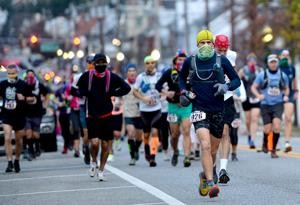
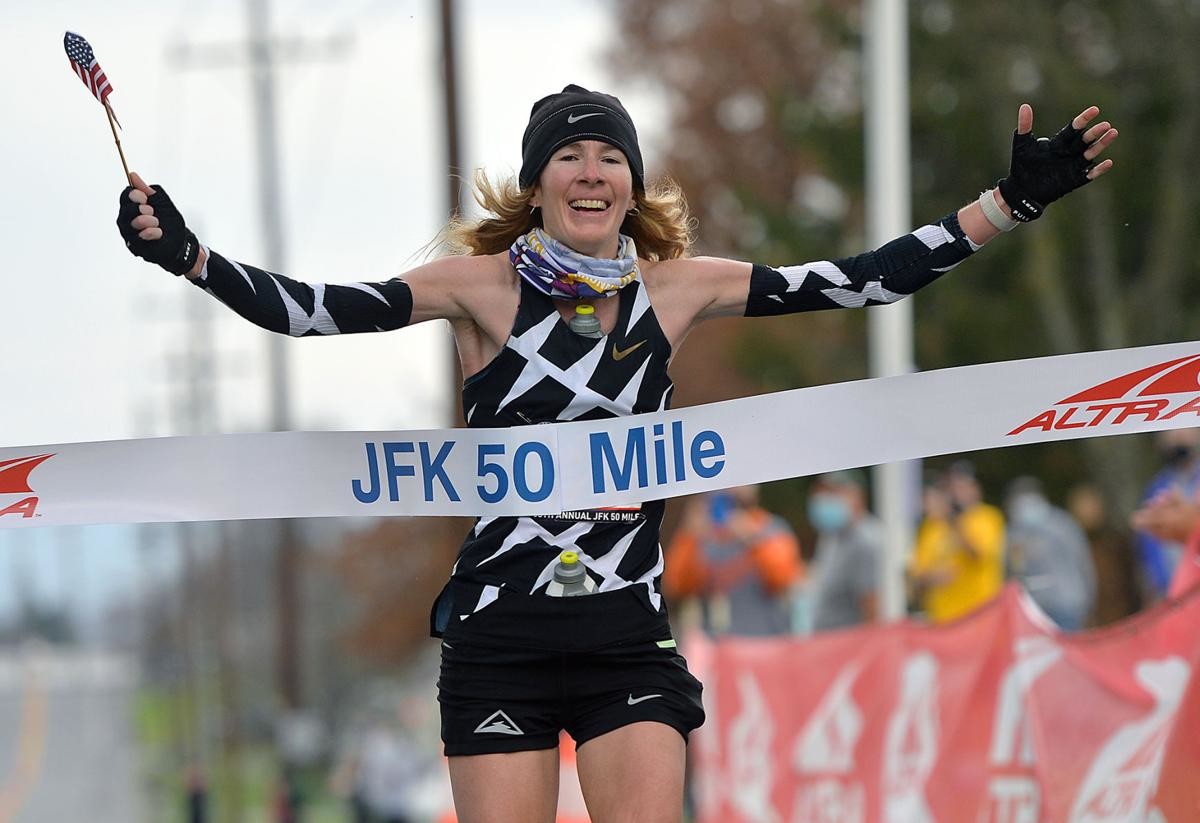
In his debut at the race, Hawks, 29, of Cedar City, Utah, turned in a stunning performance, winning in a course-record time of 5 hours, 18 minutes and 40 seconds — an average of 6:21 per mile.
The women’s title was captured by pre-race favorite Camille Herron in 6:31:14.
“I just really wanted to come out here, have fun and see what I could do. It just all clicked today,” Hawks said. “I kept thinking the whole time during the race how grateful I was to be out here.
“You know, it’s been a hard year for a lot of people, including us as professional athletes. My whole schedule was changed this year. I had all these big plans, competing at all these big things. Of course, all that got canceled, so I just took advantage of the time I had and really dialed everything in — my nutrition, my strength training, my running training — coming into this.
“I was like, you know, I need to be grateful and have gratitude because, really, this might be the first and the last race for a while for me. I was just really fortunate and really happy out there.”
The previous course record was 5:21:29, set by Jim Walmsley in 2016. That was a momentous achievement, as before Saturday, no one else had ever run faster than 5:34:22 in the first 57 years of the event.
“I fully expected Walmsley’s record to stand well into 2040, maybe even 2050,” JFK 50 director Mike Spinnler said. “It was just such a big quantum leap.”
With some help from Walmsley, Hawks took it a step further.
“Jim and I are really good friends. We talk all the time,” Hawks said. “Jim actually gave me some advice coming into this. I was texting him back and forth, asking for shoe advice and what I should do. And he gave me advice.
“He’s a really class-act guy, a really great competitor, and I’m really fortunate to have him as a friend. That’s what we do as competitors. We’re always trying to push each other and reach that next goal. I’m sure Jim is happy for me today to take this course record to the next step, just like I’d be happy for him if he did that as well.”
Stephen Kersh, 29, of Flagstaff, Ariz., placed second in 5:27:07 — the No. 3 performance in race history — in his first JFK.
“I’m definitely pretty happy,” he said. “It was just about as good as it could have been.”
Kersh’s training partners in Flagstaff include Walmsley and two other recent JFK champions, Jared Hazen (2018) and Eric Sensmen (2017).
“I’ve been picking their brains for the last couple months, so I didn’t come into this as green as some people. I knew what to expect,” Kersh said. “Training with those guys, this isn’t as unexpected as maybe some people think, because I’m not really a big name in the sport.”
After the first 15.5-mile segment of the race, mostly comprised of the rocky Appalachian Trail, a lead pack of four — Hawks, Matt Daniels, Hazen and Kersh — took the title fight to the flat C&O Canal towpath for the next 26.3 miles.
“Once we hit the canal path, Matt and I took off,” Hawks said. “We actually train a lot together and are really good friends.
“We talked beforehand about working together on the canal path, and then it would be every man for himself at the end, so that’s what we did. We started clicking off sub-6-minute miles and were feeling very comfortable, having a conversation and feeling really good.
“At Mile 27, I kind of broke Matt a little bit. I think maybe he had a calf injury. He’s been dealing with a lot of injuries over the past few months. Matt on his ‘A’ game would have been hard to beat today.”
Daniels ended up dropping out, and Hazen fell back to a 13th-place finish (6:36:13).
Jonathan Aziz, 29, of Colorado Springs, Colo., finished third in his ultramarathon debut in 5:37:14 — the No. 6 performance in JFK history.
Anthony Kunkel, 28, of Durango, Colo., placed fourth in 5:45:31, and Geoffrey Burns, 30, of Ann Arbor, Mich., took fifth in 5:52:51.
Herron adds to her résumé
In the women’s competition, Herron, 38, of Alamosa, Colo., showed why she was the overwhelming pre-race favorite, leading from start to finish as she won by nearly a half-hour in her first JFK.
Although Herron’s personal record for 50 miles (5:38:41) is an all-time world best, she specializes in even longer events, also owning world-best performances for 100 miles (12:42:40) and 24 hours (167.842 miles).
“Because I was coming down in distance, I felt a little slow and rusty today,” she said.
She had her sights set on the JFK women’s record — 6:12:00, set by Ellie Greenwood in 2012.
Although Herron was off course-record pace on the Appalachian Trail, she had hoped to make up for it on the C&O Canal towpath.
“I was trying to chase time the whole way, and I just didn’t have it. This was the best that I could do today,” she said. “Buy hey, I won. I’m not disappointed for such a crazy year. It’s awesome to even have a race.
“I definitely want to come back,” she said. “I think I have it in me to go for the course record — just keep trying. It’s a stout course record, I can tell you that.”
Sarah Cummings, 31, of Park City, Utah, was the runner-up in 6:57:11, while Haley Moody Gilpin, 31, of Chattanooga, Tenn., placed third in 7:00:52, Alicia Hudelson, 36, of Roswell, Ga., took fourth in 7:14:02, and Sarah Biehl, 26, of Hilliard, Ohio, was fifth in 7:22:32.
(11/22/2020) ⚡AMPRyu Takaku Withdraws from Fukuoka International Marathon
On Nov. 20 the organizers of the Dec. 6 Fukuoka International Marathon announced that invited athlete Ryu Takaku (Yakult), the fastest man in the field with a PB of 2:06:45 from this year's Tokyo Marathon, has withdrawn.
The statement said Takaku is suffering fasciitis of the adductor longus muscle in his right thigh.
(11/21/2020) ⚡AMP
by Brett Larner
Fukuoka Marathon
The Fukuoka International Open Marathon Championship is one of the longest running races in Japan, it is alsoan international men’s marathon race established in 1947. The course record is held by Tsegaye Kebede of Ethiopia, running 2:05:18 in 2009. Frank Shorter won first straight years from 1971 to 1974. Derek Clayton set the World Record here in 1967 running 2:09:37. ...
more...2021 Rock ‘n’ Roll Arizona Marathon cancelled due to COVID-19
The 2021 Rock 'n' Roll Arizona Marathon and half-marathon have been cancelled, organizers said on Friday.
It was originally scheduled to take place Jan. 16-17.
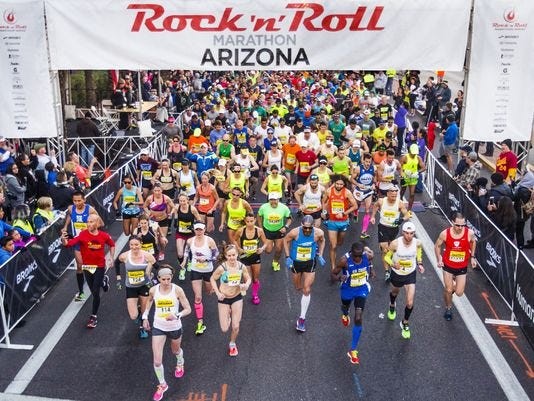
"With the health and safety of our community being an utmost priority, and in alignment with local authorities in relation to the ongoing COVID-19 pandemic, the 2021 Rock ‘n’ Roll Arizona Marathon & ½ Marathon cannot take place as originally scheduled for Jan. 16-17," organizers announced in an email.
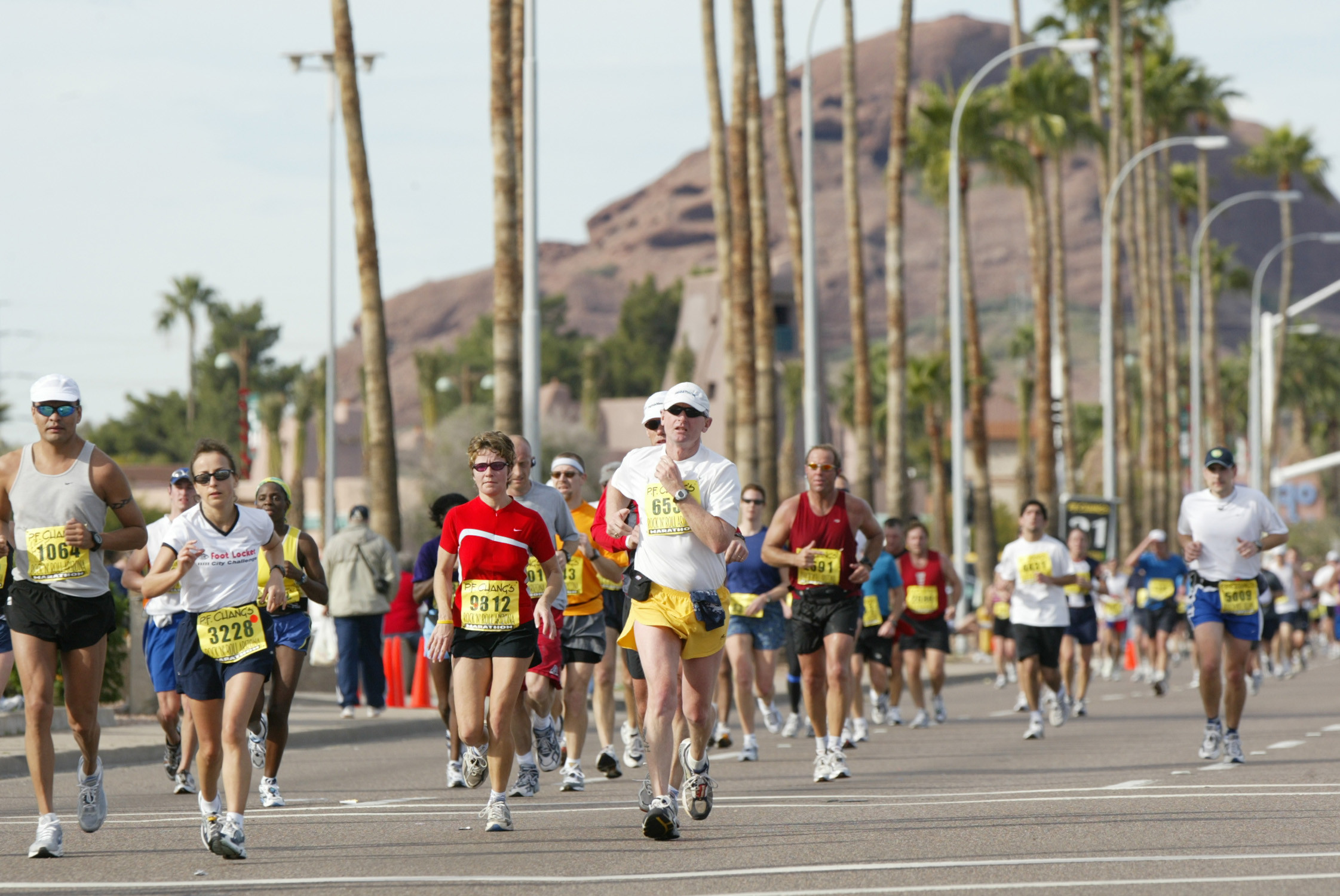
The race is scheduled to return Jan. 15-16, 2022.
The Rock 'n' Roll Arizona Marathon consists of a marathon and half-marathon as well as 10K, 5K and "kids rock" races.
The 2020 events were held on Jan. 18-19, with an estimated 25,000 runners making their way through the streets of Phoenix, Scottsdale and Tempe throughout the weekend.
(11/21/2020) ⚡AMPby Kimi Robinson
Rock N Roll Arizona Marathon
The Marathon and Half-Marathon courses or the new Mini- Marathon or Bike Tour courses take you through the three host cities of Phoenix, Scottsdale and Tempe! The Marathon and Bike Tour start at CityScape in downtown Phoenix, while the Half-Marathon and Mini-Marathon are loop courses launching from downtown Tempe. All the courses end in Tempe at ASU’s Sun Devil and...
more...These Turkey Trot Alternatives May Help You Create New Thanksgiving Traditions
Now is the time to show off your race-directing skills to your household.
In many U.S. households, Thanksgiving isn’t Thanksgiving without a pre-feast turkey trot. In 2018, more than 1.17 million runners registered to run or walk one such race, making the fourth Thursday of November the most popular day of road racing all year. There’s something uniquely satisfying about kicking off the holiday season with a good sweat, alongside family members, running friends, local rivals, and hordes of costumed strangers.
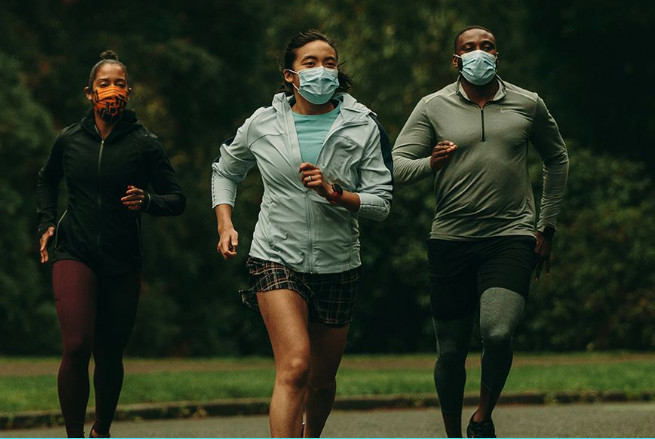
This year, needless to say, will be different. With mass events off the table, large gatherings and travel discouraged, and a global pandemic to respect, turkey trots as we know them won’t be part of the Thanksgiving agenda like usual.
But that doesn’t mean we have to table the trot entirely until 2021. We’ve seen Zoom concerts, balcony celebrations, and drive-by birthday parties; all we need to keep the tradition alive is creativity and a willingness to adapt.
Here are some ideas for a 2020-style turkey trot.
Register for a Virtual Race
What they lack in atmosphere, virtual races make up for in their ability to get runners out the door on a set day in pursuit of a completed distance or fast time. Many of the biggest and longest-running races are going virtual this year, giving runners more flexibility and options than ever.
Keep your local turkey trot streak alive, if you can and want to, or choose one elsewhere that sounds like a fun shake-up of tradition. Some, like America’s Turkey Trot, are sending registrants pumpkin-pie-inspired medals and other swag. Others, like Dallas YMCA Turkey Trot, feature timed and untimed options over multiple distances. Most races donate a portion of their proceeds to a charity, whether that’s a food bank, rehab center, or youth running program.
If there ever were a year to branch out, this is it! Here are some virtual turkey trots that we recommend:
Slow Down With a Walk
From our earliest jogs, many runners are taught that walking is an inferior activity, reserved mostly for elderly people and out-of-shape athletes. Why walk when you can run? There are plenty of reasons to keep moving even if you slow your roll, including aerobic work without much impact, an immune system boost, and improved cognitive functioning.
Most importantly in the context of a national holiday, walking is more inclusive than its quicker counterpart. Grandparents, children, pregnant sisters, and arthritic mothers can all participate—and that alone is reason enough.
An outdoor walk is an especially good option this year, as it gives families a safer way to get together than a close-quartered, indoor gathering. Grab a mask, pick a place to meet, socially distance, and savor this Thanksgiving like you may not have before.
Stage an Intrasquad Competition
Some families take their Thanksgiving Day races seriously: dedicated training, months of smack-talking, sneaky racing tactics, and firmly enforced bets on who will finish first and what the stragglers will owe them. If any of that sounds like the turkey trot you know and love, you may be a good candidate for an intrafamily competition. Depending on how many runners will be present and what your family’s style is, that could take the form of a head-to-head contest or a relay race.
For the first option, map out a course, clarify the rules (e.g., determine how much jostling is allowed), and battle it out for a year-long reign as family champion. If you go the relay route, divide your teams as evenly as possible, determine the distance of each leg, grab a baton-like object for each team, and save your ringers for last. Just don’t blame me if the dinner table conversation is a little more heated than usual this year.
Run a Time Trial
If you’re craving competition but prefer the internal type, there’s always the old-fashioned (and free!) time trial. With this option, you’re not only the racer, but also the race director, course marshal, and fluid-station volunteer. You decide when and where to run—track, trail, road, or treadmill, plus exactly how you want to test yourself.
Though time trials are traditionally run over a set distance, this Thanksgiving is your oyster: you could cover as much ground as possible in a certain amount of time, run maximal efforts over a few different distances (like a one-person track meet), or time your ascent up the biggest hill in town.
Whatever you choose, know that you’re still contributing to the nation’s biggest running holiday, official results or not.
Relish the Rest
Just because racing on Thanksgiving is something you’ve always done doesn’t mean it’s something you have to try to replicate this year—especially if it’s going to add to the stress or sadness of this already tumultuous time.
Maybe you can’t bear the thought of carrying on the family tradition without your typical tribe, isolated as everyone is. Or maybe, after nearly nine months of pandemic life plus an attempt at creating a “normal” holiday, the only reps you feel like doing are those between the couch and the table. Either way, honoring those feelings and relishing this rare opportunity to take a Thanksgiving off is as good a move as any of the racing alternatives above.
(11/21/2020) ⚡AMPby Runner’s World
Kilian Jornet eyes 24-hour world record
The Spanish mountain runner will shift to the track as he attempts to run more than 300K in just 24 hours
Spanish ultrarunning champion Kilian Jornet is known for his feats in the mountains and on the trails, but 2020 is turning out to be a year of firsts for him. In October, he ran the first road 10K of his career, and now he is set to tackle a race on the track. While a track run is certainly out of character for Jornet, he’ll be sticking to his ultrarunning roots as he attempts to break the 24-hour world record of 303.506K. Salomon, Jornet’s main sponsor, has organized the event, which they have titled Phantasm24. The run is slated for some time later this week in Norway, although due to unpredictable weather, Salomon and Jornet have yet to nail down an exact day.
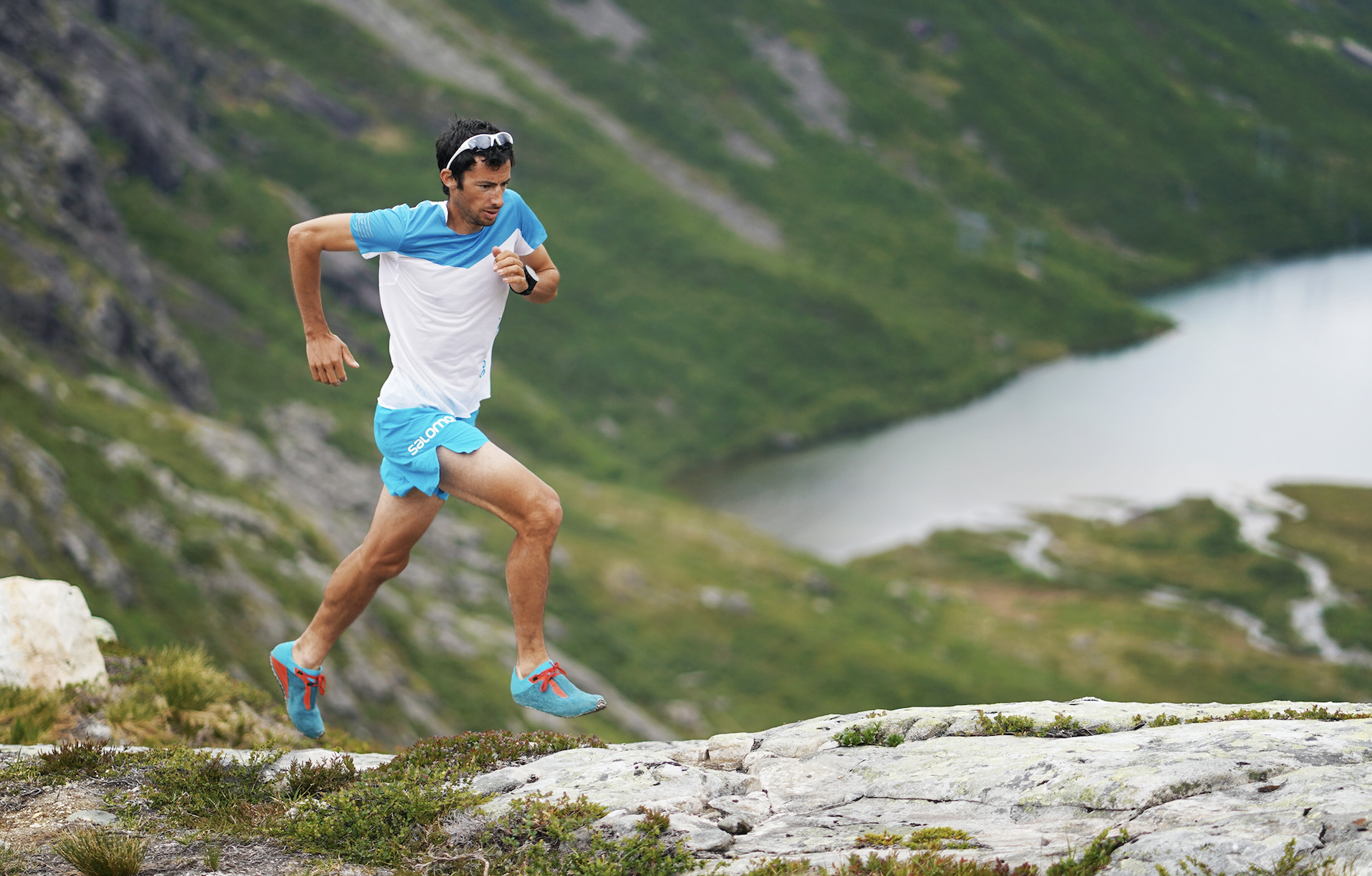
In 1997, Greece’s Yiannis Kouros, arguably the best ultrarunner of all time, set the 24-hour record that Jornet will chase in the Phantasm24 challenge. In the buildup to the run, Salomon is publishing short videos of Jornet explaining how he has prepared for the 24-hour event. In a video posted on Tuesday, Jornet says he has two main concerns going into the record attempt: fuelling and whether his legs will hold up for the entire run.
“To get energy, to be able to eat a lot and not have any gastro problems,” he says, is very important. “And the second one is the legs. I know I can be 24 hours in this effort … but I don’t know … if I will have any problems. Those are the two things I have doubts about.” Jornet has raced and won some brutal races in his career, including the Ultra-Trail du Mont-Blanc and Western States 100, but he has never faced a challenge like the one he’ll encounter in the Phantasm24, which will be a full day of hard laps around a flat track.
“When racing in mountains, it’s easy for me,” Jornet says in another video. “I know how to pace myself, I know how to push, how my muscles will react, how my cardio will react, but on flat, it’s completely different.” He continues to express his doubts later on in the video, saying, “I know [racing on flat ground] is something that I’m not good at, but it’s always important to find new challenges, I think, and to get out of the comfort zone is always good.”
To beat Kouros’s record, Jornet will have to average at least 4:44 per kilometre for the entire run. This is a pace many people struggle to hold for just 5K, and Jornet is hoping to run it for a minimum of 304K. It’s a tall order, and no one has been able to meet it for the past two decades, but if anyone can reach the same heights as Kouros did in 1997, it’s Jornet.
(11/21/2020) ⚡AMPby Running Magazine
California runner doubles up Western States 100 course for 200-mile FKT
The point-to-point Western States 100 route wasn't long enough for Dan Barger, so he turned it into an out-and-back run instead
Auburn, Calif., runner Dan Barger, 55, recently completed an out-and-back variation of the traditionally one-way Western States 100 course, completing the 200-mile (321K) run in the fastest (and only) known time (FKT) of two days, 11 hours, 48 minutes. The Western States race finishes at Placer High School in Auburn, which is where Barger started his run and eventually returned almost 60 hours later. His triumph on the route comes just a few months after a failed attempt to run the same FKT back in August, when extreme heat forced him to call it quits.
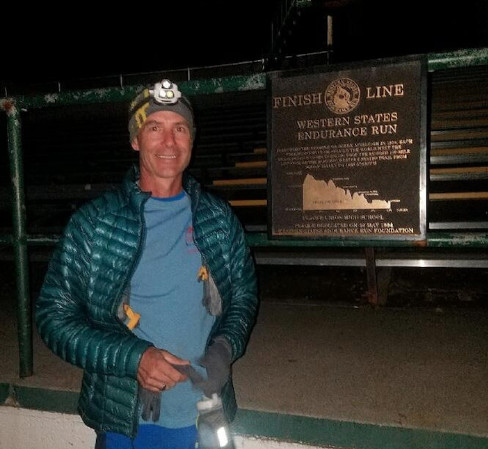
Barger is a seasoned ultrarunner, and he has run the official Western States 100 12 times, first running the storied race back in 1987. His best result came in 1998, when he finished ninth overall in 19:46:32, and his PB for the course is a 17:36:34 from 2010, which was good enough for 10th place. Barger has also raced the UTMB, the Leadville 100 and well over 100 other trail and ultra races dating back to the early ’80s. With close to four decades of trail running experience, it’s no wonder that Barger managed to set the Western States 200 FKT.
n his post-run report on fastestknowntime.com, Barger writes that “The Sierra did not give up this FKT easily.” Following the cancellations of the Tor des Géants and the real Western States 100, he explains, he was looking for a new challenge to test his fitness. “I made an attempt [August 1], throwing in the towel at [Mile 125].”
Undeterred, he planned to give the run another shot in September, but wildfires throughout California made the “air quality hazardous and the [United States Forest Service] closed the trails to all for two weeks.” Knowing that another runner, Scott Sambucci, had an attempt planned for early October, Barger scheduled his for the end of the month. Sambucci’s run, like Barger’s first time on the route, was unsuccessful, leaving the door open for Barger to grab the FKT.
Barger started his second attempt at the Western States 200 on October 30, succeeding in the repeat run and crossing the finish line on the Placer High School track on November 1. In total, he covered 12,515m of elevation gain over the 320K route, which is the equivalent of scaling Mount Everest one and a half times. His average pace for the two-day affair was a little over 11 minutes per kilometre, which, considering the enormous elevation gain and extreme length of the route, is wildly impressive.
(11/21/2020) ⚡AMPby Running Magazine
JFK 50 Mile criticized for COVID risks as cases surge in rural Maryland
The oldest ultramarathon in American is taking heat for running a mass-participation race as COVID cases swell
Tomorrow, American’s oldest ultramarathon will be held in Boonsboro, Md., with close to 1,200 runners set to race. The JFK 50 Mile is an event with a storied history and an impressive lineup for this year’s race. But the event is getting negative press this week due to the local surge in COVID-19 cases, and its existence is being questioned within the ultratrail community as well as the wider public.
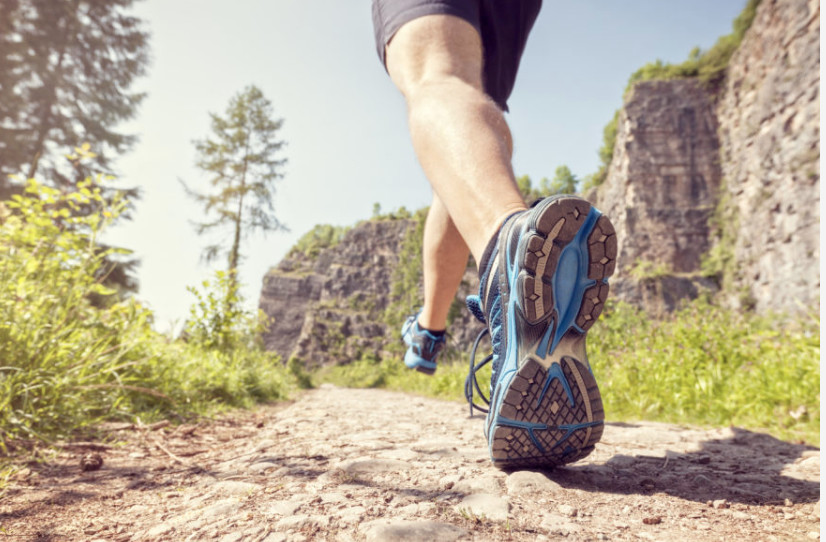
Race organizers have acknowledged the necessity of making the event safe, and even published a COVID-19 Action Plan on the event’s website, but public health officials told The Washington Post they believe an event like this is posing an unnecessary risk, both for competitors and also for local residents. Maria Valeria Fabre, an infectious disease expert, told The Post, “I know it is hard to cancel an event that takes so much time and effort to prepare, but this doesn’t seem to be the best time to hold such an event. We know a lot more now than we knew in March about how Covid-19 is transmitted, and we know that people gathering in this way is a major factor in transmission.”
The point-to-point course starts in Boonsboro and heads south to the Maryland-Virginia border before taking runners north to the finish in Williamsport, Md. The route begins on the road and after 4K of running, transitions onto the Appalachian Trail. Saturday will be the event’s 58th year running.
The event will run waves of 250 runners at a time, which is the state’s limit for outdoor gatherings. All runners must wear a mask at the start of the race until they can safely distance. While the current plan is in line with government orders, the out-of-state travel for the event is a concern. A quick glance at the team lists shows runners coming from Florida, Maryland, New York, West Virginia, Colorado and North Carolina to race.
The event was planned earlier this year when numbers were settling and the future was looking more promising. However, as the fall draws on, cases and hospitalizations continue to rise. The event website states they have every intention of going forward with tomorrow’s race (and, since everyone has already travelled there, it may already be too late to mitigate any effects).
The first wave will be sent off at 6:30 a.m. local time.
(11/21/2020) ⚡AMPby Running Magazine
World record holders Brigid Kosgei and Ababel Yeshaneh are set to clash at Delhi Half Marathon
World record holders Brigid Kosgei and Ababel Yeshaneh have been added to the Airtel Delhi Half Marathon women's ï¬eld, making the 16th edition of this World Athletics Gold Label race on 29 November the strongest in the history of event - and one of the strongest half marathon contests in the world in 2020.
At the Chicago Marathon in October 2019, Kenya’s Kosgei stunned the world when she broke the long-standing women’s world marathon record by more than a minute, clocking 2:14:04. Yeshaneh was a distant second on that occasion but nevertheless still ran a superb personal best of 2:20:51.
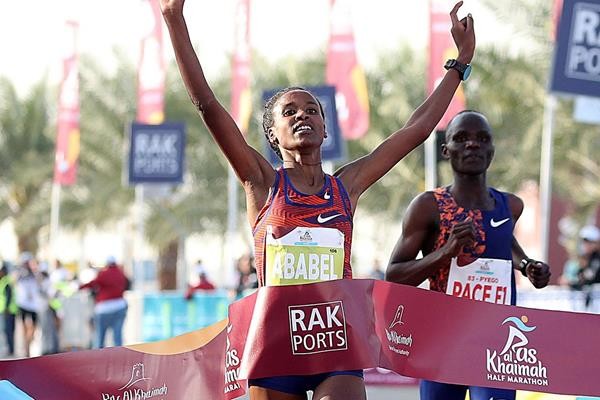
However, the tables were turned at the Ras Al Khaimah Half Marathon in February this year when a head-to-head contest in the final stages of the race saw Ethiopia’s Yeshaneh prevail in a world record 1:04:31 with Kosgei second in 1:04:49.
In their most recent outings last month, the 26-year-old Kosgei won the rescheduled London Marathon in 2:18:58 while the 29-year-old Yeshaneh had to contend with misfortune and fell at the World Athletics Half Marathon Championships in Gdynia, Poland, with just over three kilometres remaining, which took her out of medal contention although she recovered quickly to finish fifth.
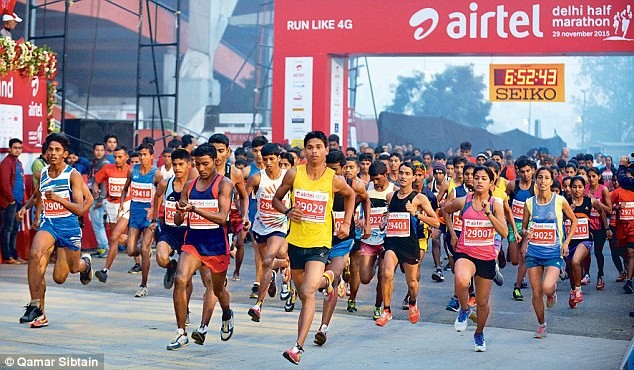
A trio of Ethiopian runners have already been announced that will provide stiff competition for Kosgei and Yeshaneh as well as a host of other world class athletes.
Women's course record holder Tsehay Gemechu is seeking an unprecedented third successive victory. In 2019, Gemechu improved her own course record from 12 months earlier by no less than 50 seconds when she stopped the clocking 1:06:00.
Yeshaneh and Gemechu's compatriots on the start line in in the Jawaharlal Nehru Stadium include Yalemzerf Yehualaw and Netsanet Gudeta.
Yehualaw ï¬nished second in the ADHM 2019, just one second behind Gemechu, and third at the 2020 World Championships last month in a personal best of 1:05:19 while Gudeta finished eighth in Poland but was the 2018 world half marathon champion.
Both the men's and women's races have first prize cheques of US$27,000, part of a total prize money purse (combined men and women) of US$233,270.
Strict safety measures in place
This year's race will be unlike any previous edition with only an estimated 60 elite international and Indian runners in action on the Delhi roads, with the traditional start and finish still in the Jawaharlal Nehru Stadium. The event will follow the highest level of safety standards, with bio-secure zones to ensure a COVID-free race for the runners. All mandatory protocols in line with the advisories issued by the Government of India have been established for the event crew, vendors and suppliers, elite athletes, media and all guests.
(11/21/2020) ⚡AMPby World Athletics
Vedanta Delhi Half Marathon
The Airtel Delhi Half Marathon is a haven for runners, creating an experience, that our citizens had never envisaged. The streets of Delhi converted to a world-class running track. Clean, sanitized road for 21.09 kms, exhaustive medical support system on the route, timing chip for runners, qualified personnel to ensure smooth conduct of the event across departments. The race...
more...Participants able to take part in St. Jude Rock ‘n’ Roll VR Nashville despite cancellation
Despite not being able to physically join each other at the Rock ‘n’ Roll Nashville Marathon and ½ Marathon start line for the first time in over 20 years due to the recent impacts of Covid -19, the Rock ‘n’ Road Trip will bring Broadway to the global running community, offering five different distances to highlight one of the most iconic Rock ‘n’ Roll Marathon Series destinations.
Following a virtual stop in Vegas that saw over 10,000 participants lace up for Rock ‘n’ Roll VR Las Vegas, the Rock ‘n’ Road Trip makes its way to Nashville providing participants a virtual tour of Music City. St. Jude Rock ‘n’ Roll VR Nashville will offer participants a Marathon, Half Marathon, 6.15K, 5K, 1-Mile and Remix challenge options to participate in. Registration for the St. Jude Rock ‘n’ Roll VR Nashville remains open and available for FREE to the entire global community from Nov. 20 - Nov. 22. All Rock ‘n’ Roll® Virtual Running™ (VR™) Series races during the Rock ‘n’ Road Trip begin weekly on Fridays at 5 a.m. ET and close Sundays at 11:59 p.m. ET with participants being able to compete in the virtual tour stop anywhere, indoors or outdoors, as long as the distance of their choosing is completed in one session.
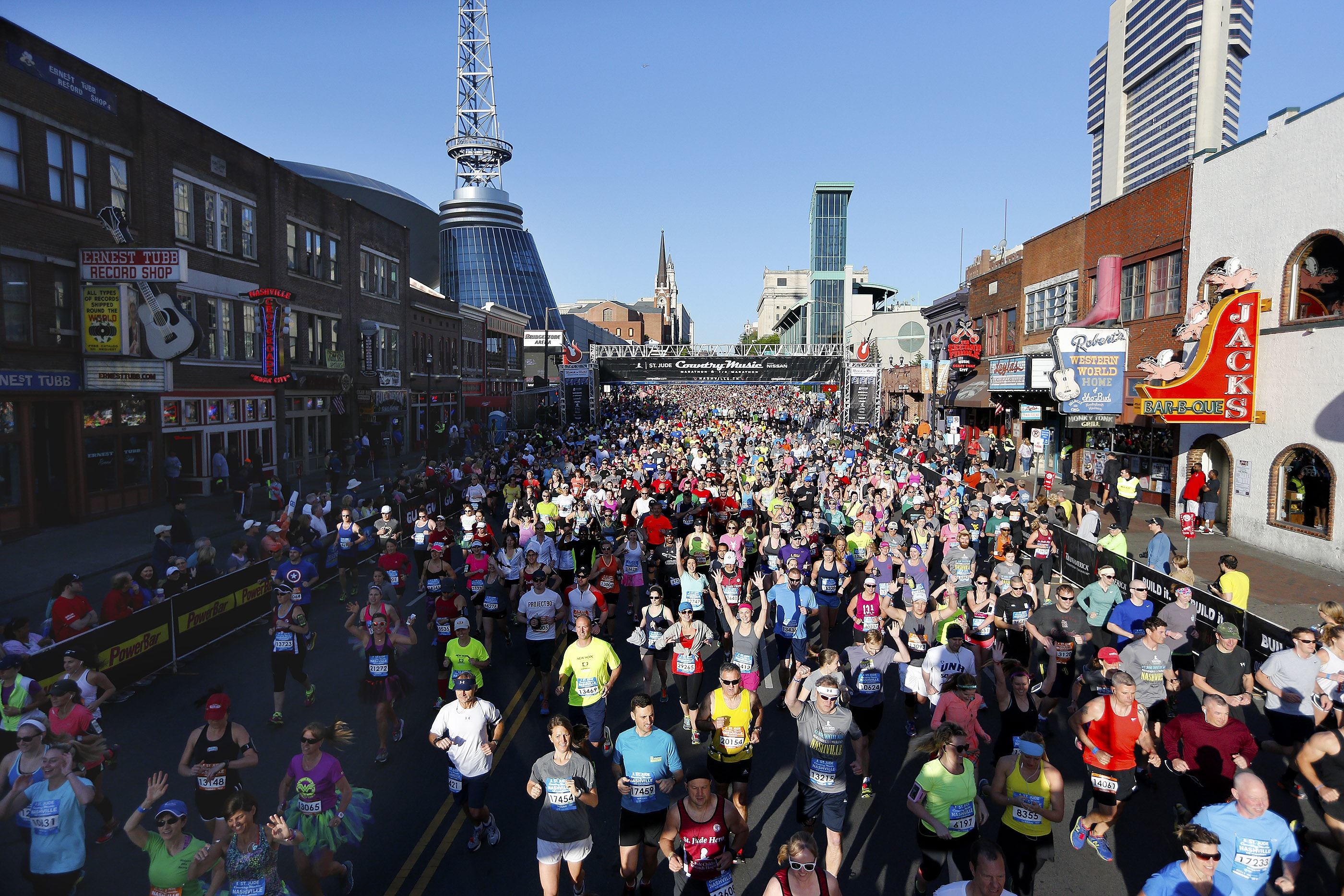
“While we were all looking forward to once again providing in-person racing options in Nashville, the Rock ‘n’ Road Trip on the Rock ‘n’ Roll Virtual Running Club platform continues to provide the global running community a way to be competitive, stay active and engaged in what makes our event locations so special,” said Elizabeth O’Brien, Managing Director for North America at the IRONMAN Group.
“The virtual Rock ‘n’ Road Trip will provide participants both in Nashville and across the globe an option to channel the best of what Music City has to offer.”
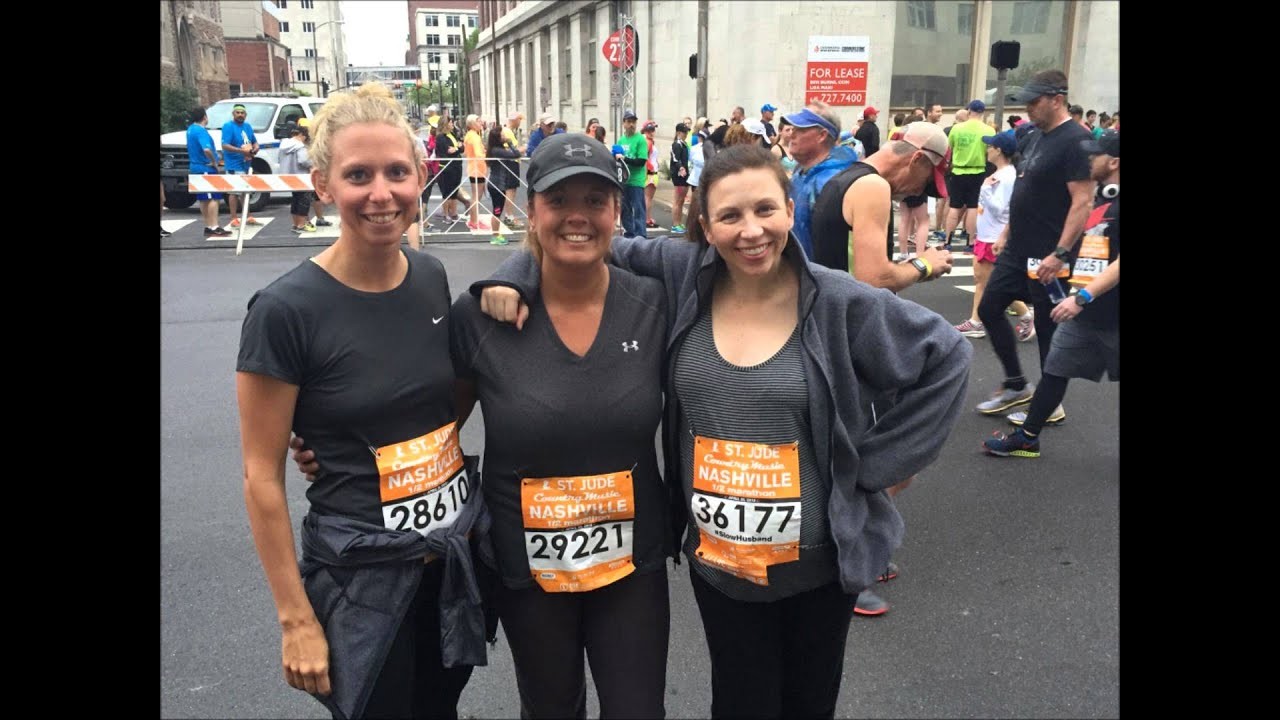
Nashville InspiredRock ‘n’ Roll Virtual Club participants are encouraged to be Nashville inspired in their virtual activities and share photos and videos on social media by tagging #RnRVRNashville. Don’t live along Broadway, no problem. Here are several reasons why we love Nashville as well as some Rock ‘n’ Roll Road Trip prep on how runners and walkers can experience the best of the Country Music Capital in their own communities.
Music every step of the way: The race features 26 stages featuring the same bands every year so runners can look forward to friendly faces and familiar tunes. Les Kerr has even played at Stage 1 with his band Les Kerr and The Bayou Band every year for the event’s 20-year legacy. There is more live music at this event than most other races, including at the Expo and at the Kid’s Race. Find a local concert venue and run past with your best tunes on, like the sounds of Nashville were just around the corner.
Run 32 Laps for All 32 Honky Tonks: Make your miles count, the miles you run correspond to the bars Nashville is famous for. So, queue up some country, bluegrass, and blues and crank out those kilometers as you pass the likes of Nashville Underground, Tequila Cowboy, Paradise Park and Tin Roof Broadway, among the 32 iconic Honky Tonks lining Broadway in downtown Nashville.
A Marathon for Music Nuts: The Rock ‘n’ Roll Nashville course, both 13.1 and 26.2 miles is a perfect run for the inner music lovers. Runners pass numerous famous recording studios, such as Dolly Parton’s rehearsal studio. Other highlights include running past the spot where Elvis Presley recorded “Ask Me” and “Memphis Tennessee,” and hearing the entire Belmont Church Choir serenade you from the steps of the church. Crank up the inspiration and high tail it past your favorite running locations as if you were running past a slice of music history.
(11/20/2020) ⚡AMPSt. Jude Rock N Roll Nashville Marathon & 1/2 Marathon
The St. Jude Rock ‘n’ Roll Nashville Marathon & 1/2 Marathon (formerly St. Jude Country Music Marathon & 1/2 Marathon) gives you the opportunity to enjoy an up close and personal tour of Music City, one of the New York Times’ top destinations in the world! Run through the Honky Tonks of Lower Broadway and take a musical tour through...
more...Sanya Richards-Ross and Ato Boldon will host the World Athletics Awards 2020
World Athletics is delighted to announce that legendary sprint stars Sanya Richards-Ross and Ato Boldon will host the World Athletics Awards 2020, to be staged as a virtual event on Saturday 5 December.
Richards-Ross, who raced to the world 400m title in 2009 and captured Olympic gold in the event in 2012, will host the event for the first time while Boldon, the 1997 world 200m champion and a four-time Olympic medallist in the 100m and 200m, will reprise his role, having hosted the event before.
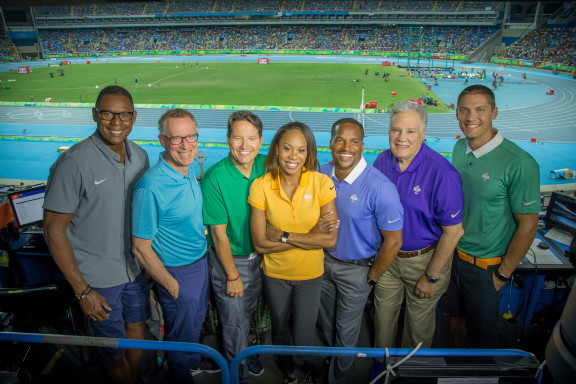
Richards-Ross and Boldon, who both now work as television commentators, took a brief break from their preparations to share some thoughts about the past season and the upcoming World Athletics Awards 2020, which will be streamed live on the World Athletics YouTube channel, its Facebook page and via Twitter.
(11/20/2020) ⚡AMPby World Athletics
Belarus NOC claim preparations remain on course for Tokyo 2020 despite protests against its President
The National Olympic Committee of the Republic of Belarus (NOC Belarus) has claimed preparations for next year's re-arranged Olympic Games remain on track, despite the widespread protests in the country which could threaten the team's under its own flag in Tokyo.
Discussions were held between the NOC Belarus vice-president Viktar Lukashenka, the Deputy Prime Minister of the Republic of Belarus Igor Petrishenko and the Minister of Sport and Tourism, Sergey Kovalchuk.
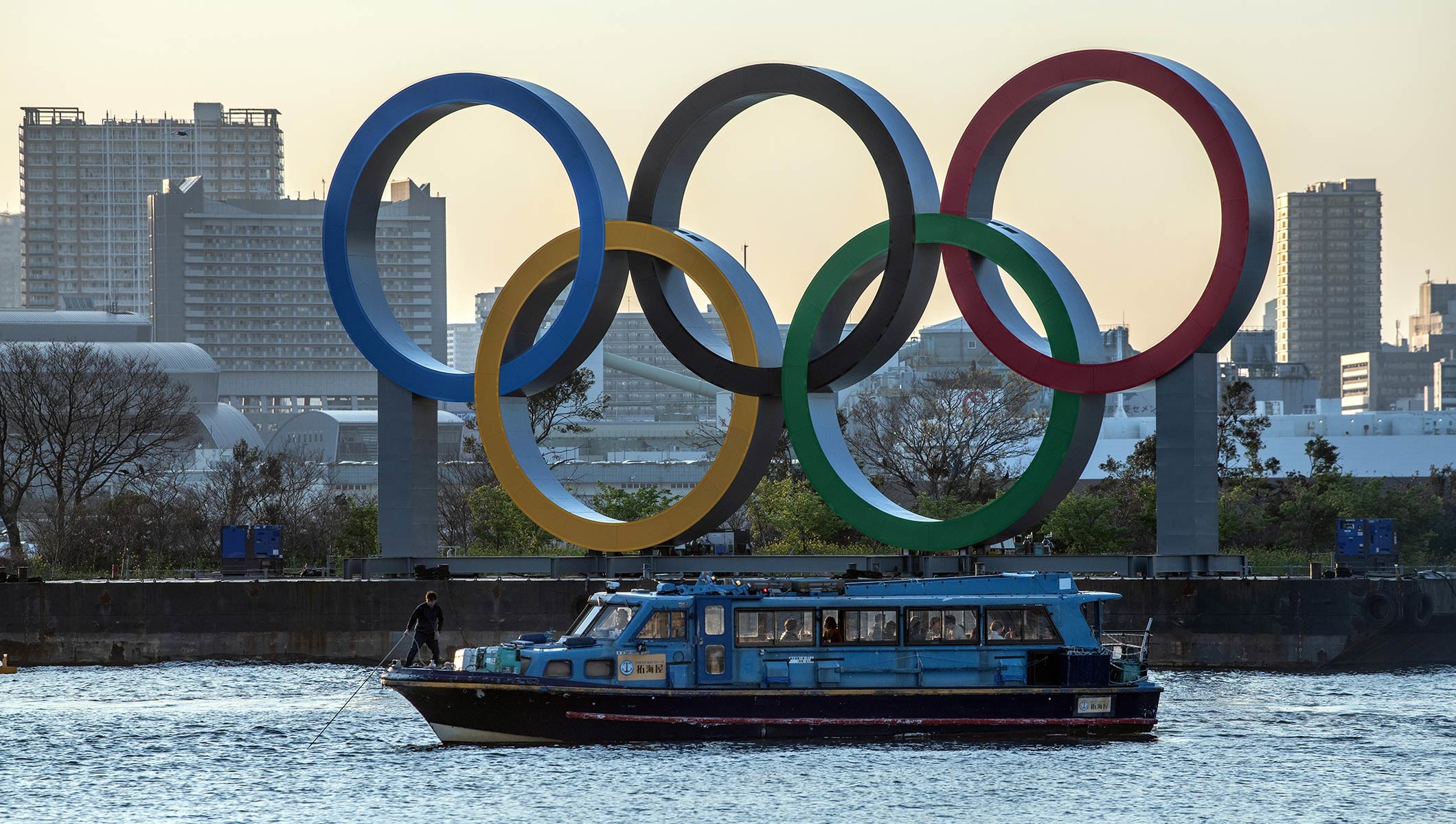
Heads and representatives of sports associations attended the meeting, as well as coaches and athletes.
Along with discussions about the upcoming Summer and the 2022 Winter Olympic Games in Beijing, issues surrounding the psychological climate of training during the COVID-19 pandemic.

Many athletes have been at the forefront of the protests against the controversial re-election of Alexander Lukashenko as President.
The Beijing 2008 decathlon silver medallist Andrei Kravchenko among those arrested, despite not taking part in demonstrations against the Government.
Some athletes, however, have remained loyal to the Government and publicly thanked them for the help they have received.
"We work on a scheduled basis in athletics, all our wishes are fulfilled," Maksim Nedasekau, the European Games high jump gold medallist, said.
"We'd really like more of the competitions yet little depends on the athletes here.
"We use this time for recovery and treatment if necessary and our athletes have everything for it.
"They are currently training at the Raubichi sports complex which has excellent facilities even for high jumpers."
Head coach of the national athletics team, Yuri Moisevich claimed that facilities in the country had greatly improved in recent years and thanked the Belarusian Government for that.
However, the IOC continues to investigate the NOC Belarus following recent allegations of political discrimination against athletes.
Belarusians have been leading pro-democracy protests since August when Lukashenko was re-elected, despite evidence of an unfair contest.
Lukashenko has been the only leader of the country since the dissolution of the Soviet Union, holding his position since 1994.
He is often referred to as "Europe's last dictator", with the nation facing criticism for its human rights breaches.
Lukashenko is also the President of the NOC Belarus.
The IOC has warned the NOC Belarus could face sanctions - including a ban of the Belarus flag at Tokyo 2020 and Beijing 2022 - if it finds the NOC has breached the Olympic Charter.
With the Tokyo 2020 Games being scheduled for July 23 to August 8 2021, Belarusian athletes have already secured 71 spots in 15 sports.
There are expected to be around 100 athletes at Tokyo 2020 by the end of qualification in June 2021.
(11/20/2020) ⚡AMPby Michael Houston
Tokyo 2020 Olympic Games
Fifty-six years after having organized the Olympic Games, the Japanese capital will be hosting a Summer edition for the second time, originally scheduled from July 24 to August 9, 2020, the games were postponed due to coronavirus outbreak, the postponed Tokyo Olympics will be held from July 23 to August 8 in 2021, according to the International Olympic Committee decision. ...
more...

